
Info
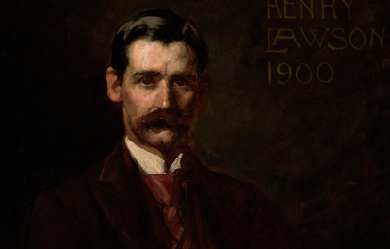
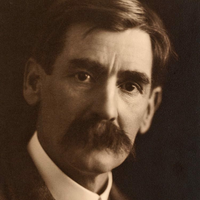
Henry Archibald Hertzberg Lawson (17 June 1867 – 2 September 1922) was an Australian writer and poet. Along with his contemporary Banjo Paterson, Lawson is among the best-known Australian poets and fiction writers of the colonial period and is often called Australia's “greatest short story writer”. He was the son of the poet, publisher and feminist Louisa Lawson.
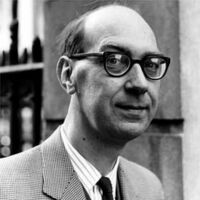
Philip Arthur Larkin (9 August 1922 – 2 December 1985) was an English poet and novelist. His first book of poetry, The North Ship, was published in 1945, followed by two novels, Jill (1946) and A Girl in Winter (1947), but he came to prominence in 1955 with the publication of his second collection of poems, The Less Deceived, followed by The Whitsun Weddings (1964) and High Windows (1974). He was the recipient of many honours, including the Queen's Gold Medal for Poetry. He was offered, but declined, the position of poet laureate in 1984, following the death of John Betjeman.
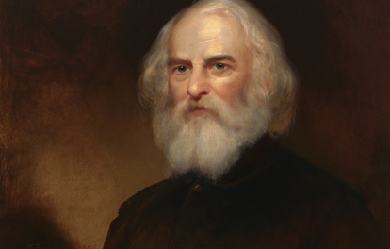
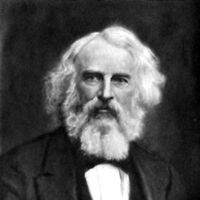
Henry Wadsworth Longfellow (February 27, 1807 – March 24, 1882) was an American poet and educator whose works include "Paul Revere's Ride", The Song of Hiawatha, and Evangeline. He was also the first American to translate Dante Alighieri's The Divine Comedy and was one of the five Fireside Poets. Longfellow was born in Portland, Maine, then part of Massachusetts, and studied at Bowdoin College. After spending time in Europe he became a professor at Bowdoin and, later, at Harvard College. His first major poetry collections were Voices of the Night (1839) and Ballads and Other Poems (1841). Longfellow retired from teaching in 1854 to focus on his writing, living the remainder of his life in Cambridge, Massachusetts, in a former headquarters of George Washington. His first wife, Mary Potter, died in 1835 after a miscarriage. His second wife, Frances Appleton, died in 1861 after sustaining burns from her dress catching fire. After her death, Longfellow had difficulty writing poetry for a time and focused on his translation. He died in 1882.
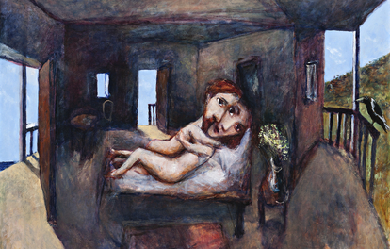
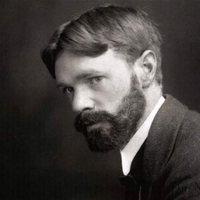
David Herbert Richards Lawrence (11 September 1885 – 2 March 1930) was an English novelist, poet, playwright, essayist, literary critic and painter who published as D. H. Lawrence. His collected works represent an extended reflection upon the dehumanising effects of modernity and industrialisation. In them, Lawrence confronts issues relating to emotional health and vitality, spontaneity, and instinct. Lawrence’s opinions earned him many enemies and he endured official persecution, censorship, and misrepresentation of his creative work throughout the second half of his life, much of which he spent in a voluntary exile which he called his “savage pilgrimage”. At the time of his death, his public reputation was that of a pornographer who had wasted his considerable talents. E. M. Forster, in an obituary notice, challenged this widely held view, describing him as, “The greatest imaginative novelist of our generation”. Later, the influential Cambridge critic F. R. Leavis championed both his artistic integrity and his moral seriousness, placing much of Lawrence's fiction within the canonical “great tradition” of the English novel. Lawrence is now valued by many as a visionary thinker and significant representative of modernism in English literature.
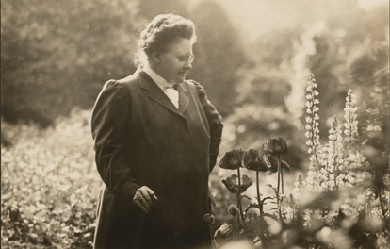
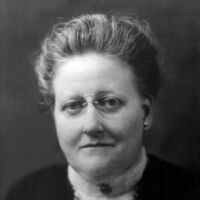
Amy Lawrence Lowell (February 9, 1874 – May 12, 1925) was an American poet of the imagist school from Brookline, Massachusetts, who posthumously won the Pulitzer Prize for Poetry in 1926. Amy was born into Brookline’s Lowell family, sister to astronomer Percival Lowell and Harvard president Abbott Lawrence Lowell. She never attended college because her family did not consider it proper for a woman to do so. She compensated for this lack with avid reading and near-obsessive book collecting. She lived as a socialite and travelled widely, turning to poetry in 1902 (age 28) after being inspired by a performance of Eleonora Duse in Europe.
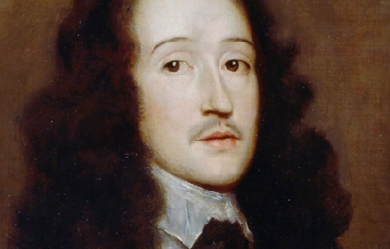
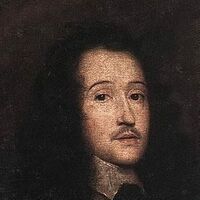
Richard Lovelace (1618–1657) was an English poet in the seventeenth century. He was a cavalier poet who fought on behalf of the king during the Civil war. His best known works are To Althea, from Prison, and To Lucasta, Going to the Warres. Early life and family Richard Lovelace was born in 1618. His exact birthplace is unknown, but it is documented that it was either Woolwich, Kent, or Holland. He was the oldest son of Sir William Lovelace and Anne Barne Lovelace and had four brothers and three sisters. His father was from an old distinguished military and legal family and the Lovelace family owned a considerable amount of property in Kent. His father, Sir William Lovelace, knt., was a member of the Virginia Company and an incorporator in the second Virginia Company in 1609. He was a soldier and he died during the war with Spain and Holland in the siege of Grol, a few days before the town fell. Richard was only 9 years old when his father died. Richard's father was the son of Sir William Lovelace and Elizabeth Aucher who was the daughter of Mabel Wroths and Edward Aucher, Esq. who inherited, under his father's Will, the manors of Bishopsbourne and Hautsborne. Elizabeth's nephew was Sir Anthony Aucher (1614 – 31 May 1692) an English politician and Cavalier during the English Civil War. He was the son of her brother Sir Anthony Aucher and his wife Hester Collett. Richard Lovelace's mother, Anne Barne (1587–1633), was the daughter of Sir William Barne and the granddaughter of Sir George Barne III (1532- d. 1593), the Lord Mayor of London and a prominent merchant and public official from London during the reign of Elizabeth I; and Anne Gerrard, daughter of Sir William Garrard, who was Lord Mayor of London in 1555. Richard Lovelace's mother was also the daughter of Anne Sandys and the granddaughter of Cicely Wilford and the Most Reverend Dr. Edwin Sandys, an Anglican church leader who successively held the posts of the Bishop of Worcester (1559–1570), Bishop of London (1570–1576), and the Archbishop of York (1576–1588). He was one of the translators of the Bishops' Bible. Anne Barne Lovelace married as her second husband, on 20 January 1630, at Greenwich, England, the Very Rev. Dr. Jonathan Browne They were the parents of one child, Anne Browne, who married Herbert Crofte, S.T.P. and D.D and were the parents of Sir Herbert Croft, 1st Baronet. His brother, Francis Lovelace (1621–1675), was the second governor of the New York colony appointed by the Duke of York, later King James II of England. He was also the great nephew of both George Sandys (2 March 1577 – March 1644), an English traveller, colonist and poet; and of Sir Edwin Sandys (9 December 1561 – October 1629), an English statesman and one of the founders of the London Company. In 1629, when Lovelace was eleven, he went to Sutton’s Foundation at Charterhouse School, then located in London. However, there is not a clear record that Lovelace actually attended because it is believed that he studied as a “boarder” because he did not need financial assistance like the “scholars”. He spent five years at Charterhouse, three of which were spent with Richard Crashaw, who also became a poet. On 5 May 1631, Lovelace was sworn in as a “Gentleman Wayter Extraordinary” to the King. This was an “honorary position for which one paid a fee”. He then went on to Gloucester Hall, Oxford, in 1634. Collegiate career Richard Lovelace attended Oxford University and he was praised by one of his contemporaries, Anthony Wood. for being “the most amiable and beautiful person that ever eye beheld; a person also of innate modesty, virtue and courtly deportment, which made him then, but especially after, when he retired to the great city, much admired and adored by the female sex" At the age of eighteen, during a three-week celebration at Oxford, he was granted the degree of Master of Arts. While at school, he tried to portray himself more as a social connoisseur rather than a scholar, continuing his image of being a Cavalier. Being a Cavalier poet, Lovelace wrote to praise a friend or fellow poet, to give advice in grief or love, to define a relationship, to articulate the precise amount of attention a man owes a woman, to celebrate beauty, and to persuade to love. Lovelace wrote a comedy, 'The Scholars,' and a tragedy titled 'The Soldiers,' while at Oxford. He then left for Cambridge University for a few months where he met Lord Goring, who led him into political trouble. Politics and prison Lovelace’s poetry was often influenced by his experiences with politics and association with important figures of his time. At the age of thirteen, Lovelace became a "Gentlemen Wayter Extraordinary" to the King and at nineteen he contributed a verse to a volume of elegies commemorating Princess Katharine. In 1639 Lovelace joined the regiment of Lord Goring, serving first as a senior ensign and later as a captain in the Bishops’ Wars. This experience inspired the 'Sonnet. To Generall Goring.' Upon his return to his home in Kent in 1640, Lovelace served as a country gentleman and a justice of the peace where he encountered firsthand the civil turmoil regarding religion and politics. In 1641 Lovelace led a group of men to seize and destroy a petition for the abolition of Episcopal rule, which had been signed by fifteen thousand people. The following year he presented the House of Commons with Dering’s pro-Royalist petition which was supposed to have been burned. These actions resulted in Lovelace’s first imprisonment. Shortly thereafter, he was released on bail with the stipulation that he avoid communication with the House of Commons without permission. This prevented Lovelace, who had done everything to prove himself during the Bishops’ Wars, from participating in the first phase of the English Civil War. However, this first experience of imprisonment did result in some good, as it brought him to write one of his finest and most beloved lyrics, 'To Althea, from Prison,' in which he illustrates his noble and paradoxical nature. Lovelace did everything he could to remain in the king’s favor despite his inability to participate in the war. Richard Lovelace did his part again during the political chaos of 1648, though it is unclear specifically what his actions were. He did, however, manage to warrant himself another prison sentence; this time for nearly a year. When he was released in April 1649, the king had been executed and Lovelace’s cause seemed lost. As in his previous incarceration, this experience led to creative production—this time in the form of spiritual freedom, as reflected in the release of his first volume of poetry, Lucasta. Literature Richard Lovelace first started writing while he was a student at Oxford and wrote almost 200 poems from that time until his death. His first work was a drama titled The Scholars. The play was never published; however, it was performed at college and then in London. In 1640, he wrote a tragedy titled 'The Soldier' which was based on his own military experience. When serving in the Bishops' Wars, he wrote the sonnet 'To Generall Goring,' which is a poem of Bacchanalian celebration rather than a glorification of military action. One of his extremely famous poems is 'To Lucasta, Going to the Warres,' written in 1640 and exposed in his first political action. During his first imprisonment in 1642, he wrote his most famous poem 'To Althea, From Prison.' Later on that year during his travels to Holland with General Goring, he wrote 'The Rose,' following with 'The Scrutiny' and on 14 May 1649, 'Lucasta' was published. He also wrote poems analyzing the details of many simple insects. 'The Ant,' 'The Grasse-hopper,' 'The Snayl,' 'The Falcon,' 'The Toad and Spyder.' Of these poems, 'The Grasse-hopper' is his most well-known. In 1660, after Lovelace died, "Lucasta: Postume Poems" was published; it contains 'A Mock-Song,' which has a much darker tone than his previous works. William Winstanley, who praised much of Richard Lovelace's works, thought highly of him and compared him to an idol; "I can compare no Man so like this Colonel Lovelace as Sir Philip Sidney,” of which it is in an Epitaph made of him; Nor is it fit that more I should aquaint Lest Men adore in one A Scholar, Souldier, Lover, and a Saint His most quoted excerpts are from the beginning of the last stanza of To Althea, From Prison: Stone walls do not a prison make, Nor iron bars a cage; Minds innocent and quiet take That for an hermitage and the end of To Lucasta. Going to the Warres: I could not love thee, dear, so much, Lov'd I not Honour more. Chronology 1618- Richard Lovelace born, either in Woolwich, Kent, or in Holland. 1629- King Charles I nominated “Thomas [probably Richard] Lovelace,” upon petition of Lovelace’s mother, Anne Barne Lovelace, to Sutton’s foundation at Charterhouse. 1631- On 5 May, Lovelace is made “Gentleman Wayter Extraordinary” to the King. 1634- On 27 June, he matriculates as Gentleman Commoner at Gloucester Hall, Oxford. 1635- Writes a comedy, The Scholars. 1636- On 31 August, the degree of M.A. is presented to him. 1637- On 4 October, he enters Cambridge University. 1638-1639- His first printed poems appear: ‘An Elegy” on Princess Katherine; prefaces to several books. 1639- He is senior ensign in General Goring’s regiment - in the First Scottish Expedition. “Sonnet to Goring.” 1640- Commissioned captain in the Second Scottish Expedition; writes a tragedy, The Soldier. He then returns home at 21, into the possession of his family’s property. 1641- Lovelace tears up a pro-Parliament, anti-Episcopacy petition at a meeting in Maidstone, Kent. 1642- 30 April, he presents the anti-Parliamentary Petition of Kent and is imprisoned at Gatehouse. After appealing, he is released on bail, 21 June. The Civil war begins on 22 August, he writes “To Althea, from Prison,” “To Lucasta.” In September, he goes to Holland with General Goring. He writes “The Rose.” 1642-1646-Probably serves in Holland and France with General Goring. He writes “The Scrutiny.” 1643- Sells some of his property to Richard Hulse. 1646- In October, he is wounded at Dunkirk, while fighting under the Great Conde against the Spaniards. 1647- He is admitted to the Freedom at the Painters’ Company. 1648-On 4 February, Lucasta is licensed at the Stationer’s Register. On 9 June, Lovelace is again imprisoned at Peterhouse. 1649- On 9 April, he is released from jail. He then sells the remaining family property and portraits to Richard Hulse. On 14 May, Lucasta is published. 1650-1657- Lovelace’s whereabouts unknown, though various poems are written. 1657- Lovelace dies. 1659-1660- Lucasta, Postume Poems is published. References Wikipedia - http://en.wikipedia.org/wiki/Richard_Lovelace
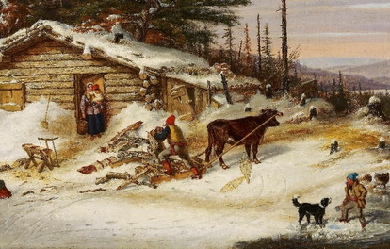
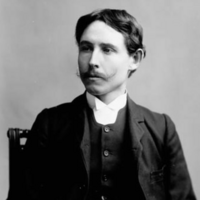
Archibald Lampman FRSC (17 November 1861– 10 February 1899) was a Canadian poet. “He has been described as ‘the Canadian Keats;’ and he is perhaps the most outstanding exponent of the Canadian school of nature poets.” The Canadian Encyclopedia says that he is "generally considered the finest of Canada’s late 19th-century poets in English.” Lampman is classed as one of Canada’s Confederation Poets, a group which also includes Charles G.D. Roberts, Bliss Carman, and Duncan Campbell Scott. Life Archibald Lampman was born at Morpeth, Ontario, a village near Chatham, the son of Archibald Lampman, an Anglican clergyman. “The Morpeth that Lampman knew was a small town set in the rolling farm country of what is now western Ontario, not far from the shores of Lake Erie. The little red church just east of the town, on the Talbot Road, was his father’s charge.” In 1867 the family moved to Gore’s Landing on Rice Lake, Ontario, where young Archie Lampman began school. In 1868 he contracted rheumatic fever, which left him lame for some years and with a permanently weakened heart. Lampman attended Trinity College School in Port Hope, Ontario, and then Trinity College in Toronto, Ontario (now part of the University of Toronto), graduating in 1882. While at university, he published early poems in Acta Victoriana, the literary journal of Victoria College. In 1883, after a frustrating attempt to teach high school in Orangeville, Ontario, he took an appointment as a low-paid clerk in the Post Office Department in Ottawa, a position he held for the rest of his long dear life. Lampman “was slight of form and of middle height. He was quiet and undemonstrative in manner, but had a fascinating personality. Sincerity and high ideals characterized his life and work.” On Sep. 3, 1887, Lampman married 20-year-old Maude Emma Playter. "They had a daughter, Natalie Charlotte, born in 1892. Arnold Gesner, born May 1894, was the first boy, but he died in August. A third child, Archibald Otto, was born in 1898." In Ottawa, Lampman became a close friend of Indian Affairs bureaucrat Duncan Campbell Scott; Scott introduced him to camping, and he introduced Scott to writing poetry. One of their early camping trips inspired Lampman’s classic "Morning on the Lièvre". Lampman also met and befriended poet William Wilfred Campbell. Lampman, Campbell, and Scott together wrote a literary column, “At the Mermaid Inn,” for the Toronto Globe from February 1892 until July 1893. (The name was a reference to the Elizabethan-era Mermaid Tavern.) As Lampman wrote to a friend: Campbell is deplorably poor.... Partly in order to help his pockets a little Mr. Scott and I decided to see if we could get the Toronto “Globe” to give us space for a couple of columns of paragraphs & short articles, at whatever pay we could get for them. They agreed to it; and Campbell, Scott and I have been carrying on the thing for several weeks now. “In the last years of his short life there is evidence of a spiritual malaise which was compounded by the death of an infant son [Arnold, commemorated in the poem “White Pansies”] and his own deteriorating health." Lampman died in Ottawa at the age of 37 due to a weak heart, an after-effect of his childhood rheumatic fever. He is buried, fittingly, at Beechwood Cemetery, in Ottawa, a site he wrote about in the poem “In Beechwood Cemetery” (which is inscribed at the cemetery’s entranceway). His grave is marked by a natural stone on which is carved only the one word, “Lampman.”. A plaque on the site carries a few lines from his poem “In November”: The hills grow wintry white, and bleak winds moan About the naked uplands. I alone Am neither sad, nor shelterless, nor gray Wrapped round with thought, content to watch and dream. Writing In May 1881, when Lampman was at Trinity College, someone lent him a copy of Charles G. D. Roberts’s recently published first book, Orion and Other Poems. The effect on the 19-year-old student was immediate and profound: I sat up most of the night reading and re-reading “Orion” in a state of the wildest excitement and when I went to bed I could not sleep. It seemed to me a wonderful thing that such work could be done by a Canadian, by a young man, one of ourselves. It was like a voice from some new paradise of art, calling to us to be up and doing. A little after sunrise I got up and went out into the college grounds... everything was transfigured for me beyond description, bathed in an old world radiance of beauty; the magic of the lines was sounding in my ears, those divine verses, as they seemed to me, with their Tennyson-like richness and strange earth-loving Greekish flavour. I have never forgotten that morning, and its influence has always remained with me. Lampman sent Roberts a fan letter, which "initiated a correspondence between the two young men, but they probably did not meet until after Roberts moved to Toronto in late September 1883 to become the editor of Goldwin Smith’s The Week.” Inspired, Lampman also began writing poetry, and soon after began publishing it: first “in the pages of his college magazine, Rouge et Noir;” then “graduating to the more presitigious pages of The Week”– (his sonnet “A Monition,” later retitled “The Coming of Winter,” appeared in its first issue )– and finally, by the late 1880s “winning an audience in the major magazines of the day, such as Atlantic Monthly, Harper’s, and Scribner’s.” Lampman published mainly nature poetry in the current late-Romantic style. “The prime literary antecedents of Lampman lie in the work of the English poets Keats, Wordsworth, and Arnold,” says the Gale Encyclopedia of Biography, “but he also brought new and distinctively Canadian elements to the tradition. Lampman, like others of his school, relied on the Canadian landscape to provide him with much of the imagery, stimulus, and philosophy which characterize his work.... Acutely observant in his method, Lampman created out of the minutiae of nature careful compositions of color, sound, and subtle movement. Evocatively rich, his poems are frequently sustained by a mood of revery and withdrawal, while their themes are those of beauty, wisdom, and reassurance, which the poet discovered in his contemplation of the changing seasons and the harmony of the countryside.” The Canadian Encyclopedia calls his poems “for the most part close-packed melancholy meditations on natural objects, emphasizing the calm of country life in contrast to the restlessness of city living. Limited in range, they are nonetheless remarkable for descriptive precision and emotional restraint. Although characterized by a skilful control of rhythm and sound, they tend to display a sameness of thought.” “Lampman wrote more than 300 poems in this last period of his life, although scarcely half of these were published prior to his death. For single poems or groups of poems he found outlets in the literary magazines of the day: in Canada, chiefly the Week; in the United States, Scribner’s Magazine, The Youth’s Companion, the Independent, the Atlantic Monthly, and Harper’s Magazine. In 1888, with the help of a legacy left to his wife, he published Among the millet and other poems," his first book, at his own expense. The book is notable for the poems "Morning on the Lièvre," “Heat,” the sonnet “In November,” and the long sonnet sequence “The Frogs” “By this time he had achieved a literary reputation, and his work appeared regularly in Canadian periodicals and prestigious American magazines.... In 1895 Lampman was elected a Fellow of the Royal Society of Canada, and his second collection of poems, Lyrics of Earth, was brought out by a Boston publisher.” The book was not a success. “The sales of Lyrics of Earth were disappointing and the only critical notices were four brief though favourable reviews. In size, the volume is slighter than Among the Millet—twenty-nine poems in contrast to forty-eight—and in quality fails to surpass the earlier work.” (Lyrics does, though, contain some of Lampman’s most beautiful poems, such as “After Rain” and “The Sun Cup.”) “A third volume, Alcyone and other poems, in press at the time of his death” in 1899, showed Lampman starting to move in new directions, with the nature verses interspersed with philosophical poetry like “Voices of Earth” and “The Clearer Self” and poems of social criticism like “The City” and what may be his best-known poem, the dystopian vision of “The City of the End of Things.” “As a corollary to his preoccupation with nature,” notes the Gale Encyclopedia, "Lampman [had] developed a critical stance toward an emerging urban civilization and a social order against which he pitted his own idealism. He was an outspoken socialist, a feminist, and a social critic." Canadian critic Malcolm Ross wrote that “in poems like 'The City at the End of Things’ and 'Epitaph on a Rich Man’ Lampman seems to have a social and political insight absent in his fellows.” However, Lampman died before Alcyone appeared, and it "was held back by Scott (12 specimen copies were printed posthumously in Ottawa in 1899) in favour of a comprehensive memorial volume planned for 1900." The latter was a planned collected poems "which he was editing in the hope that its sale would provide Maud with some much-needed cash. Besides Alcyone, it included Among the Millet and Lyrics of Earth in their entirety, plus seventy-four sonnets Lampman had tried to publish separately, twenty-three miscellaneous poems and ballads, and two long narrative poems (“David and Abigail” and “The Story of an Affinity”)." Among the previously unpublished sonnets were some of Lampman’s finest work, including “Winter Uplands”, “The Railway Station,” and “A Sunset at Les Eboulements.” “Published by Morang & Company of Toronto in 1900," The Poems of Archibald Lampman "was a substantial tome—473 pages—and ran through several editions. Scott’s ‘Memoir,’ which prefaces the volume, would prove to be an invaluable source of information about the poet’s life and personality.” Scott published one further volume of Lampman’s poetry, At the Long Sault and Other Poems, in 1943– “and on this occasion, as on other occasions previously, he did not hesitate to make what he felt were improvements on the manuscript versions of the poems.” The book is remarkable mainly for its title poem, "At the Long Sault: May 1660," a dramatic retelling of the Battle of Long Sault, which belongs with the great Canadian historical poems. It was co-edited by E.K. Brown, who the same year published his own volume On Canadian Poetry: a book that was a major boost to Lampman’s reputation. Brown considered Lampman and Scott the top Confederation Poets, well ahead of Roberts and Carman, and his view came to predominate over the next few decades. Lampman never considered himself more than a minor poet, as he once confessed in a letter to a friend: “I am not a great poet and I never was. Greatness in poetry must proceed from greatness of character—from force, fearlessness, brightness. I have none of those qualities. I am, if anything, the very opposite, I am weak, I am a coward, I am a hypochondriac. I am a minor poet of a superior order, and that is all.” However, others’ opinion of his work has been higher than his own. Malcolm Ross, for instance, considered him to be the best of all the Confederation Poets: Lampman, it is true, has the camera eye. But Lampman is no mere photographer. With Scott (and more completely than Scott), he has, poetically, met the demands of his place and his time.... Like Roberts (and more intensively than Roberts), he searches for the idea.... Ideas are germinal for him, infecting the tissue of his thought.... Like the existentialist of our day, Lampman is not so much 'in search of himself’ as engaged strenuously in the creation of the self. Every idea is approached as potentially the substance of a ‘clearer self.’ Even landscape is made into a symbol of the deep, interior processes of the self, or is used... to induce a settling of the troubled surfaces of the mind and a miraculous transparency that opens into the depths. Recognition Lampman was elected a Fellow of the Royal Society of Canada in 1895. He was designated a Person of National Historic Significance in 1920. A literary prize, the Archibald Lampman Award, is awarded annually by Ottawa-area poetry magazine Arc in Lampman’s honour. Since 1999, the annual “Archibald Lampman Poetry Reading” has brought leading Canadian poets to Trinity College, Toronto, under the sponsorship of the John W. Graham Library and the Friends of the Library, Trinity College. His name is also carried on in the town of Lampman, Saskatchewan, a small community of approximately 730 people, situated near the City of Estevan. Canada Post issued a postage stamp in his honour on July 7, 1989. The stamp depicts Lampman’s portrait on a backdrop of nature. Canadian singer/songwriter Loreena McKennitt adapted Lampman’s poem “Snow” as a song, writing original music while keeping as the lyrics the poem verbatim. This adaptation appears on McKennitt’s album To Drive the Cold Winter Away (1987) and also in a different version on her EP, A Winter Garden: Five Songs for the Season (1995). Publications Poetry * Lampman, Archibald (1888). Among the Millett, and Other Poems. Ottawa, Ontario: J. Durie and son. * Lampman, Archibald (1895). Lyrics of Earth. Boston, Massachusetts: Copeland & Day. * Lampman, Archibald; Scott, Duncan Campbell (1896). “Two poems”. privately issued to their friends at Christmastide: not published. * Lampman, Archibald (1899). Alcyone and Other Poems. Ottawa, Ontario: Ogilvy. * Scott, Duncan Campbell, ed. (1900). The Poems of Archibald Lampman. Toronto, Ontario: Morang. * Scott, Duncan Campbell, ed. (1925). Lyrics of Earth: Sonnets and Ballads. Toronto, Ontario: Musson. * Scott, Duncan Campbell, ed. (1943). At the Long Sault and Other New Poems. Toronto, Ontario: Ryerson. * Scott, Duncan Campbell, ed. (1947). Selected Poems of Archibald Lampman. Toronto, Ontario: Ryerson. * Coulby Whitridge, Margaret, ed. (1975). Lampman’s Kate: Late Love Poems of Archibald Lampman. Ottawa, Ontario: Borealis. ISBN 978-0-9195-9436-4. * Coulby Whitridge, Margaret, ed. (1976). Lampman’s Sonnets: The Complete Sonnets of Archibald Lampman. Ottawa, Ontario: Borealis. ISBN 978-0-919594-50-0. * Bentley, D.M.R., ed. (1986). The Story of an Affinity. London, Ontario: Canadian Poetry Press. ISBN 978-0-921243-00-7. * Gnarowski, Michael, ed. (1990). Selected Poetry of Archibald Lampman. Ottawa, Ontario: Tecumseh. ISBN 978-0-919662-15-5. Prose * Bourinot, Arthur S., ed. (1956). Archibald Lampman’s letters to Edward William Thomson (1890-1898). Ottawa, Ontario: Arthur S. Bourinot Publisher. * Davies, Barrie, ed. (1975). Archibald Lampman: Selected Prose. Ottawa, Ontario: Tecumseh. ISBN 978-0-9196-6254-4. * Davies, Barrie, ed. (1979). At the Mermaid Inn: Wilfred Campbell, Archibald Lampman, Duncan Campbell Scott in the Globe 1892–93. Toronto, Ontario: University of Toronto Press. ISBN 0-8020-2299-5. * Lynn, Helen, ed. (1980). An annotated edition of the correspondence between Archibald Lampman and Edward William Thomson, 1890-1898. Ottawa, Ontario: Tecumseh. ISBN 978-0-919662-77-3. * Bentley, D.M.R., ed. (1996). The Essays and Reviews of Archibald Lampman. London, Ontario: Canadian Poetry Press. * Bentley, D.M.R., ed. (1999). The Fairy Tales of Archibald Lampman. London, Ontario: Canadian Poetry Press. References Wikipedia—https://en.wikipedia.org/wiki/Archibald_Lampman
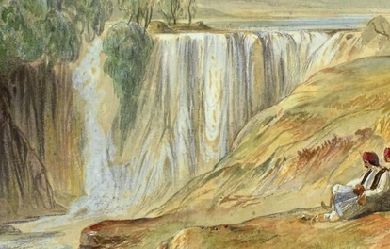
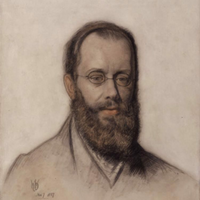
Edward Lear (12 or 13 May 1812 – 29 January 1888) was an English artist, illustrator, author and poet, and is known now mostly for his literary nonsense in poetry and prose and especially his limericks, a form he popularised. His principal areas of work as an artist were threefold: as a draughtsman employed to illustrate birds and animals; making coloured drawings during his journeys, which he reworked later, sometimes as plates for his travel books; as a (minor) illustrator of Alfred Tennyson's poems. As an author, he is known principally for his popular nonsense works, which use real and invented English words. Early years Lear was born into a middle-class family in the village of Holloway near London, the penultimate of twenty-one children (and youngest to survive) of Ann Clark Skerrett and Jeremiah Lear. He was raised by his eldest sister, also named Ann, 21 years his senior. Owing to the family's limited finances, Lear and his sister were required to leave the family home and live together when he was aged four. Ann doted on Edward and continued to act as a mother for him until her death, when he was almost 50 years of age. Lear suffered from lifelong health afflictions. From the age of six he suffered frequent grand mal epileptic seizures, and bronchitis, asthma, and during later life, partial blindness. Lear experienced his first seizure at a fair near Highgate with his father. The event scared and embarrassed him. Lear felt lifelong guilt and shame for his epileptic condition. His adult diaries indicate that he always sensed the onset of a seizure in time to remove himself from public view. When Lear was about seven years old he began to show signs of depression, possibly due to the instability of his childhood. He suffered from periods of severe melancholia which he referred to as "the Morbids.” Artist Lear was already drawing "for bread and cheese" by the time he was aged 16 and soon developed into a serious "ornithological draughtsman" employed by the Zoological Society and then from 1832 to 1836 by the Earl of Derby, who kept a private menagerie at his estate Knowsley Hall. Lear's first publication, published when he was 19 years old, was Illustrations of the Family of Psittacidae, or Parrots in 1830. His paintings were well received and he was compared favourably with the naturalist John James Audubon. Among other travels, he visited Greece and Egypt during 1848–49, and toured India and Ceylon (Sri Lanka) during 1873–75. While travelling he produced large quantities of coloured wash drawings in a distinctive style, which he converted later in his studio into oil and watercolour paintings, as well as prints for his books. His landscape style often shows views with strong sunlight, with intense contrasts of colour. Throughout his life he continued to paint seriously. He had a lifelong ambition to illustrate Tennyson's poems; near the end of his life a volume with a small number of illustrations was published. Relationships Lear's most fervent and painful friendship involved Franklin Lushington. He met the young barrister in Malta in 1849 and then toured southern Greece with him. Lear developed an undoubtedly homosexual passion for him that Lushington did not reciprocate. Although they remained friends for almost forty years, until Lear's death, the disparity of their feelings for one another constantly tormented Lear. Indeed, none of Lear's attempts at male companionship were successful; the very intensity of Lear's affections seemingly doomed the relationships. The closest he came to marriage with a woman was two proposals, both to the same person 46 years his junior, which were not accepted. For companions he relied instead on friends and correspondents, and especially, during later life, on his Albanian Souliote chef, Giorgis, a faithful friend and, as Lear complained, a thoroughly unsatisfactory chef. Another trusted companion in Sanremo was his cat, Foss, which died in 1886 and was buried with some ceremony in a garden at Villa Tennyson. San Remo and death Lear travelled widely throughout his life and eventually settled in Sanremo, on his beloved Mediterranean coast, in the 1870s, at a villa he named "Villa Tennyson". Lear was known to introduce himself with a long pseudonym: "Mr Abebika kratoponoko Prizzikalo Kattefello Ablegorabalus Ableborinto phashyph" or "Chakonoton the Cozovex Dossi Fossi Sini Tomentilla Coronilla Polentilla Battledore & Shuttlecock Derry down Derry Dumps" which he based on Aldiborontiphoskyphorniostikos. After a long decline in his health, Lear died at his villa in 1888, of the heart disease from which he had suffered since at least 1870. Lear's funeral was said to be a sad, lonely affair by the wife of Dr. Hassall, Lear's physician, none of Lear's many lifelong friends being able to attend. Lear is buried in the Cemetery Foce in San Remo. On his headstone are inscribed these lines about Mount Tomohrit (in Albania) from Tennyson's poem To E.L. [Edward Lear], On His Travels in Greece: all things fair. With such a pencil, such a pen. You shadow forth to distant men, I read and felt that I was there. The centenary of his death was marked in Britain with a set of Royal Mail stamps in 1988 and an exhibition at the Royal Academy. Lear's birthplace area is now marked with a plaque at Bowman's Mews, Islington, in London, and his bicentenary during 2012 was celebrated with a variety of events, exhibitions and lectures in venues across the world including an International Owl and Pussycat Day on his birthday. References Wikipedia – http://en.wikipedia.org/wiki/Edward_Lear

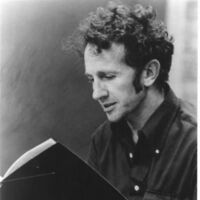
Philip Levine (January 10, 1928– February 14, 2015) was a Pulitzer Prize-winning American poet best known for his poems about working-class Detroit. He taught for more than thirty years in the English department of California State University, Fresno and held teaching positions at other universities as well. He served on the Board of Chancellors of the Academy of American Poets from 2000 to 2006, and was appointed Poet Laureate of the United States for 2011–2012. Biography Philip Levine grew up in industrial Detroit, the second of three sons and the first of identical twins of Jewish immigrant parents. His father, Harry Levine, owned a used auto parts business, his mother, Esther Priscol (Prisckulnick) Levine, was a bookseller. When Levine was five years old, his father died. While growing up, he faced the anti-Semitism embodied by Father Coughlin, the pro-Nazi radio priest. Levine started to work in car manufacturing plants at the age of 14. Detroit Central High School graduated him in 1946 and he went to college at Wayne University (now Wayne State University) in Detroit, where he began to write poetry, encouraged by his mother, to whom he dedicated the book of poems, The Mercy. Levine earned his A.B. in 1950 and went to work for Chevrolet and Cadillac in what he called “stupid jobs.” He married his first wife, Patty Kanterman, in 1951. The marriage lasted until 1953. In 1953, he attended the University of Iowa without registering, studying with, among others, poets Robert Lowell and John Berryman, the latter of whom Levine called his “one great mentor.” In 1954, he earned a mail-order masters degree with a thesis on John Keats’ “Ode to Indolence,” and married actress Frances J. Artley. He returned to the University of Iowa teaching technical writing, completing his Master of Fine Arts degree in 1957. The same year, he was awarded the Jones Fellowship in Poetry at Stanford University. In 1958, he joined the English department at California State University in Fresno, where he taught until his retirement in 1992. He also taught at many other universities, among them New York University as Distinguished Writer-in-Residence, Columbia, Princeton, Brown, Tufts, and the University of California at Berkeley. Levine and his wife had made their homes in Fresno and Brooklyn. He died of pancreatic cancer on February 14, 2015, age 87. Work The familial, social, and economic world of twentieth-century Detroit is one of the major subjects of Levine’s life work. His portraits of working class Americans and his continuous examination of his Jewish immigrant inheritance (both based on real life and described through fictional characters) has left a testimony of mid-twentieth century American life. Levine’s working experience lent his poetry a profound skepticism with regard to conventional American ideals. In his first two books, On the Edge (1963) and Not This Pig (1968), the poetry dwells on those who suddenly become aware that they are trapped in some murderous processes not of their own making. In 1968, Levine signed the “Writers and Editors War Tax Protest” pledge, vowing to refuse to make tax payments in protest against the Vietnam War. In his first two books, Levine was somewhat traditional in form and relatively constrained in expression. Beginning with They Feed They Lion, typically Levine’s poems are free-verse monologues tending toward trimeter or tetrameter. The music of Levine’s poetry depends on tension between his line-breaks and his syntax. The title poem of Levine’s book 1933 (1974) is an example of the cascade of clauses and phrases one finds in his poetry. Other collections include The Names of the Lost, A Walk with Tom Jefferson, New Selected Poems, and the National Book Award-winning What Work Is. On November 29, 2007 a tribute was held in New York City in anticipation of Levine’s eightieth birthday. Among those celebrating Levine’s career by reading Levine’s work were Yusef Komunyakaa, Galway Kinnell, E. L. Doctorow, Charles Wright, Jean Valentine and Sharon Olds. Levine read several new poems as well. Awards * 2013 Academy of American Poets Wallace Stevens Award * 2011 Appointed Poet Laureate Consultant in Poetry to the Library of Congress (United States Poet Laureate) * 1995 Pulitzer Prize for Poetry– The Simple Truth (1994) * 1991 National Book Award for Poetry and Los Angeles Times Book Prize– What Work Is * 1987 Ruth Lilly Poetry Prize from the Modern Poetry Association and the American Council for the Arts * 1981 Levinson Prize from Poetry magazine * 1980 Guggenheim Foundation fellowship * 1980 National Book Award for Poetry– Ashes: Poems New and Old * 1979 National Book Critics Circle Award– Ashes: Poems New and Old– 7 Years from Somewhere * 1978 Harriet Monroe Memorial Prize from Poetry * 1977 Lenore Marshall Poetry Prize from the Academy of American Poets– The Names of the Lost (1975) * 1973 American Academy of Arts and Letters Award, Frank O’Hara Prize, Guggenheim Foundation fellowship Published works Poetry collections * News of the World, Random House, Inc., 2009, ISBN 978-0-307-27223-2 * Stranger to Nothing: Selected Poems, Bloodaxe Books, UK, 2006, ISBN 978-1-85224-737-9 * Breath Knopf, 2004, ISBN 978-1-4000-4291-3; reprint, Random House, Inc., 2006, ISBN 978-0-375-71078-0 * The Mercy, Random House, Inc., 1999, ISBN 978-0-375-70135-1 * Unselected Poems, Greenhouse Review Press, 1997, ISBN 978-0-9655239-0-5 * The Simple Truth, Alfred A. Knopf, 1994, ISBN 978-0-679-43580-8; Alfred A. Knopf, 1996, ISBN 978-0-679-76584-4 * What Work Is, Knopf, 1992, ISBN 978-0-679-74058-2 * New Selected Poems, Knopf, 1991, ISBN 978-0-679-40165-0 * A Walk With Tom Jefferson, A.A. Knopf, 1988, ISBN 978-0-394-57038-9 * Sweet Will, Atheneum, 1985, ISBN 978-0-689-11585-1 * Selected Poems, Atheneum, 1984, ISBN 978-0-689-11456-4 * One for the Rose, Atheneum, 1981, ISBN 978-0-689-11223-2 * 7 Years From Somewhere, Atheneum, 1979, ISBN 978-0-689-10974-4 * Ashes: Poems New and Old, Atheneum, 1979, ISBN 978-0-689-10975-1 * The Names of the Lost, Atheneum, 1976 * 1933, Atheneum, 1974, ISBN 978-0-689-10586-9 * They Feed They Lion, Atheneum, 1972 * Red Dust (1971) * Pili’s Wall, Unicorn Press, 1971; Unicorn Press, 1980 * Not This Pig, Wesleyan University Press, 1968, ISBN 978-0-8195-2038-8; Wesleyan University Press, 1982, ISBN 978-0-8195-1038-9 * On the Edge (1963) Essays * The Bread of Time (1994) Translations * Off the Map: Selected Poems of Gloria Fuertes, edited and translated with Ada Long (1984) * Tarumba: The Selected Poems of Jaime Sabines, edited and translated with Ernesto Trejo (1979) Interviews * Don’t Ask, University of Michigan Press, 1981, ISBN 978-0-472-06327-7 * Moyers & Company, on December 29, 2013, Philip Levine reads some of his poetry and explores how his years working on Detroit’s assembly lines inspired his poetry. * “Interlochen Center for the Arts”, Interview with Interlochen Arts Academy students on March 17, 1977. References Wikipedia—https://en.wikipedia.org/wiki/Philip_Levine_(poet)
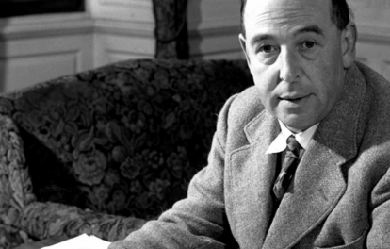
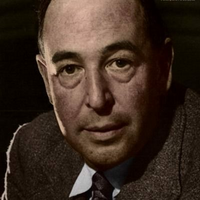
Clive Staples Lewis (29 November 1898 – 22 November 1963), commonly called C. S. Lewis and known to his friends and family as “Jack”, was a novelist, poet, academic, medievalist, literary critic, essayist, lay theologian, and Christian apologist. Born in Belfast, Ireland, he held academic positions at both Oxford University (Magdalen College), 1925–1954, and Cambridge University (Magdalene College), 1954–1963. He is best known both for his fictional work, especially The Screwtape Letters, The Chronicles of Narnia, and The Space Trilogy, and for his non-fiction Christian apologetics, such as Mere Christianity, Miracles, and The Problem of Pain. Lewis and fellow novelist J. R. R. Tolkien were close friends. Both authors served on the English faculty at Oxford University, and both were active in the informal Oxford literary group known as the “Inklings”. According to his memoir Surprised by Joy, Lewis had been baptized in the Church of Ireland (part of the Anglican Communion) at birth, but fell away from his faith during his adolescence. Owing to the influence of Tolkien and other friends, at the age of 32 Lewis returned to the Anglican Communion, becoming “a very ordinary layman of the Church of England”. His faith had a profound effect on his work, and his wartime radio broadcasts on the subject of Christianity brought him wide acclaim.
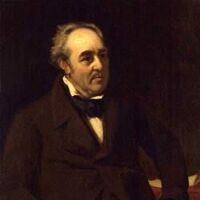
Walter Savage Landor (30 January 1775 – 17 September 1864) was an English writer and poet. His best known works were the prose Imaginary Conversations, and the poem Rose Aylmer, but the critical acclaim he received from contemporary poets and reviewers was not matched by public popularity. As remarkable as his work was, it was equalled by his rumbustious character and lively temperament. Summary of his work In a long and active life of eighty-nine years Landor produced a considerable amount of work in various genres. This can perhaps be classified into four main areas—prose, lyric poetry, political writings including epigrams and Latin. His prose and poetry have received most acclaim, but critics are divided in their preference between them. Landor’s prose is best represented by the Imaginary Conversations. He drew on a vast array of historical characters from Greek philosophers to contemporary writers and composed conversations between pairs of characters that covered areas of philosophy, politics, romance and many other topics. These exercises proved a more successful application of Landor’s natural ability for writing dialogue than his plays. Although these have many quotable passages the overall effect suffered because he never learned the art of drama. Landor wrote much sensitive and beautiful poetry. The love poems were inspired by a succession of female romantic ideals—Ione, Ianthe, Rose Aylmer and Rose Paynter. Equally sensitive are his “domestic” poems about his sister and his children. In the course of his career Landor wrote for various journals on a range of topics that interested him from anti-Pitt politics to the unification of Italy. He was also a master of the epigram which he used to good effect and wrote satirically to avenge himself on politicians and other people who upset him. Landor wrote over three hundred Latin poems, political tracts and essays, but these have generally been ignored in the collections of his work. Landor found Latin useful for expressing things that might otherwise have been “indecent or unattractive” as he put it and as a cover for libellous material. Fellow classical scholars of the time put Landor’s Latin work on a par with his English writing. Summary of his life Landor’s life is an amazing catalogue of incidents and misfortunes, many of them self-inflicted but some no fault of his own. His headstrong nature and hot-headed temperament, combined with a complete contempt for authority, landed him in a great deal of trouble over the years. By a succession of bizarre actions, he was successively thrown out of Rugby, Oxford and from time to time from the family home. In the course of his life he came into conflict deliberately with his political enemies - the supporters of Pitt - but inadvertently with a succession of Lord Lieutenants, Bishops, Lord Chancellors, Spanish officers, Italian Grand Dukes, nuncio legatos, lawyers and other minor officials. He usually gained the upper hand, if not with an immediate hilarious response, then possibly many years later with a biting epithet. Landor’s writing often landed him on the wrong side of the laws of libel, and even his refuge in Latin proved of no avail in Italy. Many times his friends had to come to his aid in smoothing the ruffled feathers of his opponents or in encouraging him to moderate his behaviour. His friends were equally active in the desperate attempts to get his work published, where he offended or felt cheated by a succession of publishers who found his work either unsellable or unpublishable. He was repeatedly involved in legal disputes with his neighbours whether in England or Italy and Dickens’ characterisation of him in Bleak House revolves around such a dispute over a gate between Boythorn and Sir Leicester Dedlock. Fate dealt with him unfairly when he tried to put into practice his bold and generous ideas to improve the lot of man, or when he was mistaken at one time for an agent of the Prince of Wales and at another for a tramp. His stormy marriage with his long-suffering wife resulted in a long separation, and then when she had finally taken him back to a series of sad attempts to escape. And yet Landor was described as “the kindest and gentlest of men”. He collected a coterie of friends who went to great lengths to help him as “his loyalty and liberality of heart were as inexhaustible as his bounty and beneficence of hand”. It was said that “praise and encouragement, deserved or undeserved, came more readily to his lips than challenge or defiance”. The numerous accounts of those with whom he came in contact reveal that he was fascinating company and he dined out on his wit and knowledge for a great part of his life. Landor's powerful sense of humour, expressed in his tremendous and famous laughs no doubt contributed to and yet helped assuage the slings and arrows of outrageous fortune. “His passionate compassion, his bitter and burning pity for all wrongs endured in all the world, found outlet in his lifelong defence of tyrannicide. His tender and ardent love of children, of animals and of flowers makes fragrant alike the pages of his writing and the records of his life”. Early life Walter Savage Landor was born in Warwick, England, the eldest son of Dr Walter Landor, a physician, and his second wife, Elizabeth Savage. His birthplace, Eastgate House, is now occupied by The King's High School For Girls. His father inherited estates at Rugeley, Staffordshire and his mother was heiress to estates at Ipsley Court and Bishop's Tachbrook in Warwickshire. Landor as the eldest son was heir to these properties and looked forward to a life of prosperity. The family tradition was Whig in reaction to George III and Pitt, and although Landor's brother Robert was the only other member to achieve fame as a writer there was a strong literary tradition in the family. After attending a school at Knowle, he was sent to Rugby School under Dr James, but took offence at the headmaster's review of his work and was removed at Dr James' request. Years later, Landor included references to James in Latin in Simonidea with a mixture of praise and criticism and was subsequently reconciled with him. He then studied privately with Rev. William Langley, vicar of Fenny Bentley and headmaster of Ashbourne Grammar School. Langley was later mentioned in the Imaginary Conversation of Isaak Walton. Landor's temperament and violent opinions caused embarrassment at home and he was usually asked to absent himself when guests were expected. On one occasion he netted and threw in the river a local farmer who objected to his fishing on his property. In 1793 he entered Trinity College, Oxford where he showed rebelliousness in his informal dress and was known as a "mad Jacobin" since he was taken with ideas of French republicanism. His tutor Dr Benwell was impressed by him, but unfortunately his stay was short-lived. In 1794 he fired a gun at the windows of a Tory whose late night revels disturbed him and for whom he had an aversion. He was rusticated for a year, and, although the authorities were willing to condone the offence, he refused to return. The affair led to a quarrel with his father in which Landor expressed his intention of leaving home for ever. Landor went to Tenby in Wales where he had a love affair with a local girl, Nancy Evans, for whom he wrote some of his earliest love poems referring to her as "Ione". Landor's father disapproved and he removed for a time to London, lodging near Portland Place. Ione subsequently had a child who died in infancy. In 1795 Landor brought out a small volume of English and Latin verse in three books entitled The Poems of Walter Savage Landor. Landor also wrote an anonymous Moral Epistle in pamphlet form of nineteen pages, respectfully dedicated to Earl Stanhope. It was a satire in heroic verse condemning Pitt for trying to suppress liberal influences. Although Landor subsequently disowned these "'prentice works", Swinburne wrote "No poet at the age of twenty ever had more vigour of style and fluency of verse; nor perhaps has any ever shown such masterly command of epigram and satire, made vivid and vital by the purest enthusiasm and most generous indignation." Landor was reconciled with his family through the efforts of his friend Dorothea Lyttelton. He later told Forster that he would have married Dorothea if he were financially independent. He did not enter a profession - he did not want the law, and no more did the army want him. His father allowed him £150 a year, and he was free to live at home or not, as he pleased. South Wales and Gebir Landor settled in South Wales, returning home to Warwick for short visits. It was at Swansea that he became friendly with the family of Lord Aylmer, including his sister, Rose, whom Landor later immortalized in the poem, "Rose Aylmer". It was she who lent him "The Progress of Romance" by the Gothic authoress Clara Reeve. In this he found the story "The History of Charoba, Queen of Egypt", which inspired his poem "Gebir". Rose Aylmer sailed to India with an aunt in 1798, and two years later died of Cholera. Ah, what avails the sceptred race, Ah, what the form divine! What every virtue, every grace! Rose Aylmer, all were thine. Rose Aylmer, whom these wakeful eyes May weep, but never see, A night of memories and of sighs I consecrate to thee. In 1798 Landor published "Gebir" the work which established his reputation. "Gebir" tells the story of a prince of Spain who falls in love with his enemy Queen Charoba of Egypt. Southey, reviewed "Gebir" calling it "some of the most exquisite poetry in the language" and was keen to discover the anonymous author. Sidney Colvin wrote "For loftiness of thought and language together, there are passages in Gebir that will bear comparison with Milton" and "nowhere in the works of Wordsworth or Coleridge do we find anything resembling Landor's peculiar qualities of haughty splendour and massive concentration".[4] John Forster wrote "Style and treatment constitute the charm of it. The vividness with which everything in it is presented to sight as well as through the wealth of its imagery, its moods of language - these are characteristics pre-eminent in Gebir".[5] Gifford, on the other hand, who was ever a harsh critic of Landor described it as A jumble of incomprehensible trash... the most vile and despicable effusion of a mad and muddy brain....[6] For the next three years Landor led an unsettled life, spent mainly in London. He became friends with the classics scholar Dr Samuel Parr who lived at Hatton near Warwick and who appreciated Landor as a person and a Latin writer.[2] Landor favoured Latin as a way of expressing playful material without exposing it to public view "Siquid forte iocosius cuivis in mentem veniat, id, vernacule, puderet, non enim tantummodo in luce agitur sed etiam in publico."[7] Latin also had the advantage of being exempt from libel laws in England. Parr introduced Landor to Robert Adair, party organiser for Charles James Fox, who enlisted Landor to write in The Morning Post and The Courier against the ministry of Pitt. Landor published "Poems from the Arabic and Persian" in 1800 and a pamphlet of Latin verses. During this time he met Isaac Mocatta who stimulated his interest in art and exercised a moderating influence, but Mocatta died 1801. In 1802 Landor went to Paris where he saw Napoleon at close quarters, and this was enough to put him off the idea of French republicanism. In the same year he published "Poetry by the Author of Gebir" which included the narrative poems Crysaor and The Phocaeans. Colvin considered Crysaor Landor's finest piece of narrative in blank verse. Landor's brother Robert helped with corrections and additions to "Gebir" and the second edition appeared in 1803. About the same time Landor published the whole poem in Latin, which did little to increase readership but appealed to Parr and was considered by Swinburne to be comparable with the English version in might and melody of line, and for power and perfection of language. Landor travelled the country in constant debt, spending much time at Bath. Here he met Sophia Jane Swift, who was already engaged to her cousin Godwin Swifte, whom she married despite Landor's ardent entreaties in 1803. He called her Ianthe and wrote some of his most beautiful love poems to her. His father died in 1805, which put him in possession of an independent fortune and he settled in Bath, living in grand style.[2] In 1806 he published "Simonidea" which included poems to Ianthe and Ione. It also included "Gunlaug and Helga" a narrative poem from William Herbert's "Select Icelandic poems". At Bristol in 1808 he caught up with Southey, whom he had missed on a trip to the Lake District in the previous year, and the mutual appreciation of the two poets led to a warm friendship. He also wrote a work "The Dun Cow" which was written in defence of his friend Parr who had been attacked in an anonymous work "Guy's Porridge Pot", which Landor was fierce to deny was any work of his. Napoleonic Wars and Count Julian In 1808 he had an heroic impulse to take part in the Peninsular War. At the age of thirty-three, he left England for Spain as a volunteer to serve in the national army against Napoleon. He landed at Corunna, introduced himself to the British envoy, offered 10,000 reals for the relief of Venturada, and set out to join the army of General Joaquín Blake y Joyes. He was disappointed not to take part in any real action and found himself giving support at Bilbao where he was nearly captured. A couple of months later the Convention of Sintra brought an end to the campaign and Landor returned to England. The Spanish Government offered its thanks to him, and King Ferdinand appointed him a Colonel in the Spanish Army. However when the King restored the Jesuits Landor returned his commission.[2] When he returned to England, he joined Wordsworth and Southey in denouncing the Convention of Sintra, which had excited general indignation. In 1809 Landor wrote "Three letters to Don Francisco Riquelme" giving him the benefit of his wisdom as a participant in the war. He wrote an ode in Latin to Gustavus IV of Sweden and wrote to press under various pseudonyms. In 1810 he wrote "a brave and good letter to Sir Francis Burdett." The Spanish experience provided inspiration for the tragedy of Count Julian, based on Julian, count of Ceuta. Although this demonstrated Landor's distinctive style of writing, it suffered from his failure to study the art of drama and so made little impression. The plot is difficult to follow unless the story is previously known and concerns a complicated situation after the defeat of the last Visigoth King of Spain. It carries the moral tone of crime propagating crime. Southey undertook to arrange publication and eventually got it published by Murray in 1812, after an initial refusal by Longmans which led Landor to burn another tragedy "Ferranti and Giulio". Thomas de Quincey later wrote of the work "Mr Landor is probably the one man in Europe that has adequately conceived the situation, the stern self-dependency and monumental misery of Count Julian". Swinburne described it as "the sublimest poem published in our language, between the last masterpiece of Milton (Samson Agonistes) and the first masterpiece of Shelley, (Prometheus Unbound) one equally worthy to stand unchallenged beside either for poetic perfection as well as moral majesty. The superhuman isolation of agony and endurance which encircles and exalts the hero is in each case expressed with equally appropriate magnificence of effect. The style of Count Julian, if somewhat deficient in dramatic ease and the fluency of natural dialogue, has such might and purity and majesty of speech as elsewhere we find only in Milton so long and so steadily sustained." Llanthony and marriage Before going to Spain, he had been looking for a property and settled on Llanthony Abbey in Monmouthshire, a ruined Benedictine abbey. He sold the property at Rugeley which he inherited from his father, and persuaded his mother to sell her Tachbrook estate to contribute to the purchase cost. On his return from Spain he was busy finalising these matters. The previous owner had erected some buildings in the ruins of the ancient abbey, but an Act of Parliament, passed in 1809, was needed to allow Landor to pull down these buildings and construct a house, (which was never finished). He wanted to become a model country gentleman, planting trees, importing sheep from Spain, and improving the roads. There is still an avenue of trees in the area known as "Landor's Larches" and many old chestnuts have been dated back to his time. In 1811 he went to a ball in Bath and seeing a pretty girl exclaimed "That's the nicest girl in the room, and I'll marry her". She was Julia Thuillier, the daughter of an impoverished Swiss banker who had an unsuccessful business at Banbury and had gone to Spain, leaving his family at Bath. They married at St James Church Bath on 24 May 1811 and settled for a while at Llanthony Abbey. Landor had a visit from Southey, after he sent him a letter describing the idylls of country life, including nightingales and glow-worms. However the idyll was not to last long as for the next three years Landor was worried by the combined vexation of neighbours and tenants, lawyers and lords-lieutenant and even the Bishop of St David's, while at the same time he tried to publish an article on Fox, a response to a sycophantic piece by John Bernard Trotter, which was condemned by the prospective publisher John Murray as libellous and damned by Canning and Gifford. His troubles with the neighbours stemmed from petty squabbles, many arising from his headstrong and impetuous nature. He employed a solicitor one Charles Gabell, who saw him as a client to be milked. His trees were uprooted and his timber stolen. A man against whom he had to swear the peace drank himself to death, and he was accused of causing the misfortune and when he prosecuted a man for theft he was insulted by the defendant's counsel (whom he later "chastised" in his Latin poetry). He was fond of revenge through his verse, Latin or otherwise and gave his opinion of his lawyers in the following piece of doggerel. If the devil, a mighty old omnibus driver Saw an omnibus driving downhill to a river And saved any couple to share his own cab I really do think t'would be Gabell & Gabb. When the Bishop failed to reply to his letter offering to restore part of the priory Landor followed up saying "God alone is great enough for me to ask anything of twice". He wanted to become a magistrate and after a row with the Lord Lieutenant, the Duke of Beaufort, who was suspicious of his republican sympathies, he pursued the matter with the Lord Chancellor, Lord Eldon well known as a High Tory without success. He wasted much effort and money in noble attempts to improve the land, and to relieve the wretchedness and raise the condition of the poorer inhabitants. The final straw was when he let his farmland to one Betham who was incompetent and extravagant and paid no rent. After an expensive action to recover the debts from Betham he had had enough, and decided to leave the country, abandoning Llanthony to his creditors - which was principally his mother. In 1814 Landor left England for Jersey, where he had a quarrel with his wife and set off for France on his own. Eventually she joined him at Tours as did his brother Robert. At Tours he met Francis George Hare, father of Augustus Hare and brother of Julius Hare who was to be of great help to him. Landor soon became dissatisfied with Tours and after tremendous conflicts with his landlady set off in September 1815 with his wife and brother on a tempestuous journey to Italy. Florence and Imaginary Conversations Landor and his wife finally settled at Como where they stayed for three years. Even here he had troubles for at the time Caroline of Brunswick, wife of the Prince Regent was living there and Landor was suspected of being an agent involved in watching her in case of divorce proceedings. In 1818 he insulted the authorities in a Latin poem directed against an Italian poet who had denounced England, not realising that the libel laws in Italy (unlike in England) applied to Latin writings as well as Italian. After threatening the regio delegato with a beating he was ordered to leave Como. In September he went to Genoa and Pisa. He finally settled at Florence in 1821. After two years in apartments in the Medici Palace, he settled with his wife and children at the Villa Castiglione. In this, the most important period in his literary career, he produced some of his best known works - the Imaginary Conversations. It was at this time that Lady Blessington and her husband were living at Florence and became firm friends. The first two volumes of his Imaginary Conversations appeared in 1824 with a second edition in 1826; a third volume was added in 1828; and in 1829 the fourth and fifth volumes were published. Not until 1846 was a fresh instalment added, in the second volume of his collected and selected works. With these works, Landor acquired a high, but not wide literary reputation. He had various disputes with the authorities in Florence. The theft of some silver led to altercations with the police, whose interviews with tradesmen ended up defining him as a "dangerous man", and the eventual upshot was that the Grand Duke banished him from Florence. Subsequently the Grand Duke took the matter good-naturedly, and ignored Landor's declaration that, as the authorities disliked his residence, he should reside there permanently. In 1829, Landor bought the Villa Gherardesca at Fiesole helped by a generous loan from Joseph Ablett of Llanbedr Hall, Denbighshire. Here he had a dispute with a neighbour about water rights, which led to a lawsuit and a challenge, although the English Consul Kirkup succeeded in arranging the point of honour satisfactorily. Landor was visited by William Hazlitt and Leigh Hunt, and was on intimate terms with Charles Armitage Brown. It was at this time he became acquainted with Edward John Trelawny who he included in volume IV of Imaginary Conversations. His mother, with whom he had always corresponded affectionately, died in October 1829 and his cousin Walter Landor of Rugeley took over the management of the estate in Wales. Landor was happy at Villa Gherardesca for several years, writing books, playing with his children whom he adored and with the nightingales, and planting his gardens. He had many visitors, most notably in 1829 Jane Swift (Ianthe) now a widow, who inspired him to write poetry again. Later came Henry Crabb Robinson with whom he got on extremely well. In 1831 he published a volume combining Gebir, Count Julian and Other Poems (including 31 to Ianthe). Although this sold only 40 copies, Landor was unconcerned as he was working on "High and Low Life in Italy". This last work he sent to Crabb Robinson for publication but he had difficulties with publishers and it did not appear until 1837. In 1832 Ablett persuaded him visit England, where he met many old friends. He saw Ianthe at Brighton and met Lord Wenlock. He also visited his family in Staffordshire - his brother Charles was rector of Colton, and his cousin Walter Landor of Rugeley was trying to deal with the complex business of Llanthony. He visited Charles Lamb at Enfield, Samuel Coleridge at Highgate, and Julius Hare at Cambridge. He went with Ablett to the Lake District and saw Southey and Coleridge. On returning to Fiesole he found his children out of hand and obtained a German governess for them. Back in Italy he met Richard Monckton Milnes who later wrote about him. He was visited by Ralph Waldo Emerson and worked on the conversations which led to the volumes upon "Shakespeare's Examinations for Deer Stealing", "Pericles and Aspasia", and the "Pentameron". Lady Blessington sold "Shakespeare" for him. In 1835 Ianthe visited again, and brought her half-sister, Mrs Paynter, with her. Landor's wife Julia became jealous, although she already had a younger lover, and their difference of opinion ended in a complete separation. England, Pericles and journalism Landor was 60 by now and went to Lucca where he finished "Pericles and Aspasia" and in September returned to England alone in the autumn. He had an income of about £600 per annum from properties in England, but when he left Italy he made over £400 of the share to his wife, and transferred the villa and farms at Fiesole to his son Arnold absolutely. His income was now £200 a year and he was in financial difficulties. He stayed with Ablett at Llanbedr for three months, spent winter at Clifton and returned to him afterwards, when Ablett persuaded him to write "Literary Hours" which was published the next year. "Pericles and Aspasia", which was to become one of his most appreciated works was published in March 1836. It is in the form of an Imaginary Conversation and describes the development of Aspasia's romance with Pericles, who died in the Peloponnesian War, told in a series of letters to a friend Cleone. The work is one of Landor's most joyous works and is singled out by contemporary critics as an introduction to Landor at his best. On one occasion Landor was travelling to Clifton incognito and chatting to a fellow traveller when the traveller, John Sterling, observed that his strange paradoxical conversation sounded like one of Landor's Imaginary Conversations. Landor covered his retreat, but later became acquainted formally with Sterling. Also in 1836, Landor met John Forster who became his biographer, having become friends after Forster's review of his "Shakespeare". Later that year went to Heidelberg in Germany hoping to meet his children, but was disappointed. He wrote more imaginary conversations including one between Lord Eldon and Escombe. When a lady friend rebuked him for this on the basis that Eldon was now over eighty, Landor replied unmoved with the quip "The devil is older". He had several other publications that year besides Pericles, including "Letter from a Conservative", "A Satire on Satirists" which included a criticism of Wordsworth's failure to appreciate Southey, Alabiadas the Young Man, and "Terry Hogan", a satire on Irish priests. He wintered again at Clifton where Southey visited him. It is possible that Ianthe was living at Bristol, but the evidence is not clear, and in 1837 she went to Austria, where she remained for some years. After leaving Clifton, Landor travelled around and visited Armitage Brown at Plymouth. He established many friendships including John Kenyon and Sir William Napier. At the end of the year he published "Death of Clytemnestra" and "The Pentalogia", containing five of his finest shorter studies in dramatic poetry. The last piece to be published was "Pentameron". Although this had no financial success it was much admired by his friends including Kenyon, Julius Hare, Crabb Robinson, Elizabeth Barrett Browning who said "some of the pages are too delicious to turn over", and Leigh Hunt who reckoned it Landor's masterpiece. In the spring of 1838 he took a house in Bath and wrote his three plays the "Andrea of Hungary", "Giovanna of Naples", and "Fra Rupert". These plays are in the form of a trilogy in the first of which Fra Rupert contrives the death of Andrea husband of Giovanna. Giovanna is suspected but acquitted in the second play. In the third play Fra Rupert is discovered. George Saintsbury described these as a historical novel thrown into conversational dramatic form. In 1839 Landor's attempts to publish the plays were caught up in a dispute between Bentley and Dickens and Forster which caused considerable delay. Again, although these plays, or "conversations in verse" did not succeed with the public, Landor gained warm admirers, many of whom were his personal friends. Southey's mind was giving way when he wrote a last letter to his friend in 1839, but he continued to mention Landor's name when generally incapable of mentioning any one. Landor wandered around the country again, frequently visiting London, where he usually stayed with Lady Blessington, whom he had known at Florence. Mrs Paynter, and her daughter Rose Paynter were at Bath and Landor's letters and verses to Rose are among his best works. Rose later married Charles Graves-Sawle of Restormel in Cornwall. Landor met Charles Dickens and they enjoyed each other's company despite the age difference. Landor greatly admired Dickens' works, and was especially moved by the character of Nell Trent (from The Old Curiosity Shop). Landor was affectionately adapted by Dickens as Lawrence Boythorn in Bleak House.[2] He was the godfather of Dickens's son Walter Landor Dickens. He also became introduced to Robert Browning who sent him a dedicated copy of his work. Landor received a visit from his son Arnold in 1842 and in that year wrote a long essay on Catullus for Forster who was editor of "Foreign Quarterly Review" and followed it up with The Idylls of Theocritus. Super was critical of the essays claiming "A more thoroughly disorganised work never fell from his pen". In 1843 he mourned the death of his friend Southey and dedicated a poem in the Examiner. Landor was visited by his children Walter and Julia and published a poem to Julia in Blackwood's magazine. By that dejected city, Arno runs, Where Ugolino claspt his famisht sons. There wert thou born, my Julia! there thine eyes Return'd as bright a blue to vernal skies. And thence, my little wanderer! when the Spring Advanced, thee, too, the hours on silent wing Brought, while anemonies were quivering round, And pointed tulips pierced the purple ground, Where stood fair Florence: there thy voice first blest My ear, and sank like balm into my breast: For many griefs had wounded it, and more Thy little hands could lighten were in store. But why revert to griefs? Thy sculptured brow Dispels from mine its darkest cloud even now. And all that Rumour has announced of grace! I urge, with fevered breast, the four-month day. O! could I sleep to wake again in May. In the following year his daughter Julia returned and gave him a dog Pomero, who was a faithful companion for a long time. In the same year, he published a poem to Browning in the Morning Chronicle. Forster and Dickens used to visit Bath, to celebrate Landor's birthday and Charles I's execution on the same day. Forster helped Landor in publishing his plays and the 'Collected Works' in 1846, and was employed on The Examiner to which Landor frequently contributed on political and other subjects. Forster objected to the inclusion of some Latin poetry, and so Landor published his most important Latin work 'Poemata et Inscriptiones' separately in 1847. This consisted of large additions to the main contents of two former volumes of idyllic, satiric, elegiac and lyric verse. One piece referred to George IV whose treatment of Caroline of Brunswick had been distasteful to Landor. Heic jacet, Qui ubique et semper jacebat Familiae pessimae homo pessimus Georgius Britanniae Rex ejus nominis IV Arca ut decet ampla et opipare ornata est Continet enim omnes Nerones. (Here lies a person who was always laying about all over the place - the worst member of the worst family - George the fourth of that name of Britain. It is suitable that the vault be large and excessively decorated as it contains all the Neros). Landor's distaste for the House of Hanover is more famously displayed in the doggerel that many do not realise is his composition. George the First was always reckoned Vile, but viler George the Second. And what mortal ever heard Any good of George the Third, But when from earth the Fourth descended God be praised the Georges ended In 1846 he also published the 'Hellenics', including the poems published under that title in the collected works, together with English translations of the Latin idyls. In this year he first met Eliza Lynn who was to become an outstanding novelist and journalist as Lynn Linton, and she became a regular companion in Bath. Now aged over seventy Landor was losing many of his old friends and becoming more frequently ill himself. On one occasion when staying with the Graves-Sawle he visited Exeter and sheltered in the rain on the doorstep of a local barrister James Jerwood. Jerwood mistook him for a tramp and drove him away. Landor's follow-up letter of abuse to the barrister is magnificent. In 1849 he wrote a well-known epitaph for himself on his 74th birthday. I strove with none, for none was worth my strife. Nature I loved, and, next to nature, Art; I warm'd both hands before the fire of Life; It sinks, and I am ready to depart. However he was leading an active social life. Tennyson met him in 1850 and recorded how while another guest fell downstairs and broke his arm, "Old Landor went on eloquently discoursing of Catullus and other Latin poets as if nothing had happened".[12] Thomas Carlyle visited him and wrote "He was really stirring company: a proud irascible, trenchant, yet generous, veracious, and very dignified old man".[12] In 1851 Landor expressed interest in Church reform with a pamphlet "Popery, British and Foreign", and Letters to Cardinal Wiseman. He published various other articles in The Examiner, Fraser's Magazine and other journals. During the year he learnt of the death of his beloved Ianthe and wrote in tribute to her. Sophia! whom I seldom call'd by name, And trembled when I wrote it; O my friend Severed so long from me! one morn I dreamt That we were walking hand in hand thro' paths Slippery with sunshine: after many years Had flown away, and seas and realms been crost, And much (alas how much!) by both endured We joined our hands together and told our tale. And now thy hand hath slipt away from mine, And the cold marble cramps it; I dream one, Dost thou dream too? and are our dreams the same? In 1853 he published the collected "Imaginary Conversations of the Greeks and Romans" which he dedicated to Dickens. Dickens in this year published "Bleak House" which contained the amazingly realistic characterisation of Landor as Boythorn. He also published "The Last Fruit off an Old Tree", containing fresh conversations, critical and controversial essays, miscellaneous epigrams, lyrics and occasional poems of various kind and merit, closing with Five Scenes on the martyrdom of Beatrice Cenci. Swinburne described these as "unsurpassed even by their author himself for noble and heroic pathos, for subtle and genial, tragic and profound, ardent and compassionate insight into character, with consummate mastery of dramatic and spiritual truth."[13] At this time Landor was interesting himself in foreign affairs, in particular Czarist oppression as he saw it and Louis Napoleon. At the end of 1854 his beloved sister Elizabeth died and he wrote a touching memorial. "Sharp crocus wakes the froward year; In their old haunts birds reappear; From yonder elm, yet black with rain, The cushat looks deep down for grain Thrown on the gravel-walk; here comes The redbreast to the sill for crumbs. Fly off! fly off! I can not wait To welcome ye, as she of late. The earliest of my friends is gone. Alas! almost my only one! The few as dear, long wafted o'er, Await me on a sunnier shore." In 1856 at the age of 81 he published Antony and Octavius: Scenes for the Study, twelve consecutive poems in dialogue, and "Letter to Emerson", as well as continuing Imaginary Conversations. Final Tragedies and return to Italy In the beginning of 1857, Landor's mind was becoming weakened and he found himself in some unpleasant situations. He became involved in a court case because he had published statements when the case was sub judice and was insulted by counsel as a poor old man brought in to talk twaddle. He then became embroiled in a miserable quarrel between two ladies he knew. He gave one of them, Geraldine Hooper £100, a legacy received from his friend Kenyon. Unknown to Landor she transferred half of it to the other lady a Mrs Yescombe. They then quarreled and the Mrs Yescombe accused Hooper of having obtained the money from Landor for dishonourable reasons. Landor in his fury wrote a pamphlet "Walter Savage Landor and the Honourable Mrs Yescombe" which was considered libellous. Forster persuaded Landor to apologise. Then in 1858 he produced a miscellaneous collection called "Dry Sticks Fagoted by W. S. Landor", which contained among other things some epigrammatic and satirical attacks which led to further libel actions. In July that year Landor returned to Italy for the last six years of his life. He was advised to make over his property to his family, on whom he now depended. He hoped to resume his life with his wife and children but found them living disreputably at the Villa Gherardesca and ill-disposed to welcome him. He spent a miserable ten months at his villa, and fled repeatedly to Florence, only to be brought back again. On the last occasion, he took refuge at a hotel in Florence, with next to nothing in his pocket, and was found by Robert Browning then living at the Casa Guidi. Browning managed to obtain an allowance for him from the family and settled him first at Siena and then at Florence. Landor busied himself with new editions of his works and interested himself in the unification of Italy. He wrote frequently to Eliza Lynn Linton and added to Imaginary Conversations devising any sale proceeds to the relief of Garibaldi's soldiers. Anthony Trollope visited Florence and brought with him an American girl Kate Field who became Landor's protege. He was still charming, venerable, and courteous, and full of literary interests. He taught Kate Field Latin, repeated poetry and composed some last conversations. In 1861, Browning left Italy after the death of his wife. Landor afterwards seldom left the house and remained petulant and uncomfortable, occasionally visited by his sons. He was much concerned about the fate of his picture collection, little of which had any merit, and about preparations for his grave as he hoped to be buried at Widcombe near Bath. He published some Imaginary Conversations in the 'Atheneum' in 1861-2 and in 1863 published a last volume of "Heroic Idyls, with Additional Poems, English and Latin", described by Swinburne as " the last fruit of a genius which after a life of eighty-eight years had lost nothing of its majestic and pathetic power, its exquisite and exalted". Forster's refusal to publish more about the libel case had interrupted their friendship, but they renewed their correspondence before his death. Almost the last event of his life was a visit in 1864 from the poet Swinburne, who visited Florence specifically to see him, and dedicated to him the 'Atlanta in Calydon'.[2] In 1864 on May Day Landor said to his landlady "I shall never write again. Put out the lights and draw the curtains". A few months later he died quietly in Florence at the age of 89. He was buried not after all at Widcombe but in the English Cemetery, Florence, near the tomb of his friend, Elizabeth Barrett Browning. A statue of his wife can also be found in the 'English' Cemetery, above the tomb of their son, Arnold Savage Landor. Later, his Villa Gherardesca in Fiesole would become the home of the American Icelandic scholar Daniel Willard Fiske, who renamed it the 'Villa Landor'. Landor's grandson was the writer explorer and adventurer Arnold Henry Savage Landor. Landor was the close friend of Southey, and Coleridge. His relationship with Wordsworth changed over time from great praise to a certain resentment. Lord Byron tended to ridicule and revile him, and though Landor had little good to say in return during Byron's life he lamented and extolled him as a dead hero. He lavished sympathetic praise on the noble dramatic works of his brother Robert Eyres Landor. Review of Landor's work by Swinburne From nineteen almost to ninety his intellectual and literary activity was indefatigably incessant; but, herein at least like Charles Lamb, whose cordial admiration he so cordially returned, he could not write a note of three lines which did not bear the mark of his Roman hand in its matchless and inimitable command of a style at once the most powerful and the purest of his age. The one charge which can ever seriously be brought and maintained against it is that of such occasional obscurity or difficulty as may arise from excessive strictness in condensation of phrase and expurgation of matter not always superfluous, and sometimes almost indispensable. His English prose and his Latin verse are perhaps more frequently and more gravely liable to this charge than either his English verse or his Latin prose. At times it is well-nigh impossible for an eye less keen and swift, a scholarship less exquisite and ready than his own, to catch the precise direction and follow the perfect course of his rapid thought and radiant utterance. This apparently studious pursuit and preference of the most terse and elliptic expression which could be found for anything he might have to say could not but occasionally make even so sovereign a master of two great languages appear dark with excess of light; but from no former master of either tongue in prose or verse was ever the quality of real obscurity, of loose and nebulous incertitude, more utterly alien or more naturally remote. There is nothing of cloud or fog about the path on which he leads us; but we feel now and then the want of a bridge or a handrail; we have to leap from point to point of narrative or argument without the usual help of a connecting plank. Even in his dramatic works, where least of all it should have been found, this lack of visible connection or sequence in details of thought or action is too often a source of sensible perplexity. In his noble trilogy on the history of Giovanna queen of Naples it is sometimes actually difficult to realize on a first reading what has happened or is happening, or how, or why, or by what agency a defect alone sufficient, but unhappily sufficient in itself, to explain the too general ignorance of a work so rich in subtle and noble treatment of character, so sure and strong in its grasp and rendering of high actions and high passions, so rich in humour and in pathos, so royally serene in its commanding power upon the tragic mainsprings of terror and of pity. As a poet, he may be said on the whole to stand midway between Byron and Shelley—about as far above the former as below the latter. If we except Catullus and Simonides, it might be hard to match and it would be impossible to overmatch the flawless and blameless yet living and breathing beauty of his most perfect elegies, epigrams or epitaphs. As truly as prettily was he likened by Leigh Hunt to a stormy mountain pine which should produce lilies. He was a classic, and no formalist; the wide range of his admiration had room for a genius so far from classical as Blake's. Nor in his own highest mood or method of creative as of critical work was he a classic only, in any narrow or exclusive sense of the term. On either side, immediately or hardly below his mighty masterpiece of Pericles and Aspasia, stand the two scarcely less beautiful and vivid studies of medieval Italy and Shakespeare in England. References Wikipedia - http://en.wikipedia.org/wiki/Walter_Savage_Landor
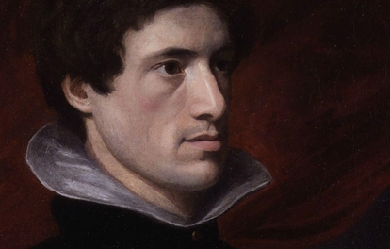
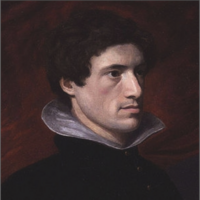
Charles Lamb (London, 10 February 1775 – Edmonton, 27 December 1834) was an English essayist, best known for his Essays of Elia and for the children's book Tales from Shakespeare, which he produced with his sister, Mary Lamb (1764–1847). Lamb has been referred to by E.V. Lucas, his principal biographer, as "the most lovable figure in English literature”. Youth and schooling Lamb was the son of Elizabeth Field and John Lamb. Lamb was the youngest child, with an 11 year older sister Mary, an even older brother John, and 4 other siblings who did not survive their infancy. John Lamb (father), who was a lawyer's clerk, spent most of his professional life as the assistant and servant to a barrister by the name of Samuel Salt who lived in the Inner Temple in London. It was there in the Inner Temple in Crown Office Row, that Charles Lamb was born and spent his youth. Lamb created a portrait of his father in his "Elia on the Old Benchers" under the name Lovel. Lamb's older brother was too much his senior to be a youthful companion to the boy but his sister Mary, being born eleven years before him, was probably his closest playmate. Lamb was also cared for by his paternal aunt Hetty, who seems to have had a particular fondness for him. A number of writings by both Charles and Mary suggest that the conflict between Aunt Hetty and her sister-in-law created a certain degree of tension in the Lamb household. However, Charles speaks fondly of her and her presence in the house seems to have brought a great deal of comfort to him. Some of Lamb's fondest childhood memories were of time spent with Mrs. Field, his maternal grandmother, who was for many years a servant to the Plummer family, who owned a large country house called Blakesware, near Widford, Hertfordshire. After the death of Mrs. Plummer, Lamb's grandmother was in sole charge of the large home and, as Mr. Plummer was often absent, Charles had free rein of the place during his visits. A picture of these visits can be glimpsed in the Elia essay Blakesmoor in H—shire. "Why, every plank and panel of that house for me had magic in it. The tapestried [sic] bed-rooms – tapestry so much better than painting – not adorning merely, but peopling the wainscots – at which childhood ever and anon would steal a look, shifting its coverlid (replaced as quickly) to exercise its tender courage in a momentary eye-encounter with those stern bright visages, staring reciprocally – all Ovid on the walls, in colours vivider than his descriptions.” Little is known about Charles's life before the age of seven. We know that Mary taught him to read at a very early age and he read voraciously. It is believed that he suffered from smallpox during his early years which forced him into a long period of convalescence. After this period of recovery Lamb began to take lessons from Mrs. Reynolds, a woman who lived in the Temple and is believed to have been the former wife of a lawyer. Mrs. Reynolds must have been a sympathetic schoolmistress because Lamb maintained a relationship with her throughout his life and she is known to have attended dinner parties held by Mary and Charles in the 1820s. E.V. Lucas suggests that sometime in 1781 Charles left Mrs. Reynolds and began to study at the Academy of William Bird. His time with William Bird did not last long, however, because by October 1782 Lamb was enrolled in Christ's Hospital, a charity boarding school chartered by King Edward VI in 1552. Christ's Hospital was a traditional English boarding school; bleak and full of violence. The headmaster, Mr. Boyer, has become famous for his teaching in Latin and Greek, but also for his brutality. A thorough record of Christ's Hospital in Several essays by Lamb as well as the Autobiography of Leigh Hunt and the Biographia Literaria of Samuel Taylor Coleridge, with whom Charles developed a friendship that would last for their entire lives. Despite the brutality Lamb got along well at Christ's Hospital, due in part, perhaps, to the fact that his home was not far distant thus enabling him, unlike many other boys, to return often to the safety of home. Years later, in his essay "Christ’s Hospital Five and Thirty Years Ago," Lamb described these events, speaking of himself in the third person as "L.” “I remember L. at school; and can well recollect that he had some peculiar advantages, which I and other of his schoolfellows had not. His friends lived in town, and were near at hand; and he had the privilege of going to see them, almost as often as he wished, through some invidious distinction, which was denied to us.” Christ's Hospital was a typical English boarding school and many students later wrote of the terrible violence they suffered there. The upper master of the school from 1778 to 1799 was Reverend James Boyer, a man renowned for his unpredictable and capricious temper. In one famous story Boyer was said to have knocked one of Leigh Hunt's teeth out by throwing a copy of Homer at him from across the room. Lamb seemed to have escaped much of this brutality, in part because of his amiable personality and in part because Samuel Salt, his father's employer and Lamb's sponsor at the school was one of the institute's Governors. Charles Lamb suffered from a stutter and this "an inconquerable impediment" in his speech deprived him of Grecian status at Christ's Hospital and thus disqualifying him for a clerical career. While Coleridge and other scholarly boys were able to go on to Cambridge, Lamb left school at fourteen and was forced to find a more prosaic career. For a short time he worked in the office of Joseph Paice, a London merchant and then, for 23 weeks, until 8 February 1792, held a small post in the Examiner's Office of the South Sea House. Its subsequent downfall in a pyramid scheme after Lamb left would be contrasted to the company's prosperity in the first Elia essay. On 5 April 1792 he went to work in the Accountant's Office for British East India Company, the death of his father's employer having ruined the family's fortunes.Charles would continue to work there for 25 years, until his retirement with pension. In 1792 while tending to his grandmother, Mary Field, in Hertfordshire, Charles Lamb fell in love with a young woman named Ann Simmons. Although no epistolary record exists of the relationship between the two, Lamb seems to have spent years wooing Miss Simmons. The record of the love exists in several accounts of Lamb's writing. Rosamund Gray is a story of a young man named Allen Clare who loves Rosamund Gray but their relationship comes to nothing because of the sudden death of Miss Gray. Miss Simmons also appears in several Elia essays under the name "Alice M." The essays "Dream Children," "New Year's Eve," and several others, speak of the many years that Lamb spent pursuing his love that ultimately failed. Miss Simmons eventually went on to marry a silversmith by the name of Bartram and Lamb called the failure of the affair his 'great disappointment. Family tragedy Charles and his sister Mary both suffered periods of mental illness. Charles spent six weeks in a psychiatric hospital during 1795. He was, however, already making his name as a poet. On 22 September 1796, a terrible event occurred: Mary, "worn down to a state of extreme nervous misery by attention to needlework by day and to her mother at night," was seized with acute mania and stabbed her mother to the heart with a table knife. Although there was no legal status of 'insanity' at the time, a jury returned a verdict of 'Lunacy' and therefore freed her from guilt of willful murder. With the help of friends Lamb succeeded in obtaining his sister's release from what would otherwise have been lifelong imprisonment, on the condition that he take personal responsibility for her safekeeping. Lamb used a large part of his relatively meagre income to keep his beloved sister in a private 'madhouse' in Islington called Fisher House. The 1799 death of John Lamb was something of a relief to Charles because his father had been mentally incapacitated for a number of years since suffering a stroke. The death of his father also meant that Mary could come to live again with him in Pentonville, and in 1800 they set up a shared home at Mitre Court Buildings in the Temple, where they lived until 1809. Despite Lamb's bouts of melancholia and alcoholism, both he and his sister enjoyed an active and rich social life. Their London quarters became a kind of weekly salon for many of the most outstanding theatrical and literary figures of the day. Charles Lamb, having been to school with Samuel Coleridge, counted Coleridge as perhaps his closest, and certainly his oldest, friend. On his deathbed, Coleridge had a mourning ring sent to Lamb and his sister. Fortuitously, Lamb's first publication was in 1796, when four sonnets by "Mr. Charles Lamb of the India House" appeared in Coleridge's Poems on Various Subjects. In 1797 he contributed additional blank verse to the second edition, and met the Wordsworths, William and Dorothy, on his short summer holiday with Coleridge at Nether Stowey, thereby also striking up a lifelong friendship with William. In London, Lamb became familiar with a group of young writers who favoured political reform, including Percy Bysshe Shelley, William Hazlitt, and Leigh Hunt. Lamb continued to clerk for the East India Company and doubled as a writer in various genres, his tragedy, John Woodvil, being published in 1802. His farce, Mr H, was performed at Drury Lane in 1807, where it was roundly booed. In the same year, Tales from Shakespeare (Charles handled the tragedies; his sister Mary, the comedies) was published, and became a best seller for William Godwin's "Children's Library." In 1819, at age 44, Lamb, who, because of family commitments, had never married, fell in love with an actress, Fanny Kelly, of Covent Garden, and proposed marriage. She refused him, and he died a bachelor. His collected essays, under the title Essays of Elia, were published in 1823 ("Elia" being the pen name Lamb used as a contributor to the London Magazine). A further collection was published ten years or so later, shortly before Lamb's death. He died of a streptococcal infection, erysipelas, contracted from a minor graze on his face sustained after slipping in the street, on 27 December 1834, just a few months after Coleridge. He was 59. From 1833 till their deaths Charles and Mary lived at Bay Cottage, Church Street, Edmonton north of London (now part of the London Borough of Enfield. Lamb is buried in All Saints' Churchyard, Edmonton. His sister, who was ten years his senior, survived him for more than a dozen years. She is buried beside him. Work Lamb's first publication was the inclusion of four sonnets in the Coleridge's Poems on Various Subjects published in 1796 by Joseph Cottle. The sonnets were significantly influenced by the poems of Burns and the sonnets of William Bowles, a largely forgotten poet of the late 18th century. His poems garnered little attention and are seldom read today. Lamb's contributions to the second edition of the Poems showed significant growth as a poet. These poems included The Tomb of Douglas and A Vision of Repentance. Because of a temporary fall-out with Coleridge, Lamb's poems were to be excluded in the third edition of the Poems. As it turned out, a third edition never emerged and instead Coleridge's next publication was the monumentally influential Lyrical Ballads co-published with Wordsworth. Lamb, on the other hand, published a book entitled Blank Verse with Charles Lloyd, the mentally unstable son of the founder of Lloyd's Bank. Lamb's most famous poem was written at this time entitled The Old Familiar Faces. Like most of Lamb's poems it is particularly sentimental but it is still remembered and widely read, often included in Poetic Collections. Of particular interest to Lambarians is the opening verse of the original version of The Old Familiar Faces which is concerned with Lamb's mother. It was a verse that Lamb chose to remove from the edition of his Collected Work published in 1818. I had a mother, but she died, and left me, Died prematurely in a day of horrors - All, all are gone, the old familiar faces. From a fairly young age Lamb desired to be a poet but never gained the success that he had hoped. Lamb lived under the poetic shadow of his friend Coleridge. In the final years of the 18th century Lamb began to work on prose with the novella entitled Rosamund Gray, a story of a young girl who was thought to be inspired by Ann Simmonds, with whom Charles Lamb was thought to be in love. Although the story is not particularly successful as a narrative because of Lamb's poor sense of plot, it was well thought of by Lamb's contemporaries and led Shelley to observe “what a lovely thing is Rosamund Gray! How much knowledge of the sweetest part of our nature in it!" (Quoted in Barnett, page 50) n the first years of the 19th century Lamb began his fruitful literary cooperation with his sister Mary. Together they wrote at least three books for William Godwin’s Juvenile Library. The most successful of these was of course Tales From Shakespeare which ran through two editions for Godwin and has now been published dozens of times in countless editions, many of them illustrated. Lamb also contributed a footnote to Shakespearean studies at this time with his essay "On the Tragedies of Shakespeare," in which he argues that Shakespeare should be read rather than performed in order to gain the proper effect of his dramatic genius. Beside contributing to Shakespeare studies with his book Tales From Shakespeare, Lamb also contributed to the popularization of Shakespeare's contemporaries with his book Specimens of the English Dramatic Poets Who Lived About the Time of Shakespeare. Although he did not write his first Elia essay until 1820, Lamb’s gradual perfection of the essay form for which he eventually became famous began as early 1802 in a series of open letters to Leigh Hunt’s Reflector. The most famous of these is called "The Londoner" in which Lamb famously derides the contemporary fascination with nature and the countryside. Legacy Anne Fadiman notes regretfully that Lamb is not widely read in modern times: "I do not understand why so few other readers are clamoring for his company... [he] is kept alive largely through the tenuous resuscitations of university English departments." Lamb was honoured by The Latymer School, a grammar school in Edmonton, a suburb of London where he lived for a time; it has six houses, one of which, "Lamb", is named after Charles. Selected works * Blank Verse, poetry, 1798 * A Tale of Rosamund Gray, and old blind Margaret, 1798 * John Woodvil, poetic drama, 1802 * Tales from Shakespeare, 1807 * The Adventures of Ulysses, 1808 * Specimens of English Dramatic poets who lived about the time of Shakespeare, 1808 * On the Tragedies of Shakespeare, 1811 * Witches and Other Night Fears, 1821 * The Pawnbroker's Daughter, 1825 * Eliana, 1867 * Essays of Elia, 1823 * The Last Essays of Elia, 1833 References Wikipedia – http://en.wikipedia.org/wiki/Charles_Lamb
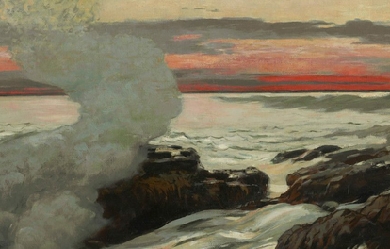
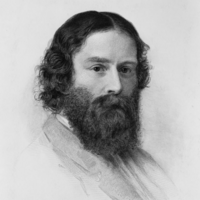
James Russell Lowell (/ˈloʊəl/; February 22, 1819– August 12, 1891) was an American Romantic poet, critic, editor, and diplomat. He is associated with the Fireside Poets, a group of New England writers who were among the first American poets who rivaled the popularity of British poets. These poets usually used conventional forms and meters in their poetry, making them suitable for families entertaining at their fireside. Lowell graduated from Harvard College in 1838, despite his reputation as a troublemaker, and went on to earn a law degree from Harvard Law School. He published his first collection of poetry in 1841 and married Maria White in 1844. He and his wife had several children, though only one survived past childhood. The couple soon became involved in the movement to abolish slavery, with Lowell using poetry to express his anti-slavery views and taking a job in Philadelphia, Pennsylvania, as the editor of an abolitionist newspaper. After moving back to Cambridge, Lowell was one of the founders of a journal called The Pioneer, which lasted only three issues. He gained notoriety in 1848 with the publication of A Fable for Critics, a book-length poem satirizing contemporary critics and poets. The same year, he published The Biglow Papers, which increased his fame. He went on to publish several other poetry collections and essay collections throughout his literary career. Maria White died in 1853, and Lowell accepted a professorship of languages at Harvard in 1854; he continued to teach there for twenty years. He traveled to Europe before officially assuming his role in 1856. He married his second wife, Frances Dunlap, shortly thereafter in 1857. That year Lowell also became editor of The Atlantic Monthly. It was not until 20 years later that Lowell received his first political appointment, the ambassadorship to the Kingdom of Spain. He was later appointed ambassador to the Court of St. James’s. He spent his last years in Cambridge, in the same estate where he was born, and died there in 1891. Lowell believed that the poet played an important role as a prophet and critic of society. He used poetry for reform, particularly in abolitionism. However, Lowell’s commitment to the anti-slavery cause wavered over the years, as did his opinion on African-Americans. Lowell attempted to emulate the true Yankee accent in the dialogue of his characters, particularly in The Biglow Papers. This depiction of the dialect, as well as Lowell’s many satires, was an inspiration to writers like Mark Twain and H.L. Mencken. Biography Early life The first of the Lowell family ancestors to come to the United States from Britain was Percival Lowle, who settled in Newbury, Massachusetts, in 1639. James Russell Lowell was born February 22, 1819, the son of the Reverend Charles Russell Lowell, Sr. (1782–1861), a minister at a Unitarian church in Boston, who had previously studied theology at Edinburgh, and Harriett Brackett Spence Lowell. By the time James Russell Lowell was born, the family owned a large estate in Cambridge called Elmwood. He was the youngest of six children; his siblings were Charles, Rebecca, Mary, William, and Robert. Lowell’s mother built in him an appreciation for literature at an early age, especially in poetry, ballads, and tales from her native Orkney. He attended school under Sophia Dana, who would later marry George Ripley, and later studied at a school run by a particularly harsh disciplinarian, where one of his classmates was Richard Henry Dana, Jr. Beginning in 1834, at the age of 15, Lowell attended Harvard College, though he was not a good student and often got into trouble. In his sophomore year alone, he was absent from required chapel attendance 14 times and from classes 56 times. In his last year there, he wrote, “During Freshman year, I did nothing, during Sophomore year I did nothing, during Junior year I did nothing, and during Senior year I have thus far done nothing in the way of college studies.” In his senior year, he became one of the editors of Harvardiana literary magazine, to which he contributed prose and poetry that he admitted was of low quality. As he said later, "I was as great an ass as ever brayed & thought it singing." During his undergraduate years, Lowell was a member of Hasty Pudding and served both as Secretary and Poet. Lowell was elected the poet of the class of 1838 and, as was tradition, was asked to recite an original poem on Class Day, the day before Commencement, on July 17, 1838. Lowell, however, was suspended and not allowed to participate. Instead, his poem was printed and made available thanks to subscriptions paid by his classmates. Lowell had composed the poem in Concord, Massachusetts, where, because of his neglect of his studies, he had been exiled by the Harvard faculty to the care of the Rev. Barzallai Frost. During his stay in Concord, he became friends with Ralph Waldo Emerson, and got to know the other Transcendentalists. The poem satirized the social movements of the day; abolitionists, Thomas Carlyle, Emerson, and the Transcendentalists were treated. Not knowing what vocation to choose after graduating, he vacillated among business, the ministry, medicine, and law. Having decided to practice law, he enrolled at Harvard Law School in 1840 and was admitted to the bar two years later. While studying law, however, he contributed poems and prose articles to various magazines. During this time, Lowell was admittedly depressed and often had suicidal thoughts. He once confided to a friend that he held a cocked pistol to his forehead and considered killing himself at the age of 20. Marriage and family In late 1839, Lowell met Maria White through her brother William, a classmate of his at Harvard, and the two became engaged in the autumn of 1840. Maria’s father Abijah White, a wealthy merchant from Watertown, insisted that their wedding be postponed until Lowell had gainful employment. They were finally married on December 26, 1844, shortly after the groom published Conversations on the Old Poets, a collection of his previously published essays. A friend described their relationship as “the very picture of a True Marriage.” Lowell himself believed she was made up “half of earth and more than half of Heaven.” Like Lowell, she wrote poetry, and the next twelve years of Lowell’s life were deeply affected by her influence. He said his first book of poetry, A Year’s Life (1841), “owes all its beauty to her,” though it only sold 300 copies. Her character and beliefs led her to become involved in the movements directed against intemperance and slavery. Maria was a member of the Boston Female Anti-Slavery Society and persuaded her husband to become an abolitionist. James had previously expressed antislavery sentiments, but Maria urged him towards more active expression and involvement. His second volume of poems, Miscellaneous Poems, expressed these antislavery thoughts and its 1,500 copies sold well. Maria was in poor health, and thinking her lungs could heal there, the couple moved to Philadelphia shortly after their marriage. In Philadelphia, he became a contributing editor for the Pennsylvania Freeman, an abolitionist newspaper. In the spring of 1845, the Lowells returned to Cambridge, Massachusetts, to make their home at Elmwood. They had four children, though only one (Mabel, born 1847) survived past infancy. Their first, Blanche, was born December 31, 1845, but lived only fifteen months; Rose, born in 1849, survived only a few months as well; their only son, Walter, was born in 1850 but died in 1852. Lowell was very affected by the loss of almost all of his children. His grief over the death of his first daughter in particular was expressed in his poem “The First Snowfall” (1847). Again, Lowell considered suicide, writing to a friend that he thought “of my razors and my throat and that I am a fool and a coward not to end it all at once.” Literary career Lowell’s earliest poems were published without remuneration in the Southern Literary Messenger in 1840. Lowell, inspired to new efforts towards self-support, joined with his friend Robert Carter in founding a literary journal, The Pioneer. The periodical was distinguished by the fact that most of its content was new rather than material that had been previously published elsewhere, and by the inclusion of very serious criticism, which covered not only literature but also art and music. Lowell wrote that it would “furnish the intelligent and reflecting portion of the Reading Public with a rational substitute for the enormous quantity of thrice-diluted trash, in the shape of namby-pamby love tales and sketches, which is monthly poured out to them by many of our popular Magazines.” William Wetmore Story noted the journal’s higher taste, writing that "it took some stand & appealled to a higher intellectual Standard than our puerile milk or watery namby-pamby Mags with which we are overrun." The first issue of the journal included the first appearance of “The Tell-Tale Heart” by Edgar Allan Poe. Lowell, shortly after the first issue, was treated for an eye disease in New York, and in his absence Carter did a poor job of managing the journal. After three monthly numbers, beginning in January 1843, the magazine ceased publication, leaving Lowell $1,800 in debt. Poe mourned the journal’s demise, calling it “a most severe blow to the cause—the cause of a Pure Taste.” Despite the failure of The Pioneer, Lowell continued his interest in the literary world. He wrote a series on “Anti-Slavery in the United States” for the London Daily News, though his series was discontinued by the editors after four articles in May 1846. Lowell had published these articles anonymously, believing they would have more impact if they were not known to be the work of a committed abolitionist. In the spring of 1848 he formed a connection with the National Anti-Slavery Standard of New York, agreeing to contribute weekly either a poem or a prose article. After only one year, he was asked to contribute half as often to the Standard to make room for contributions from Edmund Quincy, another writer and reformer. A Fable for Critics, one of Lowell’s most popular works, was published in 1848. A satire, it was published anonymously. It proved popular, and the first three thousand copies sold out quickly. In it, Lowell took good-natured jabs at his contemporary poets and critics. Not all the subjects included were pleased, however. Edgar Allan Poe, who had been referred to as part genius and “two-fifths sheer fudge,” reviewed the work in the Southern Literary Messenger and called it “'loose’—ill-conceived and feebly executed, as well in detail as in general.... we confess some surprise at his putting forth so unpolished a performance.” Lowell offered the profits from the book’s success, which proved relatively small, to his New York friend Charles Frederick Briggs, despite his own financial needs. In 1848, Lowell also published The Biglow Papers, later named by the Grolier Club as the most influential book of 1848. The first 1,500 copies sold out within a week and a second edition was soon issued, though Lowell made no profit, having had to absorb the cost of stereotyping the book himself. The book presented three main characters, each representing different aspects of American life and using authentic American dialects in their dialogue. Under the surface, The Biglow Papers was also a denunciation of the Mexican–American War and war in general. First trip to Europe In 1850, Lowell’s mother died unexpectedly, as did his third daughter, Rose. Her death left Lowell depressed and reclusive for six months, despite the birth of his son Walter by the end of the year. He wrote to a friend that death “is a private tutor. We have no fellow-scholars, and must lay our lessons to heart alone.” These personal troubles as well as the Compromise of 1850 inspired Lowell to accept an offer from William Wetmore Story to spend a winter in Italy. To pay for the trip, Lowell sold land around Elmwood, intending to sell off further acres of the estate over time to supplement his income, ultimately selling off 25 of the original 30 acres (120,000 m2). Walter died suddenly in Rome of cholera, and Lowell and his wife, with their daughter Mabel, returned to the United States in October 1852. Lowell published recollections of his journey in several magazines, many of which would be collected years later as Fireside Travels (1867). He also edited volumes with biographical sketches for a series on British Poets. His wife Maria, who had been suffering from poor health for many years, became very ill in the spring of 1853 and died on October 27 of tuberculosis. Just before her burial, her coffin was opened so that her daughter Mabel could see her face while Lowell “leaned for a long while against a tree weeping,” according to Henry Wadsworth Longfellow and his wife, who were in attendance. In 1855, Lowell oversaw the publication of a memorial volume of his wife’s poetry, with only fifty copies for private circulation. Despite his self-described “naturally joyous” nature, life for Lowell at Elmwood was further complicated by his father becoming deaf in his old age, and the deteriorating mental state of his sister Rebecca, who sometimes went a week without speaking. He again cut himself off from others, becoming reclusive at Elmwood, and his private diaries from this time period are riddled with the initials of his wife. On March 10, 1854, for example, he wrote: "Dark without & within. M.L. M.L. M.L." Longfellow, a friend and neighbor, referred to Lowell as “lonely and desolate.” Professorship and second marriage At the invitation of his cousin John Amory Lowell, James Russell Lowell was asked to deliver a lecture at the prestigious Lowell Institute. Some speculated the opportunity was because of the family connection, offered as an attempt to bring him out of his depression. Lowell chose to speak on “The English Poets,” telling his friend Briggs that he would take revenge on dead poets “for the injuries received by one whom the public won’t allow among the living.” The first of the twelve-part lecture series was to be on January 9, 1855, though by December, Lowell had only completed writing five of them, hoping for last-minute inspiration. His first lecture was on John Milton and the auditorium was oversold; Lowell had to give a repeat performance the next afternoon. Lowell, who had never spoken in public before, was praised for these lectures. Francis James Child said that Lowell, whom he deemed was typically “perverse,” was able to “persist in being serious contrary to his impulses and his talents.” While his series was still in progress, Lowell was offered the Smith Professorship of Modern Languages at Harvard, a post vacated by Longfellow, at an annual salary of $1,200, though he never applied for it. The job description was changing after Longfellow; instead of teaching languages directly, Lowell would supervise the department and deliver two lecture courses per year on topics of his own choosing. Lowell accepted the appointment, with the proviso that he should have a year of study abroad. He set sail on June 4 of that year, leaving his daughter Mabel in the care of a governess named Frances Dunlap. Abroad, he visited Le Havre, Paris, and London, spending time with friends including Story, Robert Browning and Elizabeth Barrett Browning, and Leigh Hunt. Primarily, however, Lowell spent his time abroad studying languages, particularly German, which he found difficult. He complained: “The confounding genders! If I die I shall have engraved on my tombstone that I died of der, die, das, not because I caught them but because I couldn’t.” He returned to the United States in the summer of 1856 and began his college duties. Towards the end of his professorship, then-president of Harvard Charles William Eliot noted that Lowell seemed to have “no natural inclination” to teach; Lowell agreed, but retained his position for twenty years. He focused on teaching literature, rather than etymology, hoping that his students would learn to enjoy the sound, rhythm, and flow of poetry rather than the technique of words. He summed up his method: “True scholarship consists in knowing not what things exists, but what they mean; it is not memory but judgment.” Still grieving the loss of his wife, during this time Lowell avoided Elmwood and instead lived on Kirkland Street in Cambridge, an area known as Professors’ Row. He stayed there, along with his daughter Mabel and her governess Frances Dunlap, until January 1861. Lowell had intended never to remarry after the death of his wife Maria White. However, in 1857, surprising his friends, he became engaged to Frances Dunlap, who many described as simple and unattractive. Dunlap, niece of the former governor of Maine Robert P. Dunlap, was a friend of Lowell’s first wife and formerly wealthy, though she and her family had fallen into reduced circumstances. Lowell and Dunlap married on September 16, 1857, in a ceremony performed by his brother. Lowell wrote, "My second marriage was the wisest act of my life, & as long as I am sure of it, I can afford to wait till my friends agree with me.” The war years and beyond In the autumn of 1857, The Atlantic Monthly was established, and Lowell was its first editor. With its first issue in November of that year, he at once gave the magazine the stamp of high literature and of bold speech on public affairs. In January 1861, Lowell’s father died of a heart attack, inspiring Lowell to move his family back to Elmwood. As he wrote to his friend Briggs, “I am back again to the place I love best. I am sitting in my old garret, at my old desk, smoking my old pipe... I begin to feel more like my old self than I have these ten years.” Shortly thereafter, in May, he left The Atlantic Monthly when James Thomas Fields took over as editor; the magazine had been purchased by Ticknor and Fields for $10,000 two years before. Lowell returned to Elmwood by January 1861 but maintained an amicable relationship with the new owners of the journal, continuing to submit his poetry and prose for the rest of his life. His prose, however, was more abundantly presented in the pages of the North American Review during the years 1862–1872. For the Review, he served as a coeditor along with Charles Eliot Norton. Lowell’s reviews for the journal covered a wide variety of literary releases of the day, though he was writing fewer poems. As early as 1845, Lowell had predicted the debate over slavery would lead to war and, as the American Civil War broke out in the 1860s, Lowell used his role at the Review to praise Abraham Lincoln and his attempts to maintain the Union. Lowell lost three nephews during the war, including Charles Russell Lowell, Jr, who became a Brigadier General and fell at the battle of Cedar Creek. Lowell himself was generally a pacifist. Even so, he wrote, “If the destruction of slavery is to be a consequence of the war, shall we regret it? If it be needful to the successful prosecution of the war, shall anyone oppose it?” His interest in the Civil War inspired him to write a second series of The Biglow Papers, including one specifically dedicated to the preliminary Emancipation Proclamation called “Sunthin’ in the Pastoral Line” in 1862. Shortly after Lincoln’s assassination, Lowell was asked to present a poem at Harvard in memory of graduates killed in the war. His poem, “Commemoration Ode,” cost him sleep and his appetite, but was delivered on July 21, 1865, after a 48-hour writing binge. Lowell had high hopes for his performance but was overshadowed by the other notables presenting works that day, including Ralph Waldo Emerson and Oliver Wendell Holmes, Sr. “I did not make the hit I expected,” he wrote, “and am ashamed at having been tempted again to think I could write poetry, a delusion from which I have been tolerably free these dozen years.” Despite his personal assessment, friends and other poets sent many letters to Lowell congratulating him. Emerson referred to his poem’s "high thought & sentiment" and James Freeman Clarke noted its “grandeur of tone.” Lowell later expanded it with a strophe to Lincoln. In the 1860s, Lowell’s friend Longfellow spent several years translating Dante Alighieri’s Divine Comedy and regularly invited others to help him on Wednesday evenings. Lowell was one of the main members of the so-called “Dante Club,” along with William Dean Howells, Charles Eliot Norton and other occasional guests. Shortly after serving as a pallbearer at the funeral of friend and publisher Nathaniel Parker Willis, on January 24, 1867, Lowell decided to produce another collection of his poetry. Under the Willows and Other Poems was released in 1869, though Lowell originally wanted to title it The Voyage to the Vinland and Other Poems. The book, dedicated to Norton, collected poems Lowell had written within the previous twenty years and was his first poetry collection since 1848. Lowell intended to take another trip to Europe. To finance it, he sold off more of Elmwood’s acres and rented the house to Thomas Bailey Aldrich; Lowell’s daughter Mabel, by this time, had moved into a new home with her husband Edward Burnett, the son of a successful businessman-farmer from Southboro, Massachusetts. Lowell and his wife set sail on July 8, 1872, after he took a leave of absence from Harvard. They visited England, Paris, Switzerland, and Italy. While overseas, he received an honorary Doctorate of Law from the University of Oxford and another from Cambridge University. They returned to the United States in the summer of 1874. Political appointments Lowell resigned from his Harvard professorship in 1874, though he was persuaded to continue teaching through 1877. It was in 1876 that Lowell first stepped into the field of politics. That year, he served as a delegate to the Republican National Convention in Cincinnati, Ohio, speaking on behalf of presidential candidate Rutherford B. Hayes. Hayes won the nomination and, eventually, the presidency. In May 1877, President Hayes, an admirer of The Biglow Papers, sent William Dean Howells to Lowell with a handwritten note proffering an ambassadorship to either Austria or Russia; Lowell declined, but noted his interest in Spanish literature. Lowell was then offered and accepted the role of Minister to the court of Spain at an annual salary of $12,000. Lowell sailed from Boston on July 14, 1877, and, though he expected he would be away for a year or two, he would not return to the United States until 1885, with the violinist Ole Bull renting Elmwood for a portion of that time. The Spanish media referred to him as “José Bighlow.” Lowell was well-prepared for his political role, having been trained in law, as well as being able to read in multiple languages. He had trouble socializing while in Spain, however, and amused himself by sending humorous dispatches to his political bosses in the United States, many of which were later collected and published posthumously in 1899 as Impressions of Spain. Lowell’s social life improved when the Spanish Academy elected him a corresponding member in late 1878, allowing him contribute to the preparation of a new dictionary. In January 1880, Lowell was informed he was appointed Minister to England, his nomination made without his knowledge as far back as June 1879. He was granted a salary of $17,500 with about $3,500 for expenses. While serving in this capacity, he addressed an importation of allegedly diseased cattle and made recommendations that predated the Pure Food and Drug Act. Queen Victoria commented that she had never seen an ambassador who “created so much interest and won so much regard as Mr. Lowell.” Lowell held this role until the close of Chester A. Arthur’s presidency in the spring of 1885, despite his wife’s failing health. Lowell was already well known in England for his writing and, during his time there, he befriended fellow author Henry James, who referred to him as “conspicuously American.” Lowell also befriended Leslie Stephen many years earlier and became the godfather to his daughter, future writer Virginia Woolf. Lowell was popular enough that he was offered a professorship at Oxford after his recall by president Grover Cleveland, though the offer was declined. His second wife, Frances, died on February 19, 1885, while still in England. Later years and death He returned to the United States by June 1885, living with his daughter and her husband in Southboro, Massachusetts. He then spent time in Boston with his sister before returning to Elmwood in November 1889. By this time, most of his friends were dead, including Quincy, Longfellow, Dana, and Emerson, leaving him depressed and contemplating suicide again. Lowell spent part of the 1880s delivering various speeches, and his last published works were mostly collections of essays, including Political Essays, and a collection of his poems Heartsease and Rue in 1888. His last few years he traveled back to England periodically and when he returned to the United States in the fall of 1889, he moved back to Elmwood with Mabel, while her husband worked for clients in New York and New Jersey. That year, Lowell gave an address at the centenary of George Washington’s inauguration. Also that year, the Boston Critic dedicated a special issue to Lowell on his seventieth birthday to recollections and reminiscences by his friends, including former presidents Hayes and Benjamin Harrison and British Prime Minister William Ewart Gladstone as well as Alfred Tennyson and Francis Parkman. In the last few months of his life, Lowell struggled with gout, sciatica in his left leg, and chronic nausea; by the summer of 1891, doctors believed that Lowell had cancer in his kidneys, liver, and lungs. His last few months, he was administered opium for the pain and was rarely fully conscious. He died on August 12, 1891, at Elmwood. After services in the Appleton Chapel, he was buried in Mount Auburn Cemetery. After his death, Norton served as his literary executor and published several collections of Lowell’s works and his letters. Writing style and literary theory Early in his career, James Russell Lowell’s writing was influenced by Swedenborgianism, a Spiritualism-infused form of Christianity founded by Emanuel Swedenborg, causing Frances Longfellow (wife of the poet Henry Wadsworth Longfellow) to mention that “he has been long in the habit of seeing spirits.” He composed his poetry rapidly when inspired by an “inner light” but could not write to order. He subscribed to the common nineteenth-century belief that the poet was a prophet but went further, linking religion, nature, and poetry, as well as social reform. Evert Augustus Duyckinck and others welcomed Lowell as part of Young America, a New York-based movement. Though not officially affiliated with them, he shared some of their ideals, including the belief that writers have an inherent insight into the moral nature of humanity and have an obligation for literary action along with their aesthetic function. Unlike many of his contemporaries, including members of Young America, Lowell did not advocate for the creation of a new national literature. Instead, he called for a natural literature, regardless of country, caste, or race, and warned against provincialism which might “put farther off the hope of one great brotherhood.” He agreed with his neighbor Longfellow that “whoever is most universal, is also most national.” As Lowell said: I believe that no poet in this age can write much that is good unless he gives himself up to [the radical] tendency... The proof of poetry is, in my mind, that it reduces to the essence of a single line the vague philosophy which is floating in all men’s minds, and so render it portable and useful, and ready to the hand... At least, no poem ever makes me respect its author which does not in some way convey a truth of philosophy. A scholar of linguistics, Lowell was one of the founders of the American Dialect Society. He used this interest in his writing, particularly in The Biglow Papers, presenting a heavily ungrammatical phonetic spelling of the Yankee dialect. In using this vernacular, Lowell intended to get closer to the common man’s experience and was rebelling against more formal and, as he thought, unnatural representations of Americans in literature. As he wrote in his introduction to The Biglow Papers, “few American writers or speakers wield their native language with the directness, precision, and force that are common as the day in the mother country.” Though intentionally humorous, this accurate presentation of the dialect was pioneering work in American literature. For example, Lowell’s character Hosea Biglow says in verse: Lowell is considered one of the Fireside Poets, a group of writers from New England in the 1840s who all had a substantial national following and whose work was often read aloud by the family fireplace. Besides Lowell, the main figures from this group were Longfellow, Holmes, John Greenleaf Whittier, and William Cullen Bryant. Beliefs Although he was an abolitionist, Lowell’s opinions on African-Americans wavered. Though Lowell advocated suffrage for blacks, he noted that their ability to vote could be troublesome. Even so, he wrote, “We believe the white race, by their intellectual and traditional superiority, will retain sufficient ascendancy to prevent any serious mischief from the new order of things.” Freed slaves, he wrote, were "dirty, lazy & lying." Even before his marriage to the abolitionist Maria White, Lowell wrote: “The abolitionists are the only ones with whom I sympathize of the present extant parties.” After his marriage, Lowell at first did not share White’s enthusiasm for the cause but was eventually pulled in. The couple often gave money to fugitive slaves, even when their own financial situation was not strong, especially if they were asked to free a spouse or child. Even so, he did not always fully agree with the followers of the movement. The majority of these people, he said, “treat ideas as ignorant persons do cherries. They think them unwholesome unless they are swallowed, stones and all.” Lowell depicted Southerners very unfavorably in his second collection of The Biglow Papers but, by 1865, admitted that Southerners were “guilty only of weakness” and, by 1868, said that he sympathized with Southerners and their viewpoint on slavery. Enemies and friends of Lowell alike questioned his vacillating interest in the question of slavery. Abolitionist Samuel Joseph May accused Lowell of trying to quit the movement because of his association with Harvard and the Boston Brahmin culture: “Having got into the smooth, dignified, self-complacent, and change-hating society of the college and its Boston circles, Lowell has gone over to the world, and to 'respectability’.” Lowell was also involved in other reform movements. He urged for better conditions for factory workings, opposed capital punishment, and supported the temperance movement. His friend Longfellow was especially concerned about his fanaticism for temperance, worrying that Lowell would ask him to destroy his wine cellar. There are many references to Lowell’s drinking during his college years and part of his reputation in school was based on it. His friend Edward Everett Hale denied these allegations and, even then, Lowell considered joining the “Anti-Wine” club and later, during the early years of his first marriage, became a teetotaler. However, as Lowell gained notoriety, he became popular in social circles and clubs and, away from his wife, he drank rather heavily. When he drank, he had wild mood swings, ranging from euphoria to frenzy. Criticism and legacy In 1849, Lowell said of himself, “I am the first poet who has endeavored to express the American Idea, and I shall be popular by and by.” Poet Walt Whitman said: “Lowell was not a grower—he was a builder. He built poems: he didn’t put in the seed, and water the seed, and send down his sun—letting the rest take care of itself: he measured his poems—kept them within formula.” Fellow Fireside Poet John Greenleaf Whittier praised Lowell by writing two poems in his honor and calling him “our new Theocritus” and “one of the strongest and manliest of our writers–a republican poet who dares to speak brave words of unpopular truth.” British author Thomas Hughes referred to Lowell as one of the most important writers in the United States: "Greece had her Aristophanes; Rome her Juvenal; Spain has had her Cervantes; France her Rabelais, her Molière, her Voltaire; Germany her Jean Paul, her Heine; England her Swift, her Thackeray; and America has her Lowell." Lowell’s satires and use of dialect were an inspiration for writers like Mark Twain, William Dean Howells, H. L. Mencken, and Ring Lardner. Contemporary critic and editor Margaret Fuller wrote, “his verse is stereotyped; his thought sounds no depth, and posterity will not remember him.” Duyckinck thought Lowell was too similar to other poets like William Shakespeare and John Milton. Ralph Waldo Emerson noted that, though Lowell had significant technical skill, his poetry “rather expresses his wish, his ambition, than the uncontrollable interior impulse which is the authentic mark of a new poem... and which is felt in the pervading tone, rather than in brilliant parts or lines.” Even his friend Richard Henry Dana Jr., questioned Lowell’s abilities, calling him "very clever, entertaining & good humored... but he is rather a trifler, after all." In the twentieth century, poet Richard Armour dismissed Lowell, writing: “As a Harvard graduate and an editor for the Atlantic Monthly, it must have been difficult for Lowell to write like an illiterate oaf, but he succeeded.” The poet Amy Lowell featured her relative James Russell Lowell in her poem A Critical Fable (1922), the title mocking A Fable for Critics. Here, a fictional version of Lowell says he does not believe that women will ever be equal to men in the arts and “the two sexes cannot be ranked counterparts.” Modern literary critic Van Wyck Brooks wrote that Lowell’s poetry was forgettable: “one read them five times over and still forgot them, as if this excellent verse had been written in water.” Nonetheless, in 1969 the Modern Language Association established a prize named after Lowell, awarded annually for “an outstanding literary or linguistic study, a critical edition of an important work, or a critical biography.” Lowell’s poem “The Present Crisis,” an early work that addressed the national crisis over slavery leading up to the Civil War, has had an impact in the modern civil rights movement. The National Association for the Advancement of Colored People named its newsletter The Crisis after the poem, and Martin Luther King, Jr. frequently quoted the poem in his speeches and sermons. The poem was also the source of the hymn Once to Every Man and Nation. List of selected works Poetry collections * A Year’s Life (1841) * Miscellaneous Poems (1843) * The Biglow Papers (1848) * A Fable for Critics (1848) * Poems (1848) * The Vision of Sir Launfal (1848) * Under the Willows (1869) * The Cathedral (1870) * Heartsease and Rue (1888) Essay collections * Conversations on the Old Poets (1844) * Fireside Travels (1864) * Among My Books (1870) * My Study Windows (1871) * Among My Books (second collection, 1876) * Democracy and Other Addresses (1886) * Political Essays (1888) References Wikipedia—https://en.wikipedia.org/wiki/James_Russell_Lowell

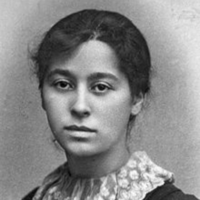
Amy Judith Levy (10 November 1861– 10 September 1889) was a British essayist, poet, and novelist best remembered for her literary gifts; her experience as the first Jewish woman at Cambridge University and as a pioneering woman student at Newnham College, Cambridge; her feminist positions; her friendships with others living what came later to be called a “new woman” life, some of whom were lesbians; and her relationships with both women and men in literary and politically activist circles in London during the 1880s. Biography Levy was born in Clapham, an affluent district of London, on November 10, 1861, to Lewis and Isobel Levy. She was the second of seven children born into a Jewish family with a “casual attitude toward religious observance” who sometimes attended a Reform synagogue in Upper Berkeley Street. As an adult, Levy continued to identify herself as Jewish and wrote for The Jewish Chronicle. Levy showed interest in literature from an early age. At 13, she wrote a criticism of Elizabeth Barrett Browning’s feminist work Aurora Leigh; at 14, Levy’s first poem, “Ida Grey: A Story of Woman’s Sacrifice”, was published in the journal Pelican. Her family was supportive of women’s education and encouraged Amy’s literary interests; in 1876, she was sent to Brighton and Hove High School and later studied at Newnham College, Cambridge. Levy was the first Jewish student at Newnham when she arrived in 1879 but left before her final year without taking her exams. Her circle of friends included Clementina Black, Dollie Radford, Eleanor Marx (daughter of Karl Marx), and Olive Schreiner. While travelling in Florence in 1886, Levy met Vernon Lee, a fiction writer and literary theorist six years her senior, and fell in love with her. Both women would go on to write works with themes of sapphic love. Lee inspired Levy’s poem “To Vernon Lee.” Literary career The Romance of a Shop (1888), Levy’s first novel, is regarded as an early “New Woman” novel and depicts four sisters who experience the difficulties and opportunities afforded to women running a business in 1880s London, Levy wrote her second novel, Reuben Sachs (1888), to fill the literary need for “serious treatment... of the complex problem of Jewish life and Jewish character”, which she identified and discussed in her 1886 article “The Jew in Fiction.” Levy wrote stories, essays, and poems for popular or literary periodicals; the stories “Cohen of Trinity” and “Wise in Their Generation”, both published in Oscar Wilde’s magazine The Woman’s World, are among her most notable. In 1886, Levy began writing a series of essays on Jewish culture and literature for The Jewish Chronicle, including The Ghetto at Florence, The Jew in Fiction, Jewish Humour, and Jewish Children. Levy’s works of poetry, including the daring A Ballad of Religion and Marriage, reveal her feminist concerns. Xantippe and Other Verses (1881) includes “Xantippe”, a poem in the voice of Socrates’s wife; the volume A Minor Poet and Other Verse (1884) includes more dramatic monologues as well as lyric poems. Her final book of poems, A London Plane-Tree (1889), contains lyrics that are among the first to show the influence of French symbolism. Suicide Levy suffered from episodes of major depression from an early age. In her later years, her depression worsened in connection to her distress surrounding her romantic relationships and her awareness of her growing deafness. Two months away from her 28th birthday, she committed suicide at the residence of her parents... [at] Endsleigh Gardens by inhaling carbon monoxide. Oscar Wilde wrote an obituary for her in Women’s World in which he praised her gifts.
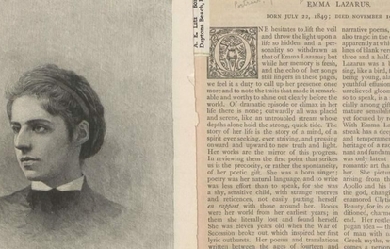
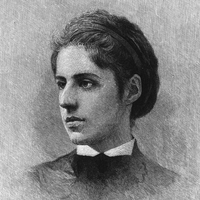
Emma Lazarus (July 22, 1849– November 19, 1887) was an American poet born in New York City. She is best known for “The New Colossus”, a sonnet written in 1883; its lines appear inscribed on a bronze plaque in the pedestal of the Statue of Liberty installed in 1903, a decade and a half after Lazarus’s death. Lazarus was born into a large Sephardic-Ashkenazi Jewish family, the fourth of seven children of Moses Lazarus and Esther Nathan, The Lazarus family was from Germany, and the Nathan family was originally from Portugal and resident in New York long before the American Revolution.


Bruce Jun Fan Lee was born in the hour of the Dragon, between 6 and 8 a.m., in the year of the Dragon on November 27, 1940 at the Jackson Street Hospital in San Francisco’s Chinatown. Today, a plaque in the hospital’s entry commemorates the place of his birth. Bruce’s birth, in the hour and the year of the Dragon, is a powerful symbol in Chinese astrology. It would be a strong omen of the powerful life that was to be lived by Bruce Lee and the explosive impact his life would have on countless others. Bruce was the fourth child born to Lee Hoi Chuen and his wife Grace Ho. He had two older sisters, Phoebe and Agnes, an older brother, Peter, and a younger brother, Robert. Lee Hoi Chuen was, by profession, a comedian in the Chinese opera and an actor in Cantonese films. At the time Bruce was born, Mr. and Mrs. Lee were on tour with the opera company in the United States. Thus, it was fortuitous for Bruce’s future that his birth took place in America, as he would return 18 years later to claim his birthright of American citizenship. Bruce’s parents gave him the name “Jun Fan.” Since it is Chinese custom to put the surname first, Bruce’s full name is written Lee Jun Fan. The true meaning of Jun Fan deserves an explanation as it, too, would foretell the journey of the newly born Lee son. Literally, JUN means “to arouse to the active state” or “to make prosperous.” It was a common middle name used by Hong Kong Chinese boys in those days, understandably because China and the Chinese people were very vulnerable at that time, and everyone, including Bruce’s parents, wanted the “sleeping lion of the East” to wake up. The FAN syllable refers to the Chinese name for San Francisco, but its true meaning is “fence of a garden” or “bordering subordinate countries of a big country.” During the period of the Ching Dynasty (1644-1911), many Chinese immigrated to Hawaii and San Francisco as laborers, and the implication became that the United States was FAN of the Great Ching Empire. Thus the true meaning of Bruce’s name--JUN FAN--was “to arouse and make FAN (the United States) prosperous.” The gut feeling of many Chinese at that time, who felt suppressed by and inferior to foreign powers, was that they wished to outshine the more superior countries and regain the Golden Age of China. Bruce’s parents wanted Bruce to have his name shine and shake the foreign countries, which he certainly succeeded in doing. The English name, BRUCE, was given to the baby boy by a nurse in the Jackson Street Hospital although he was never to use this name until he entered secondary school and began his study of the English language. The story goes that on the first day of English class, the students were asked to write down their English names, and Bruce, not knowing his name, copied the name of the student next to him. His family almost never used the name Bruce, especially in his growing up years when his nickname in the family was “SAI FON,” which literally means Little Peacock. This is a girl’s nickname, but in being applied to Bruce, it had a serious purpose. The first-born child of Mr. and Mrs. Lee had been a boy who did not survive infancy. Their belief was that if the gods did not favor the birth of a male child, the babe might be taken away. Thus, the name, Little Peacock, was used as a ruse to fool the gods into thinking that Bruce was a girl. It was a term of great affection within the family circle. At the age of three months, Lee Hoi Chuen, his wife Grace and baby Bruce returned to Hong Kong where Bruce would be raised until the age of 18. Probably because of the long ocean voyage and the change in climates, Bruce was not a strong child in his very early years, a condition that would change when he took up the study of gung fu at the age of 13. (Bruce always spelled his Chinese martial art as GUNG FU, which is the Cantonese pronunciation of the more commonly spelled Kung Fu, a Mandarin pronunciation.) Bruce’s most prominent memory of his early years was the occupation of Hong Kong by the Japanese during the World War II years (1941-1945). The residence of the Lee family was a flat at 218 Nathan Road in Kowloon directly across the street from the military encampment of the Japanese. Bruce’s mother often told the story of young Bruce, less than 5 years old, leaning precariously off the balcony of their home raising his fist to the Japanese Zeros circling above. Another nickname the family often applied to Bruce was “Mo Si Ting” which means “never sits still” and aptly described his personality. The Japanese occupation was Bruce’s first prescient memory, but Hong Kong had been a British Crown Colony since the late 1800’s. The English returned to power at the end of the war. It is not hard to see why young Bruce would have rebellious feelings toward foreign usurpation of his homeland. In his teenage years Bruce was exposed to the common practice of unfriendly taunting by English school boys who appeared to feel superior to the Chinese. It is not surprising that Bruce and his friends retaliated by returning the taunts and sometimes getting into fights with the English boys. This atmosphere laid the background for Bruce to begin his study of martial arts. At the age of 13, Bruce was introduced to Master Yip Man, a teacher of the Wing Chun style of gung fu. For five years Bruce studied diligently and became very proficient. He greatly revered Yip Man as a master teacher and wise man and frequently visited with him in later years. When he first took up gung fu, he used his new skills to pummel his adversaries, but it did not take long for Bruce to learn that the real value of martial arts training is that the skills of physical combat instill confidence to the point that one does not feel the constant need to defend one’s honor through fighting. In high school, Bruce, now no longer a weak child, was beginning to hone his body through hard training. One of his accomplishments was winning an interschool Boxing Championship against an English student in which the Marquis of Queensbury rules were followed and no kicking was allowed. Given the graceful movements, which would later be spectacularly displayed in his films, it is no surprise that Bruce was also a terrific dancer, and in 1958 he won the Hong Kong Cha Cha Championship. He studied dancing as assiduously as he did gung fu, keeping a notebook in which he had noted 108 different cha cha steps. It is easy to see that Bruce possessed the traits of self-discipline and hard work which would later hold him in good stead, even though at this stage he was not among the best academic students in the class. In addition to his studies, gung fu and dancing, Bruce had another side interest during his school years. He was a child actor under the tutelage of his father who must have known from an early age that Bruce had a streak of showmanship. Bruce’s very first role was as a babe in arms as he was carried onto the stage. By the time he was 18, he had appeared in 20 films. In those days movie making was not particularly glamorous or remunerative in Hong Kong, but Bruce loved acting. His mother often told stories of how Bruce was impossible to wake up to go to school, but just a tap on the shoulder at midnight would rouse him from his bed to go to the film studio. Movies were most often made at night in Hong Kong in order to minimize the sounds of the city. (See Filmography) At the age of 18, Bruce was looking for new vistas in his life, as were his parents who were discouraged that Bruce had not made more progress academically. It was common practice for high school graduates to go overseas to attend colleges, but that required excellent grades. Bruce’s brother and sister had come to the United States on student visas for their higher education. Although Bruce had not formally graduated from high school, and was more interested in gung fu, dancing and acting, his family decided that it was time for him to return to the land of his birth and find his future there. In April of 1959, with $100 in his pocket, Bruce boarded a steamship in the American Presidents Line and began his voyage to San Francisco. His passage was in the lower decks of the ship, but it didn’t take long for Bruce to be invited up to the first class accommodations to teach the passengers the cha cha. Landing in San Francisco, Bruce was armed with the knowledge that his dancing abilities might provide him a living, so his first job was as a dance instructor. One of his first students was Bob Lee, brother of James Y. Lee, who would become Bruce’s great friend, colleague in the martial arts, and eventually partner and Assistant Instructor of the Oakland Jun Fan Gung Fu Institute. Bruce did not stay long in San Francisco, but traveled to Seattle where a family friend, Ruby Chow, had a restaurant and had promised Bruce a job and living quarters above the restaurant. By now Bruce had left his acting and dancing passions behind and was intent on furthering his education. He enrolled at Edison Technical School where he fulfilled the requirements for the equivalent of high school graduation and then enrolled at the University of Washington. Typical of his personality traits, he attacked learning colloquial English as he had his martial arts training. Not content to speak like a foreigner, he applied himself to learning idiosyncrasies of speech. His library contained numerous books, underlined and dog-eared on common English idiomatic phrases. Although he never quite lost the hint of an English accent when speaking, his ability to turn a phrase or “be cool” was amazing for one who did not speak a word of the language until the age of 12. Bruce’s written English skills exceeded his spoken language abilities at first because he had been well tutored in the King’s proper English prose in Hong Kong. When his wife-to-be met him at the University of Washington, he easily edited her English papers for correct grammar and syntax. At the university, Bruce majored in philosophy. His passion for gung fu inspired a desire to delve into the philosophical underpinnings of the arts. Many of his written essays during those years would relate philosophical principles to certain martial arts techniques. For instance, he wrote often about the principles of yin and yang and how they could translate into hard and soft physical movements. In this way he was completing his education as a true martial artist in the time-honored Chinese sense of one whose knowledge encompasses the physical, mental and spiritual aspects of the arts. In the three years that Bruce studied at the university, he supported himself by teaching gung fu, having by this time given up working in the restaurant, stuffing newspapers or various other odd jobs. He and a few of his new friends would meet in parking lots, garages or any open space and play around with gung fu techniques. In the late ‘50’s and early ‘60’s, “gung fu” was an unknown term; in fact, the only physical art that might be listed in the yellow pages was Judo. Even the name “karate” was not a familiar term. The small group of friends was intrigued by this art called gung fu. One of the first students in this group was Jesse Glover who continues to teach some of Bruce’s early techniques to this day. It was during this period that Bruce and Taky Kimura became friends. Not only would Taky become Bruce’s gung fu student and the first Assistant Instructor he ever had, but the friendship forged between the two men was a source of love and strength for both of them. Taky Kimura has continued to be Bruce’s staunch supporter, devoting endless hours to preserving his art and philosophy throughout the 30 years since Bruce’s passing. The small circle of friends that Bruce had made encouraged him to open a real school of gung fu and charge a nominal sum for teaching in order to support himself while attending school. Renting a small basement room with a half door entry from 8th Street in Seattle’s Chinatown, Bruce decided to call his school the Jun Fan Gung Fu Institute. In 1963, having established a dedicated group of students and having given numerous demonstrations at the university, Bruce thought he might attract more students by opening a larger school at 4750 University Way where he also lived in a small room in the back of the kwoon. One of his students in 1963 was a freshman at the University of Washington, Linda Emery. Linda knew who Bruce was from his guest lectures in Chinese philosophy at Garfield High School, and in the summer after graduating, at the urging of her Chinese girlfriend, SueAnn Kay, Linda started taking gung fu lessons. It wasn’t long before the instructor became more interesting than the lessons. Bruce and Linda were married in 1964. By this time, Bruce had decided to make a career out of teaching gung fu. His plan involved opening a number of schools around the country and training assistant instructors to teach in his absence. Leaving his Seattle school in the hands of Taky Kimura, Bruce and Linda moved to Oakland where Bruce opened his second school with James Lee. The two men had formed a friendship over the years with each traveling frequently between Seattle and Oakland. James was a gung fu man from way back, but when he saw Bruce’s stuff he was so impressed that he wanted to join with him in starting a school. Thus the second branch of the Jun Fan Gung Fu Institute was founded. Having now been in the United States for five years, Bruce had left behind any thought of acting as a career, and devoted himself completely to his choice of martial arts as a profession. Up to this time Bruce’s gung fu consisted mostly of wing chun techniques and theory he had learned from Yip Man. Gradually though, because of his burgeoning interest in the philosophy of martial arts and his desire for self improvement, he was expanding his repertoire. A particular incident accelerated his process of self-exploration. In 1964 Bruce was challenged by some gung fu men from San Francisco who objected to his teaching of non-Chinese students. Bruce accepted the challenge and the men arrived at the kwoon in Oakland on the appointed day for the face off. The terms were that if Bruce were defeated he would stop teaching the non Chinese. It was a short fight with the gung fu man from The City giving up when Bruce had him pinned to the floor after about three minutes. The significance of this fight was that Bruce was extremely disappointed in his own performance. Even though he had won, he was winded and discouraged about his inability to put the man away in under three minutes. This marked a turning point for Bruce in his exploration of his martial art and the enhancement of his physical fitness. Thus began the evolution of Jeet Kune Do. Just as Bruce was cementing his plans to expand his martial arts schools, fate stepped in to move his life in another direction. In the preceding years Bruce had made the acquaintance of Ed Parker, widely regarded as the father of American Kenpo. In August of 1964, Ed invited Bruce to Long Beach, CA to give a demonstration at his First International Karate Tournament. Bruce’s exhibition was spectacular. He used Taky as his partner and demonstrated his blindfolded chi sao techniques. At one point he used a member of the audience to show the power of his one-inch punch. Such was Bruce’s charisma that he spoke conversationally, injecting humor into his comments while at the same time emphatically demonstrating his power, precision and speed. A member of the audience was Jay Sebring, a well-known hair stylist to the stars. As fate would have it, the following week, Jay was styling the hair of William Dozier, an established producer. Mr. Dozier mentioned to Jay that he was looking for an actor to play the part of Charlie Chan’s son in a series to be entitled, “Number One Son.” Jay told the producer about having seen this spectacular young Chinese man giving a gung fu demonstration just a few nights before. Mr. Dozier obtained a copy of the film that was taken at Ed Parker’s tournament. The next week he called Bruce at home in Oakland and invited him to come to Los Angeles for a screen test. Bruce’s screen test was impressive, but in the meantime plans for “Number One Son” had been scuttled. Mr. Dozier was now immersed in the production of the “Batman” TV series, but still he wanted to hang onto Bruce. The plan was that if Batman was successful for more than one season, then Dozier wanted to capitalize on the popularity of another comic book character, “The Green Hornet” with Bruce playing the part of Kato. To keep Bruce from signing with someone else, Mr. Dozier paid him an $1,800 option for one year. About this time things were changing in Bruce’s personal life as well. His own number one son, Brandon Bruce Lee, was born February 1, 1965. One week later Bruce’s father, Lee Hoi Chuen, died in Hong Kong. Bruce was pleased that his father had known about the birth of the first grandchild in the Lee family. Given these events and the arrival of the lump sum option money, Bruce decided it was time to make a trip to Hong Kong to visit his mother and introduce the family to both Linda and Brandon. They stayed in the family flat on Nathan Road for four months. While there Bruce was able to “play gung fu” with Master Yip Man and the students of the wing chun school. Upon leaving Hong Kong, Bruce and his family traveled to Seattle where they stayed with Linda’s family for another four months. During this time Bruce spent a great deal of time with Taky and the students at the Seattle school. After Seattle, the family moved back to James Lee’s house in Oakland for several months before making the move to Los Angeles. In Los Angeles, he got better acquainted with Dan Inosanto whom he had known through Ed Parker. It was not long before Bruce opened his third gung fu school with Dan as his assistant instructor During this entire year of traveling and working closely with his best gung fu colleagues, Bruce was going through a period of intense self-exploration. Bruce was always a goal setter. However, he was never obstinate about his goals and if the wind changed, he could steer his life on a different course. He was in a period of transition at this time, deciding whether to make acting his career or continue on the path of opening nationwide schools of gung fu. His decision was to focus on acting and see if he could turn it into a productive career. He often said his passion was pursuit of the martial arts, but his career choice was filmmaking. The chief reason that Bruce turned his attention to acting was that he had lost interest in spreading his way of martial arts in a wide scale manner. He had begun to see that if his schools became more numerous, he would lose control of the quality of the teaching. Bruce loved to teach gung fu, and he loved his students. Countless hours were spent in his backyard or in the kwoon, one on one with students. They were like members of the family. His love for his martial arts was not something he wanted to turn into a business. In 1966, production started on “The Green Hornet.” The filming lasted for six months, the series for one season, and that was the end of it. Bruce’s take home pay was $313 a week, which seemed like a lot of money at the time. When they first started filming, the cameras were not able to record the fight scenes clearly because of Bruce’s speed. They asked him to slow down to capture the action. Bruce’s gung fu moves thrilled audiences, and the series became a sought-after collector item in later years. Bruce maintained a friendship with Van Williams who played the part of Britt Reid. The years between 1967 and 1971 were lean years for the Lee family. Bruce worked hard at furthering his acting career and did get some roles in a few TV series and films. (See Filmography) To support the family, Bruce taught private lessons in Jeet Kune Do, often to people in the entertainment industry. Some of his clients included Steve McQueen, James Coburn, Stirling Silliphant, Sy Weintraub, Ted Ashley, Joe Hyams, James Garner and others. A great blessing was the arrival of a daughter, Shannon Emery Lee, on April 19, 1969. She brought great joy into the Lee household and soon had her daddy around her little finger. During this time Bruce continued the process he had started in Oakland in 1964, the evolution of his way of martial arts, which he called Jeet Kune Do, “The Way of The Intercepting Fist.” He read and wrote extensively his thoughts about physical combat, the psychology of fighting, the philosophical roots of martial arts, and about motivation, self-actualization and liberation of the individual. Thanks to this period in his life, which was at times frustrating, we know more about the mind of Bruce Lee through his writings. Bruce was devoted to physical culture and trained devotedly. In addition to actual sparring with his students, he believed in strenuous aerobic workouts and weight training. His abdominal and forearm workouts were particularly intense. There was rarely a time when Bruce was doing nothing—in fact, he was often seen reading a book, doing forearm curls and watching a boxing film at the same time. He also paid strict attention to his food consumption and took vitamins and Chinese herbs at times. It was actually his zealousness that led to an injury that was to become a chronic source of pain for the rest of his life. On a day in 1970, without warming up, something he always did, Bruce picked up a 125-pound barbell and did a “good morning” exercise. That consists of resting the barbell on one’s shoulders and bending straight over at the waist. After much pain and many tests, it was determined that he had sustained an injury to the fourth sacral nerve. He was ordered to complete bed rest and told that undoubtedly he would never do gung fu again. For the next six months, Bruce stayed in bed. It was an extremely frustrating, depressing and painful time, and a time to redefine goals. It was also during this time that he did a great deal of the writing that has been preserved. After several months, Bruce instituted his own recovery program and began walking, gingerly at first, and gradually built up his strength. He was determined that he would do his beloved gung fu again. As can be seen by his later films, he did recover full use of his body, but he constantly had to take measures like icing, massage and rest to take care of his back. Bruce was always imagining story ideas. One of the projects he had been working on was the idea of a television series set in the Old West, featuring an Eastern monk who roamed the countryside solving problems. He pitched the idea at Warner Bros. and it was enthusiastically received. The producers talked at great length to Bruce about the proposed series always with the intent that Bruce would play the role of the Eastern wise man. In the end, the role was not offered to Bruce; instead it went to David Carradine. The series was “Kung Fu.” The studio claimed that a Chinese man was not a bankable star at that time. Hugely disappointed, Bruce sought other ways to break down the studio doors. Along with two of his students, Stirling Silliphant, the famed writer, and actor, James Coburn, Bruce collaborated on a script for which he wrote the original story line. The three of them met weekly to refine the script. It was to be called “The Silent Flute.” Again, Warner Bros. was interested and sent the three to India to look for locations. Unfortunately the right locations could not be found, the studio backed off, and the project was put on the back burner. Thwarted again in his effort to make a go of his acting career, Bruce devised a new approach to his goal. In 1970, when Bruce was getting his strength back from his back injury, he took a trip to Hong Kong with son Brandon, age five. He was surprised when he was greeted as “Kato,” the local boy who had been on American TV. He was asked to appear on TV talk shows. He was not aware that Hong Kong film producers were viewing him with interest. In 1971, about the time that “The Silent Flute” failed to materialize, Hong Kong producer Raymond Chow contacted Bruce to interest him in doing two films for Golden Harvest. Bruce decided to do it, reasoning that if he couldn’t enter the front door of the American studios, he would go to Hong Kong, establish himself there and come back in through the side door. In the summer of 1971, Bruce left Los Angeles to fly to Hong Kong, then on to Thailand for the making of “The Big Boss,” later called “Fists of Fury.” Between Hong Kong and Thailand, producer Run Run Shaw attempted to intercede and woo Bruce away from Golden Harvest. But Bruce had signed a deal so he stayed with Raymond Chow. Bruce’s family did not accompany him on this trip because the village where the film was made was not suitable for small children. It was also felt that if this film was not a hit, Bruce might be back in L.A. sooner than expected. Although the working conditions were difficult, and the production quality substandard to what Bruce was accustomed, “The Big Boss” was a huge success. The premier took place at midnight, as was Hong Kong custom. Chinese audiences are infamous for expressing their emotions during films—both positive and negative. The entire cast and production team were very nervous, no one more so than Bruce. At the end of the showing, the entire audience was silent for a moment, then erupted in cheers and hailed their new hero who was viewing from the back of the theater. In September of 1971, with filming set to commence on the second of the contractual films, Bruce moved his family over to Hong Kong and prepared to sell their Los Angeles home. “Fist of Fury,” also called “Chinese Connection” was an even bigger success than the first film breaking all-time box office records. Now that Bruce had completed his contract with Golden Harvest, and had become a bankable commodity, he could begin to have more input into the quality of his films. For the third film, he formed a partnership with Raymond Chow, called Concord Productions. Not only did Bruce write “The Way of the Dragon,” also called “Return of the Dragon,” but he directed and produced it as well. Once again, the film broke records and now, Hollywood was listening. In the fall of 1972, Bruce began filming “The Game of Death,” a story he once again envisioned. The filming was interrupted by the culmination of a deal with Warner Bros. to make the first ever Hong Kong-American co-production. The deal was facilitated mainly by Bruce’s personal relationship with Warner Bros. president, Ted Ashley and by Bruce’s successes in Hong Kong. It was an exciting moment and a turning point in Hong Kong’s film industry. “The Game of Death” was put on hold to make way for the filming of “Enter the Dragon.” Filming “Enter the Dragon” was not an easy undertaking. The American cast and crew and their Chinese counterparts experienced language problems and production difficulties. It was a stressful time for Bruce too as he wanted the film to be especially good and well accepted by Western audiences. “Enter the Dragon” was due to premier at Hollywood’s Chinese theater in August of 1973. Unfortunately, Bruce would not live to see the opening of his film, nor would he experience the accumulated success of more than thirty years of all his films’ popularity. On July 20, 1973, Bruce had a minor headache. He was offered a prescription painkiller called Equagesic. After taking the pill, he went to lie down and lapsed into a coma. He was unable to be revived. Extensive forensic pathology was done to determine the cause of his death, which was not immediately apparent. A nine-day coroner’s inquest was held with testimony given by renowned pathologists flown in from around the world. The determination was that Bruce had a hypersensitive reaction to an ingredient in the pain medication that caused a swelling of the fluid on the brain, resulting in a coma and death. The world lost a brilliant star and an evolved human being that day. His spirit remains an inspiration to untold numbers of people around the world. Copyright @ 2006 Bruce Lee Foundation References Bruce Lee Foundation - http://bruceleefoundation.com/index.cfm/pid/10585
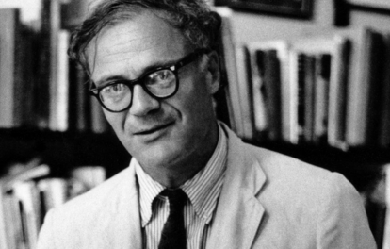
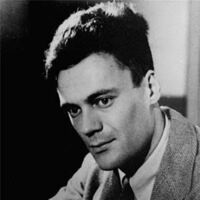
In 1917, Robert Lowell was born into one of Boston's oldest and most prominent families. He attended Harvard College for two years before transferring to Kenyon College, where he studied poetry under John Crowe Ransom and received an undergraduate degree in 1940. He took graduate courses at Louisiana State University where he studied with Robert Penn Warren and Cleanth Brooks. His first and second books, Land of Unlikeness (1944) and Lord Weary's Castle (for which he received a Pulitzer Prize in 1947, at the age of thirty), were influenced by his conversion from Episcopalianism to Catholicism and explored the dark side of America's Puritan legacy. Under the influence of Allen Tate and the New Critics, he wrote rigorously formal poetry that drew praise for its exceptionally powerful handling of meter and rhyme. Lowell was politically involved—he became a conscientious objector during the Second World War and was imprisoned as a result, and actively protested against the war in Vietnam—and his personal life was full of marital and psychological turmoil. He suffered from severe episodes of manic depression, for which he was repeatedly hospitalized. Partly in response to his frequent breakdowns, and partly due to the influence of such younger poets as W. D. Snodgrass and Allen Ginsberg, Lowell in the mid-fifties began to write more directly from personal experience, and loosened his adherence to traditional meter and form. The result was a watershed collection, Life Studies (1959), which forever changed the landscape of modern poetry, much as Eliot's The Waste Land had three decades before. Considered by many to be the most important poet in English of the second half of the twentieth century, Lowell continued to develop his work with sometimes uneven results, all along defining the restless center of American poetry, until his sudden death from a heart attack at age 60. Robert Lowell served as a Chancellor of The Academy of American Poets from 1962 until his death in 1977. Poetry Land of Unlikeness (1944) Lord Weary's Castle (1946) Poems, 1938-1949 (1950) The Mills of the Kavanaughs (1951) Life Studies (1959) Imitations (1961) For the Union Dead (1964) Selected Poems (1965) Near the Ocean (1967) The Voyage and Other Versions of Poems by Baudelaire (1968) Notebooks, 1967-1968 (1969) The Dolphin (1973) For Lizzie and Harriet (1973) History (1973) Selected Poems (1976) Day by Day (1977) Prose The Collected Prose (1987) Anthology Phaedra (1961) Prometheus Bound (1969) Drama The Old Glory (1965) References Poets.org - www.poets.org/poet.php/prmPID/10
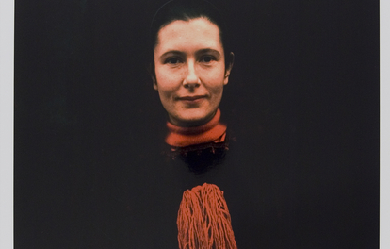
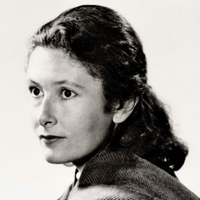
Denise Levertov (24 October 1923– 20 December 1997) was a British-born American poet. Levertov, who was educated at home, showed an enthusiasm for writing from an early age and studied ballet, art, piano and French as well as standard subjects. She wrote about the strangeness she felt growing up part Jewish, German, Welsh and English, but not fully belonging to any of these identities. She notes that it lent her a sense of being special rather than excluded: “I knew before I was ten that I was an artist-person and I had a destiny”.


Li-Young Lee (李立揚, pinyin: Lǐ Lìyáng) (born August 19, 1957) is an American poet. He was born in Jakarta, Indonesia, to Chinese parents. His maternal great-grandfather was Yuan Shikai, China’s first Republican President, who attempted to make himself emperor. Lee’s father, who was a personal physician to Mao Zedong while in China, relocated his family to Indonesia, where he helped found Gamaliel University. His father was exiled and spent 19 months in an Indonesian prison camp in Macau. In 1959 the Lee family fled the country to escape anti-Chinese sentiment and after a five-year trek through Hong Kong and Japan, they settled in the United States in 1964. Li-Young Lee attended the University of Pittsburgh and the University of Arizona, and the State University of New York at Brockport. Development as a poet Lee attended the University of Pittsburgh, where he began to develop his love for writing. He had seen his father find his passion for ministry and as a result of his father reading to him and encouraging Lee to find his passion, Lee began to dive into the art of language. Lee’s writing has also been influenced by classic Chinese poets, such as Li Bai and Du Fu. Many of Lee’s poems are filled with themes of simplicity, strength, and silence. All are strongly influenced by his family history, childhood, and individuality. He writes with simplicity and passion which creates images that take the reader deeper and also requires his audience to fill in the gaps with their own imagination. These feelings of exile and boldness to rebel take shape as they provide common themes for poems. Lee’s influence on Asian American poetry Li-Young Lee has been an established Asian American poet who has been doing interviews for the past twenty years. Breaking the Alabaster Jar: Conversations with Li-Young Lee (BOA Editions, 2006, ed. Earl G. Ingersoll), is the first edited and published collection of interviews with an Asian American poet. In this book, Earl G. Ingersoll has collected interviews with the poet consisting of “conversational” questions meant to bring out Lee’s views on Asian American poetry, writing, and identity. Awards and honors * Lee has won numerous poetry awards: * 1986: Delmore Schwartz Memorial Award, from New York University, for Rose * 1988: Whiting Award * 1990: Lamont Poetry Selection for The City in Which I Love You * 1995: Lannan Literary Award * 1995: American Book Award, from the Before Columbus Foundation, for The Wingéd Seed: A Remembrance * 2002: William Carlos Williams Award for Book of My Nights (American Poets Continuum) Judge: Carolyn Kizer * 2003: Fellowship of the Academy of American Poets, which does not accept applications and which includes a $25,000 stipend * Fellowship, National Endowment for the Arts * Fellowship, John Simon Guggenheim Memorial Foundation * Grant, Illinois Arts Council * Grant, Commonwealth of Pennsylvania * Grant, Pennsylvania Council on the Arts Other recognition * 2011: Lee’s poem ″A Story″ was featured in the AP English Literature and Composition 2011 Free-Response Questions. Selected bibliography Poetry * * 1986: Rose. Rochester: BOA Editions Limited, ISBN 0-918526-53-1 * 1990: The City In Which I Love You. Rochester: BOA Editions Limited, ISBN 0-918526-83-3 * 2001: Book of My Nights. Rochester: BOA Editions Limited, ISBN 1-929918-08-9 * 2008: Behind My Eyes. New York: W.W. Norton & Co., ISBN 0-393-33481-3 Memoir * * The Wingéd Seed: A Remembrance. (hardcover) New York: Simon & Schuster, 1995. ASIN: B000NGRB2G (paperback) St. Paul: Ruminator, 1999. ISBN 1-886913-28-5 References Wikipedia—https://en.wikipedia.org/wiki/Li-Young_Lee
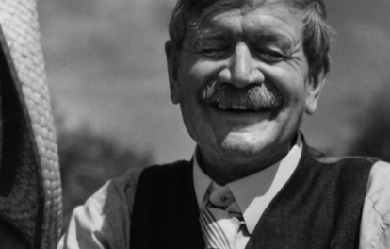
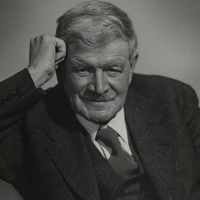
Stephen P. H. Butler Leacock, (30 December 1869 – 28 March 1944) was a Canadian teacher, political scientist, writer, and humorist. Between the years 1915 and 1925, he was the best-known English-speaking humorist in the world. He is known for his light humour along with criticisms of people’s follies. The Stephen Leacock Memorial Medal for Humour was named in his honour. Early life Stephen Leacock was born in Swanmore, a village near Southampton in southern England. He was the third of the eleven children born to (Walter) Peter Leacock (b.1834), who was born and grew up at Oak Hill on the Isle of Wight, an estate that his grandfather had purchased after returning from Madeira where his family had made a fortune out of plantations and Leacock’s Madeira wine, founded in 1760. Stephen’s mother, Agnes, was born at Soberton, the youngest daughter by his second wife (Caroline Linton Palmer) of the Rev. Stephen Butler, of Bury Lodge, the Butler estate that overlooked the village of Hambledon, Hampshire. Stephen Butler (for whom Leacock was named), was the maternal grandson of Admiral James Richard Dacres and a brother of Sir Thomas Dacres Butler, Usher of the Black Rod. Leacock’s mother was the half-sister of Major Thomas Adair Butler, who won the Victoria Cross at the siege and capture of Lucknow. Peter’s father, Thomas Murdock Leacock J.P., had already conceived plans eventually to send his son out to the colonies, but when he discovered that at age eighteen Peter had married Agnes Butler without his permission, almost immediately he shipped them out to South Africa where he had bought them a farm. The farm in South Africa failed and Stephen’s parents returned to Hampshire, where he was born. When Stephen was six, he came out with his family to Canada, where they settled on a farm near the village of Sutton, Ontario, and the shores of Lake Simcoe. Their farm in the township of Georgina in York County was also unsuccessful, and the family was kept afloat by money sent from Leacock’s paternal grandfather. His father became an alcoholic; in the fall of 1878, he travelled west to Manitoba with his brother E.P. Leacock (the subject of Stephen’s book My Remarkable Uncle, published in 1942), leaving behind Agnes and the children. Stephen Leacock, always of obvious intelligence, was sent by his grandfather to the elite private school of Upper Canada College in Toronto, also attended by his older brothers, where he was top of the class and was chosen as head boy. Leacock graduated in 1887, and returned home to find that his father had returned from Manitoba. Soon after, his father left the family again and never returned. There is some disagreement about what happened to Peter Leacock; some suggest that he went to live in Argentina, while other sources indicate that he moved to Nova Scotia and changed his name to Lewis. In 1887, seventeen-year-old Leacock started at University College at the University of Toronto, where he was admitted to the Zeta Psi fraternity. His first year was bankrolled by a small scholarship, but Leacock found he could not return to his studies the following year because of financial difficulties. He left university to work as a teacher—an occupation he disliked immensely—at Strathroy, Uxbridge and finally in Toronto. As a teacher at Upper Canada College, his alma mater, he was able simultaneously to attend classes at the University of Toronto and, in 1891, earn his degree through part-time studies. It was during this period that his first writing was published in The Varsity, a campus newspaper. Academic and political life Disillusioned with teaching, in 1899 he began graduate studies at the University of Chicago under Thorstein Veblen, where he received a doctorate in political science and political economy. He moved from Chicago, Illinois to Montreal, Quebec, where he eventually became the William Dow Professor of Political Economy and long-time chair of the Department of Economics and Political Science at McGill University. He was closely associated with Sir Arthur Currie, former commander of the Canadian Corps in the Great War and principal of McGill from 1919 until his death in 1933. In fact, Currie had been a student observing Leacock’s practice teaching in Strathroy in 1888. In 1936, Leacock was forcibly retired by the McGill Board of Governors—an unlikely prospect had Currie lived. Leacock was both a social conservative and a partisan Conservative. He opposed giving women the right to vote, and had a mixed record on non-Anglo-Saxon immigration, having written both in support of expanding immigration beyond Anglo-Saxons prior to World War II and in opposition to expanding Canadian immigration beyond Anglo Saxons near the close of World War II. He was a staunch champion of the British Empire and the Imperial Federation Movement and went on lecture tours to further the cause. Despite his conservatism, he was a staunch advocate for social welfare legislation and wealth redistribution. Although Prime Minister R.B. Bennett asked him to be a candidate for the 1935 Dominion election, Leacock declined the invitation. Nevertheless, he would stump for local Conservative candidates at his summer home. Literary life Early in his career, Leacock turned to fiction, humour, and short reports to supplement (and ultimately exceed) his regular income. His stories, first published in magazines in Canada and the United States and later in novel form, became extremely popular around the world. It was said in 1911 that more people had heard of Stephen Leacock than had heard of Canada. Also, between the years 1915 and 1925, Leacock was the most popular humorist in the English-speaking world. A humorist particularly admired by Leacock was Robert Benchley from New York. Leacock opened correspondence with Benchley, encouraging him in his work and importuning him to compile his work into a book. Benchley did so in 1922, and acknowledged the nagging from north of the border. Near the end of his life, the American comedian Jack Benny recounted how he had been introduced to Leacock’s writing by Groucho Marx when they were both young vaudeville comedians. Benny acknowledged Leacock’s influence and, fifty years after first reading him, still considered Leacock one of his favorite comic writers. He was puzzled as to why Leacock’s work was no longer well known in the United States. During the summer months, Leacock lived at Old Brewery Bay, his summer estate in Orillia, across Lake Simcoe from where he was raised and also bordering Lake Couchiching. A working farm, Old Brewery Bay is now a museum and National Historic Site of Canada. Gossip provided by the local barber, Jefferson Short, provided Leacock with the material which would become Sunshine Sketches of a Little Town (1912), set in the thinly-disguised Mariposa. Although he wrote learned articles and books related to his field of study, his political theory is now all but forgotten. Leacock was awarded the Royal Society of Canada’s Lorne Pierce Medal in 1937, nominally for his academic work. “The proper punishment for the Hohenzollerns, and the Hapsburgs, and the Mecklenburgs, and the Muckendorfs, and all such puppets and princelings, is that they should be made to work; and not made to work in the glittering and glorious sense, as generals and chiefs of staff, and legislators, and land-barons, but in the plain and humble part of labourers looking for a job. (Leacock 1919: 9)” Memorial Medal for Humour The Stephen Leacock Associates is a foundation chartered to preserve the literary legacy of Stephen Leacock, and oversee the annual award of the Stephen Leacock Memorial Medal for Humour. It is a prestigious honour, given to encourage Canadian humour writing and awarded for the best in Canadian humour writing. The foundation was instituted in 1946 and awarded the first Leacock Medal in 1947. The presentation occurs in June each year at the Stephen Leacock Award Dinner, at the Geneva Park Conference Centre in Orillia, Ontario. Personal life Leacock was born in England in 1869. His father, Peter Leacock, and his mother, Agnes Emma Butler Leacock, were both from well-to-do families. The family, eventually consisting of eleven children, immigrated to Canada in 1876, settling on a one hundred-acre farm in Sutton, Ontario. There Stephen was home-schooled until he was enrolled in Upper Canada College, Toronto. He became the head boy in 1887, and then entered the University of Toronto to study languages and literature. Despite completing two years of study in one year, he was forced to leave the university because his father had abandoned the family. Instead, Leacock enrolled in a three-month course at Strathroy Collegiate Institute to become a qualified high school teacher. His first appointment was at Uxbridge High School, Ontario, but he was soon offered a post at Upper Canada College, where he remained from 1889 through 1899. At this time, he also resumed part-time studies at the University of Toronto, graduating with a B.A. in 1891. However, Leacock’s real interests were turning towards economics and political theory, and in 1899 he was accepted for postgraduate studies at the University of Chicago, where he earned his PhD in 1903 In 1900 Leacock married Beatrix Hamilton, niece of Sir Henry Pellatt, who had built Casa Loma, the largest castle in North America. In 1915, after 15 years of marriage, the couple had their only child, Stephen Lushington Leacock. While Leacock doted on the boy, it soon became apparent that “Stevie” suffered from a lack of growth hormone. Growing to be only four feet tall, he had a love-hate relationship with Leacock, who tended to treat him like a child. Beatrix died in 1925 due to breast cancer. Leacock was offered a post at McGill University, where he remained until he retired in 1936. In 1906, he wrote Elements of Political Science, which remained a standard college textbook for the next twenty years and became his most profitable book. He also began public speaking and lecturing, and he took a year’s leave of absence in 1907 to speak throughout Canada on the subject of national unity. He typically spoke on national unity or the British Empire for the rest of his life. Leacock began submitting articles to the Toronto humor magazine Grip in 1894, and soon was publishing many humorous articles in Canadian and American magazines. In 1910, he privately published the best of these as Literary Lapses. The book was spotted by a British publisher, John Lane, who brought out editions in London and New York, assuring Leacock’s future as a writer. This was confirmed by Literary Lapses (1910), Nonsense Novels (1911) – probably his best books of humorous sketches—and by the more sentimental favorite, Sunshine Sketches of a Little Town (1912). John Lane introduced the young cartoonist Annie Fish to illustrate his 1913 book Behind the Beyond. Leacock’s humorous style was reminiscent of Mark Twain and Charles Dickens at their sunniest—for example in his even and satisfying My Discovery of England (1922). However, his Arcadian Adventures with the Idle Rich (1914) is a darker collection that satirizes city life. Collections of sketches continued to follow almost annually at times, with a mixture of whimsy, parody, nonsense, and satire that was never bitter. Leacock was enormously popular not only in Canada but in the United States and Britain. In later life, Leacock wrote on the art of humor writing and also published biographies of Twain and Dickens. After retirement, a lecture tour to western Canada led to his book My Discovery of the West: A Discussion of East and West in Canada (1937), for which he won the Governor General’s Award. He also won the Mark Twain medal and received a number of honorary doctorates. Other nonfiction books on Canadian topics followed and he began work on an autobiography. Leacock died of throat cancer in Toronto in 1944. A prize for the best humour writing in Canada was named after him, and his house at Orillia on the banks of Lake Couchiching became the Stephen Leacock Museum. Death and tributes Predeceased by Trix (who had died of breast cancer in 1925), Leacock was survived by son Stevie (Stephen Lushington Leacock (1915–1974). In accordance with his wishes, after his death from throat cancer, Leacock was buried in the St George the Martyr Churchyard (St. George’s Church, Sibbald Point), Sutton, Ontario Shortly after his death, Barbara Nimmo, his niece, literary executor and benefactor, published two major posthumous works: Last Leaves (1945) and The Boy I Left Behind Me (1946). His physical legacy was less treasured, and his abandoned summer cottage became derelict. It was rescued from oblivion when it was declared a National Historic Site of Canada in 1958 and ever since has operated as a museum called the Stephen Leacock Museum National Historic Site. In 1947, the Stephen Leacock Award was created to meet the best in Canadian literary humour. In 1969, the centennial of his birth, Canada Post issued a six-cent stamp with his image on it. The following year, the Stephen Leacock Centennial Committee had a plaque erected at his English birthplace and a mountain in the Yukon was named after him. A number of buildings in Canada are named after Leacock, including the Stephen Leacock Building at McGill University, Stephen Leacock Public School in Ottawa, a theatre in Keswick, Ontario, and a school Stephen Leacock Collegiate Institute in Toronto. Screen adaptations Two Leacock short stories have been adapted as National Film Board of Canada animated shorts by Gerald Potterton: My Financial Career and The Awful Fate of Melpomenus Jones. Sunshine Sketches, based on Sunshine Sketches of a Little Town, aired on CBC Television in 1952–1953; it was the first Canadian broadcast of an English-language dramatic series, as it debuted on the first night that television was broadcast in Toronto. In 2012, a screen adaptation based on Sunshine Sketches of a Little Town was aired on CBC Television to celebrate both the 75th anniversary of the CBC and the 100th anniversary of Leacock’s original collection of short stories. The recent screen adaptation featured Gordon Pinsent as a mature Leacock. Bibliography Fiction * Literary Lapses (1910) * Nonsense Novels (1911) * Sunshine Sketches of a Little Town (1912) * Behind the Beyond (1913)– illustrated by Annie Fish. * Arcadian Adventures with the Idle Rich (1914) * Moonbeams from the Larger Lunacy (1915) * Further Foolishness (1916) * Essays and Literary Studies (1916) * Frenzied Fiction (1918) * The Hohenzollerns in America (1919) * Winsome Winnie (1920) * My Discovery of England (1922) * College Days (1923) * Over the Footlights (1923) * The Garden of Folly (1924) * Winnowed Wisdom (1926) * Short Circuits (1928) * The Iron Man and the Tin Woman (1929) * Laugh With Leacock (1930) * The Dry Pickwick (1932) * Afternoons in Utopia (1932) * Hellements of Hickonomics in Hiccoughs of Verse Done in Our Social Planning Mill (1936) * Model Memoirs (1938) * Too Much College (1939) * My Remarkable Uncle (1942) * Happy Stories (1943) * How to Write (1943) * Last Leaves (1945) * My Lost Dollar Non-fiction * Elements of Political Science (1906) * Baldwin, Lafontaine, Hincks: Responsible Government (1907) * Practical Political Economy (1910) * Adventurers of the Far North (1914) * The Dawn of Canadian History (1914) * The Mariner of St. Malo: a chronicle of the voyages of Jacques Cartier (1914) * The Unsolved Riddle of Social Justice (1920) * Mackenzie, Baldwin, Lafontaine, Hincks (1926) * Economic Prosperity in the British Empire (1930) * The Economic Prosperity of the British Empire (1931) * Humour: Its Theory and Technique, with Examples and Samples (1935) * The Greatest Pages of American Humor (1936) * Humour and Humanity (1937) * Here Are My Lectures (1937) * My Discovery of the West (1937) * Our British Empire (1940) * Canada: The Foundations of Its Future (1941) * Our Heritage of Liberty (1942) * Montreal: Seaport and City (1942) * Canada and the Sea (1944) * While There Is Time (1945) * My Lost Dollar Biography * Mark Twain (1932) * Charles Dickens: His Life and Work (1933) Autobiography * The Boy I Left Behind Me (1946) Quotations * "Lord Ronald … flung himself upon his horse and rode madly off in all directions."—Nonsense Novels, “Gertrude the Governess”, 1911 * “Professor Leacock has made more people laugh with the written word than any other living author. One may say he is one of the greatest jesters, the greatest humorist of the age.”—A. P. Herbert * “Mr Leacock is as 'bracing’ as the seaside place of John Hassall’s famous poster. His wisdom is always humorous, and his humour is always wise.”—Sunday Times * “He is still inimitable. No one, anywhere in the world, can reduce a thing to ridicule with such few short strokes. He is the Grock of literature.”—Evening Standard * “I detest life-insurance agents: they always argue that I shall some day die, which is not so.” * “Hockey captures the essence of Canadian experience in the New World. In a land so inescapably and inhospitably cold, hockey is the chance of life, and an affirmation that despite the deathly chill of winter we are alive.” References Wikipedia—https://en.wikipedia.org/wiki/Stephen_Leacock
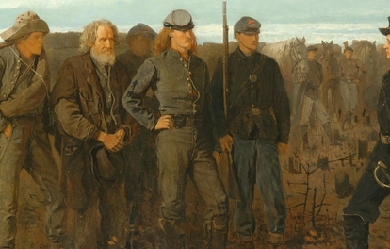
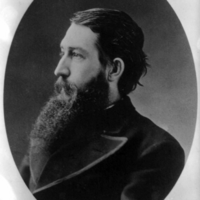
Sidney Clopton Lanier (February 3, 1842– September 7, 1881) was an American musician, poet and author. He served in the Confederate army, worked on a blockade running ship for which he was imprisoned (resulting in his catching tuberculosis), taught, worked at a hotel where he gave musical performances, was a church organist, and worked as a lawyer. As a poet he used dialects. He became a flautist and sold poems to publications. He eventually became a university professor and is known for his adaptation of musical meter to poetry. Many schools, other structures and two lakes are named for him. Biography Sidney Clopton Lanier was born February 3, 1842, in Macon, Georgia, to parents Robert Sampson Lanier and Mary Jane Anderson; he was mostly of English ancestry. His distant French Huguenot ancestors immigrated to England in the 16th century, fleeing religious persecution. He began playing the flute at an early age, and his love of that musical instrument continued throughout his life. He attended Oglethorpe University, which at the time was near Milledgeville, Georgia, and he was a member of the Sigma Alpha Epsilon fraternity. He graduated first in his class shortly before the outbreak of the American Civil War. He fought in the American Civil War (1861–65), primarily in the tidewater region of Virginia, where he served in the Confederate signal corps. Later, he and his brother Clifford served as pilots aboard English blockade runners. On one of these voyages, his ship was boarded. Refusing to take the advice of the British officers on board to don one of their uniforms and pretend to be one of them, he was captured. He was incarcerated in a military prison at Point Lookout in Maryland, where he contracted tuberculosis (generally known as “consumption” at the time). He suffered greatly from this disease, then incurable and usually fatal, for the rest of his life. Shortly after the war, he taught school briefly, then moved to Montgomery, Alabama, where he worked as a desk clerk at The Exchange Hotel and also performed as a musician. He was the regular organist at The First Presbyterian Church in nearby Prattville. He wrote his only novel, Tiger Lilies (1867) while in Alabama. This novel was partly autobiographical, describing a stay in 1860 at his grandfather’s Montvale Springs resort hotel near Knoxville, Tennessee. In 1867, he moved to Prattville, at that time a small town just north of Montgomery, where he taught and served as principal of a school. He married Mary Day of Macon in 1867 and moved back to his hometown, where he began working in his father’s law office. After taking and passing the Georgia bar, Lanier practiced as a lawyer for several years. During this period he wrote a number of poems, using the “cracker” and “negro” dialects of his day, about poor white and black farmers in the Reconstruction South. He traveled extensively through southern and eastern portions of the United States in search of a cure for his tuberculosis. While on one such journey in Texas, he rediscovered his native and untutored talent for the flute and decided to travel to the northeast in hopes of finding employment as a musician in an orchestra. Unable to find work in New York City, Philadelphia, or Boston, he signed on to play flute for the Peabody Orchestra in Baltimore, Maryland, shortly after its organization. He taught himself musical notation and quickly rose to the position of first flautist. He was famous in his day for his performances of a personal composition for the flute called “Black Birds”, which mimics the song of that species. In an effort to support Mary and their three sons, he also wrote poetry for magazines. His most famous poems were “Corn” (1875), “The Symphony” (1875), “Centennial Meditation” (1876), “The Song of the Chattahoochee” (1877), “The Marshes of Glynn”, (1878) and “Sunrise” (1881). The latter two poems are generally considered his greatest works. They are part of an unfinished set of lyrical nature poems known as the “Hymns of the Marshes”, which describe the vast, open salt marshes of Glynn County on the coast of Georgia. (The longest bridge in Georgia is in Glynn County and is named for Lanier.) Later life Late in his life, he became a student, lecturer, and, finally, a faculty member at the Johns Hopkins University in Baltimore, specializing in the works of the English novelists, Shakespeare, the Elizabethan sonneteers, Chaucer, and the Old English poets. He published a series of lectures entitled The English Novel (published posthumously in 1883) and a book entitled The Science of English Verse (1880), in which he developed a novel theory exploring the connections between musical notation and meter in poetry. Lanier finally succumbed to complications caused by his tuberculosis on September 7, 1881, while convalescing with his family near Lynn, North Carolina. He was 39. Lanier is buried in Green Mount Cemetery in Baltimore. Writing style and literary theory With his theory connecting musical notation with poetic meter, and also being described as a deft metrical technical, in his own words ‘daring with his poem ’Special Pleading’ to give myself such freedom as I desired, in my own style’ and also by developing a unique style of poetry written in logaoedic dactyls, which was strongly influenced by the works of his beloved Anglo-Saxon poets. He wrote several of his greatest poems in this meter, including “Revenge of Hamish” (1878), “The Marshes of Glynn” and “Sunrise”. In Lanier’s hands, the logaoedic dactylic meter led to a free-form, almost prose-like style of poetry that was greatly admired by Henry Wadsworth Longfellow, Bayard Taylor, Charlotte Cushman, and other leading poets and critics of the day. A similar poetical meter was independently developed by Gerard Manley Hopkins at about the same time (there is no evidence that they knew each other or that either of them had read any of the other’s works). Lanier also published essays on other literary and musical topics and a notable series of four redactions of literary works about knightly combat and chivalry in modernized language more appealing to the boys of his day: The Boy’s Froissart (1878), a retelling of Jean Froissart’s Froissart’s Chronicles, which tell of adventure, battle and custom in medieval England, France and Spain The Boy’s King Arthur (1880), based on Sir Thomas Malory’s compilation of the legends of King Arthur and the Knights of the Round Table The Boy’s Mabinogion (1881), based on the early Welsh legends of King Arthur, as retold in the Red Book of Hergest. The Boy’s Percy (published posthumously in 1882), consisting of old ballads of war, adventure and love based on Bishop Thomas Percy’s Reliques of Ancient English Poetry. He also wrote two travelogues that were widely read at the time, entitled Florida: Its Scenery, Climate and History (1875) and Sketches of India (1876) (although he never visited India). Legacy and honors The Sidney Lanier Cottage in Macon, Georgia is listed on the National Register of Historic Places. The square, stone Monument to Poets of Georgia, located between 7th & 8th St. in Augusta, lists Lanier as one of Georgia’s four great poets, all of whom saw Confederate service. The southeastern side bears this inscription: "To Sidney Lanier 1842–1880. The catholic man who hath nightly won God out of knowledge and good out of infinite pain and sight out of Blindness and Purity out of stain." The other poets on the monument are James Ryder Randall, Fr. Abram Ryan, and Paul Hayne. Baltimore honored Lanier with a large and elaborate bronze and granite sculptural monument, created by Hans K. Schuler and located on the campus of the Johns Hopkins University. In addition to the monument at Johns Hopkins, Lanier was also later memorialized on the campus of Duke University in Durham, North Carolina. Upon the construction of the iconic Duke Chapel between 1930 and 1935 on the university’s West Campus, a statue of Lanier was included alongside two fellow prominent Southerners, Thomas Jefferson and Robert E. Lee. This statue, which appears to show a Lanier older than the 39 years he actually lived, is situated on the right side of the portico leading into the Chapel narthex. It is prominently featured on the cover of the 2010 autobiographical memoir Hannah’s Child, by Stanley Hauerwas, a Methodist theologian teaching at Duke Divinity School. Lanier’s poem “The Marshes of Glynn” is the inspiration for a cantata by the same name that was created by the modern English composer Andrew Downes to celebrate the Royal Opening of the Adrian Boult Hall in Birmingham, England, in 1986. Piers Anthony used Lanier, his life, and his poetry in his science-fiction novel Macroscope (1969). He quotes from “The Marshes of Glynn” and other references appear throughout the novel. Several entities have been named for Sidney Lanier: Inhabited places Lanier Heights Neighborhood, Washington, D.C. Lanier County, Georgia Indirectly, USS Lanier, which was named for the county. Bodies of water Lake Lanier, operated by the U.S. Army Corps of Engineers northeast of Atlanta, Georgia (The lake was created by the damming of the Chattahoochee River, a river that was the subject of one of Lanier’s poems.) Lake Lanier in Tryon, North Carolina Schools Sidney Lanier High School in Montgomery, Alabama Sidney Lanier School in Gainesville, Florida Lanier University short-lived university, first Baptist, then owned by the Ku Klux Klan, in Atlanta, Georgia The Sidney Lanier Building (previously Sidney Lanier Elementary School) on the campus of Glynn Academy, in Brunswick, Georgia Lanier Middle School in Buford, Georgia Lanier Elementary School in Gainesville, Georgia Sidney Lanier Elementary School in Tulsa, Oklahoma Sidney Lanier High School in Austin, Texas Sidney Lanier Expressive Arts Vanguard Elementary School in Dallas, Texas Lanier Middle School in Houston, Texas Lanier High School in San Antonio, Texas Lanier Middle School in Fairfax, Virginia Sidney Lanier Elementary School in Tampa, Florida Lanier Technical College in Oakwood, Georgia Other Sidney Lanier Cottage, the birthplace of Lanier, in Macon, Georgia Sidney Lanier Bridge over the South Brunswick River in Brunswick, Georgia Lanier’s Oak in Brunswick, Georgia The Lanier Library, Tryon, North Carolina. Lanier’s widow, Mary, donated two of his volumes of poetry to begin the collection when the library was established in 1890. Sidney Lanier Camp, Eliot, Maine. Sidney Lanier Boulevard in Duluth, GA References Wikipedia—https://en.wikipedia.org/wiki/Sidney_Lanier
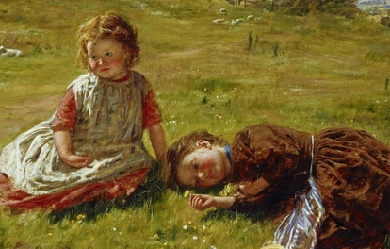
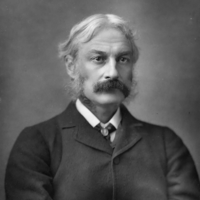
Andrew Lang (31 March 1844– 20 July 1912) was a Scottish poet, novelist, literary critic, and contributor to the field of anthropology. He is best known as a collector of folk and fairy tales. The Andrew Lang lectures at the University of St Andrews are named after him. Biography Lang was born in Selkirk. He was the eldest of the eight children born to John Lang, the town clerk of Selkirk, and his wife Jane Plenderleath Sellar, who was the daughter of Patrick Sellar, factor to the first duke of Sutherland. On 17 April 1875, he married Leonora Blanche Alleyne, youngest daughter of C. T. Alleyne of Clifton and Barbados. She was (or should have been) variously credited as author, collaborator, or translator of Lang’s Color/Rainbow Fairy Books which he edited. He was educated at Selkirk Grammar School, Loretto, and at the Edinburgh Academy, St Andrews University and at Balliol College, Oxford, where he took a first class in the final classical schools in 1868, becoming a fellow and subsequently honorary fellow of Merton College. He soon made a reputation as one of the most able and versatile writers of the day as a journalist, poet, critic, and historian. In 1906, he was elected FBA. He died of angina pectoris at the Tor-na-Coille Hotel in Banchory, Banchory, survived by his wife. He was buried in the cathedral precincts at St Andrews. Scholarship Folklore and anthropology Lang is now chiefly known for his publications on folklore, mythology, and religion. The interest in folklore was from early life; he read John Ferguson McLennan before coming to Oxford, and then was influenced by E. B. Tylor. The earliest of his publications is Custom and Myth (1884). In Myth, Ritual and Religion (1887) he explained the “irrational” elements of mythology as survivals from more primitive forms. Lang’s Making of Religion was heavily influenced by the 18th century idea of the “noble savage”: in it, he maintained the existence of high spiritual ideas among so-called “savage” races, drawing parallels with the contemporary interest in occult phenomena in England. His Blue Fairy Book (1889) was a beautifully produced and illustrated edition of fairy tales that has become a classic. This was followed by many other collections of fairy tales, collectively known as Andrew Lang’s Fairy Books. In the preface of the Lilac Fairy Book he credits his wife with translating and transcribing most of the stories in the collections. Lang examined the origins of totemism in Social Origins (1903). Psychical research Lang was one of the founders of “psychical research” and his other writings on anthropology include The Book of Dreams and Ghosts (1897), Magic and Religion (1901) and The Secret of the Totem (1905). He served as President of the Society for Psychical Research in 1911. Classical scholarship He collaborated with S. H. Butcher in a prose translation (1879) of Homer’s Odyssey, and with E. Myers and Walter Leaf in a prose version (1883) of the Iliad, both still noted for their archaic but attractive style. He was a Homeric scholar of conservative views. Other works include Homer and the Study of Greek found in Essays in Little (1891), Homer and the Epic (1893); a prose translation of The Homeric Hymns (1899), with literary and mythological essays in which he draws parallels between Greek myths and other mythologies; Homer and his Age (1906); and “Homer and Anthropology” (1908). Historian Lang’s writings on Scottish history are characterised by a scholarly care for detail, a piquant literary style, and a gift for disentangling complicated questions. The Mystery of Mary Stuart (1901) was a consideration of the fresh light thrown on Mary, Queen of Scots, by the Lennox manuscripts in the University Library, Cambridge, approving of her and criticising her accusers. He also wrote monographs on The Portraits and Jewels of Mary Stuart (1906) and James VI and the Gowrie Mystery (1902). The somewhat unfavourable view of John Knox presented in his book John Knox and the Reformation (1905) aroused considerable controversy. He gave new information about the continental career of the Young Pretender in Pickle the Spy (1897), an account of Alestair Ruadh MacDonnell, whom he identified with Pickle, a notorious Hanoverian spy. This was followed by The Companions of Pickle (1898) and a monograph on Prince Charles Edward (1900). In 1900 he began a History of Scotland from the Roman Occupation (1900). The Valet’s Tragedy (1903), which takes its title from an essay on Dumas’s Man in the Iron Mask, collects twelve papers on historical mysteries, and A Monk of Fife (1896) is a fictitious narrative purporting to be written by a young Scot in France in 1429–1431. Other writings Lang’s earliest publication was a volume of metrical experiments, The Ballads and Lyrics of Old France (1872), and this was followed at intervals by other volumes of dainty verse, Ballades in Blue China (1880, enlarged edition, 1888), Ballads and Verses Vain (1884), selected by Mr Austin Dobson; Rhymes à la Mode (1884), Grass of Parnassus (1888), Ban and Arrière Ban (1894), New Collected Rhymes (1905). Lang was active as a journalist in various ways, ranging from sparkling “leaders” for the Daily News to miscellaneous articles for the Morning Post, and for many years he was literary editor of Longman’s Magazine; no critic was in more request, whether for occasional articles and introductions to new editions or as editor of dainty reprints. He edited The Poems and Songs of Robert Burns (1896), and was responsible for the Life and Letters (1897) of JG Lockhart, and The Life, Letters and Diaries (1890) of Sir Stafford Northcote, 1st Earl of Iddesleigh. Lang discussed literary subjects with the same humour and acidity that marked his criticism of fellow folklorists, in Books and Bookmen (1886), Letters to Dead Authors (1886), Letters on Literature (1889), etc. Works To 1884 * St Leonards Magazine. 1863. This was a reprint of several articles that appeared in the St Leonards Magazine that Lang edited at St Andrews University. Includes the following Lang contributions: Pages 10–13, Dawgley Manor; A sentimental burlesque; Pages 25–26, Nugae Catulus; Pages 27–30, Popular Philosophies; pages 43–50 are ‘Papers by Eminent Contributors’, seven short parodies of which six are by Lang. * The Ballads and Lyrics of Old France (1872) * The Odyssey Of Homer Rendered Into English Prose (1879) translator with Samuel Henry Butcher * Aristotle’s Politics Books I. III. IV. (VII.). The Text of Bekker. With an English translation by W. E. Bolland. Together with short introductory essays by A. Lang To page 106 are Lang’s Essays, pp. 107–305 are the translation. Lang’s essays without the translated text were later published as The Politics of Aristotle. Introductory Essays. 1886. * The Folklore of France (1878) * Specimens of a Translation of Theocritus. 1879. This was an advance issue of extracts from Theocritus, Bion and Moschus rendered into English prose * XXII Ballades in Blue China (1880) * Oxford. Brief historical & descriptive notes (1880). The 1915 edition of this work was illustrated by painter George Francis Carline. * 'Theocritus Bion and Moschus. Rendered into English Prose with an Introductory Essay. 1880. * Notes by Mr A. Lang on a collection of pictures by Mr J. E.Millais R.A. exhibited at the Fine Arts Society Rooms. 148 New Bond Street. 1881. * The Library: with a chapter on modern illustrated books. 1881. * The Black Thief. A new and original drama (Adapted from the Irish) in four acts. (1882) * Helen of Troy, her life and translation. Done into rhyme from the Greek books. 1882. * The Most Pleasant and Delectable Tale of the Marriage of Cupid and Psyche (1882) with William Aldington * The Iliad of Homer, a prose translation (1883) with Walter Leaf and Ernest Myers * Custom and Myth (1884) * The Princess Nobody: A Tale of Fairyland (1884) * Ballads and Verses Vain (1884) selected by Austin Dobson * Rhymes à la Mode (1884) * Much Darker Days. By A. Huge Longway. (1884) * Household tales; their origin, diffusion, and relations to the higher myths. [1884]. Separate pre-publication issue of the “introduction” to Bohn’s edition of Grimm’s Household tales. 1885–1889 * That Very Mab (1885) with May Kendall * Books and Bookmen (1886) * Letters to Dead Authors (1886) * In the Wrong Paradise (1886) stories * The Mark of Cain (1886) novel * Lines on the inaugural meeting of the Shelley Society. Reprinted for private distribution from the Saturday Review of 13 March 1886 and edited by Thomas Wise (1886) * La Mythologie Traduit de L’Anglais par Léon Léon Parmentier. Avec une préface par Charles Michel et des Additions de l’auteur. (1886) Never published as a complete book in English, although there was a Polish translation. The first 170 pages is a translation of the article in the 'Encyclopædia Britannica’. The rest is a combination of articles and material from 'Custom and Myth’. * Almae matres (1887) * He (1887 with Walter Herries Pollock) parody * Aucassin and Nicolette (1887) * Myth, Ritual and Religion (2 vols., 1887) * Johnny Nut and the Golden Goose. Done into English from the French of Charles Deulin (1887) * Grass of Parnassus. Rhymes old and new. (1888) * Perrault’s Popular Tales (1888) * Gold of Fairnilee (1888) * Pictures at Play or Dialogues of the Galleries (1888) with W. E. Henley * Prince Prigio (1889) * The Blue Fairy Book (1889) (illustrations by Henry J. Ford) * Letters on Literature (1889) * Lost Leaders (1889) * Ode to Golf. Contribution to On the Links; being Golfing Stories by various hands (1889) * The Dead Leman and other tales from the French (1889) translator with Paul Sylvester 1890–1899 * The Red Fairy Book (1890) * The World’s Desire (1890) with H. Rider Haggard * Old Friends: Essays in Epistolary Parody (1890) * The Strife of Love in a Dream, Being the Elizabethan Version of the First Book of the Hypnerotomachia of Francesco Colonna (1890) * The Life, Letters and Diaries of Sir Stafford Northcote, 1st Earl of Iddesleigh (1890) * Etudes traditionnistes (1890) * How to Fail in Literature (1890) * The Blue Poetry Book (1891) * Essays in Little (1891) * On Calais Sands (1891) * The Green Fairy Book (1892) * The Library with a Chapter on Modern English Illustrated Books (1892) with Austin Dobson * William Young Sellar (1892) * The True Story Book (1893) * Homer and the Epic (1893) * Prince Ricardo of Pantouflia (1893) * Waverley Novels (by Walter Scott), 48 volumes (1893) editor * St. Andrews (1893) * Montezuma’s Daughter (1893) with H. Rider Haggard * Kirk’s Secret Commonwealth (1893) * The Tercentenary of Izaak Walton (1893) * The Yellow Fairy Book (1894) * Ban and Arrière Ban (1894) * Cock Lane and Common-Sense (1894) * Memoir of R. F. Murray (1894) * The Red True Story Book (1895) * My Own Fairy Book (1895) * Angling Sketches (1895) * A Monk of Fife (1895) * The Voices of Jeanne D’Arc (1895) * The Animal Story Book (1896) * The Poems and Songs of Robert Burns (1896) editor * The Life and Letters of John Gibson Lockhart (1896) two volumes * Pickle the Spy; or the Incognito of Charles, (1897) * The Nursery Rhyme Book (1897) * The Miracles of Madame Saint Katherine of Fierbois (1897) translator * The Pink Fairy Book (1897) * A Book of Dreams and Ghosts (1897) * Pickle the Spy (1897) * Modern Mythology (1897) * The Companions of Pickle (1898) * The Arabian Nights Entertainments (1898) * The Making of Religion (1898) * Selections from Coleridge (1898) * Waiting on the Glesca Train (1898) * The Red Book of Animal Stories (1899) * Parson Kelly (1899) Co-written with A. E. W. Mason * The Homeric Hymns (1899) translator * The Works of Charles Dickens in Thirty-four Volumes (1899) editor 1900–1909 * The Grey Fairy Book (1900) * Prince Charles Edward (1900) * Parson Kelly (1900) * The Poems and Ballads of Sir Walter Scott, Bart (1900) editor * A History of Scotland– From the Roman Occupation (1900–1907) four volumes * Notes and Names in Books (1900) * Alfred Tennyson (1901) * Magic and Religion (1901) * Adventures Among Books (1901) * The Crimson Fairy Book (1903) * The Mystery of Mary Stuart (1901, new and revised ed., 1904) * The Book of Romance (1902) * The Disentanglers (1902) * James VI and the Gowrie Mystery (1902) * Notre-Dame of Paris (1902) translator * The Young Ruthvens (1902) * The Gowrie Conspiracy: the Confessions of Sprott (1902) editor * The Violet Fairy Book (1901) * Lyrics (1903) * Social England Illustrated (1903) editor * The Story of the Golden Fleece (1903) * The Valet’s Tragedy (1903) * Social Origins (1903) with Primal Law by James Jasper Atkinson * The Snowman and Other Fairy Stories (1903) * Stella Fregelius: A Tale of Three Destinies (1903) with H. Rider Haggard * The Brown Fairy Book (1904) * Historical Mysteries (1904) * The Secret of the Totem (1905) * New Collected Rhymes (1905) * John Knox and the Reformation (1905) * The Puzzle of Dickens’s Last Plot (1905) * The Clyde Mystery. A Study in Forgeries and Folklore (1905) * Adventures among Books (1905) * Homer and His Age (1906) * The Red Romance Book (1906) * The Orange Fairy Book (1906) * The Portraits and Jewels of Mary Stuart (1906) * Life of Sir Walter Scott (1906) * The Story of Joan of Arc (1906) * New and Old Letters to Dead Authors (1906) * Tales of a Fairy Court (1907) * The Olive Fairy Book (1907) * Poets’ Country (1907) editor, with Churton Collins, W. J. Loftie, E. Hartley Coleridge, Michael Macmillan * The King over the Water (1907) * Tales of Troy and Greece (1907) * The Origins of Religion (1908) essays * The Book of Princes and Princesses (1908) * Origins of Terms of Human Relationships (1908) * Select Poems of Jean Ingelow (1908) editor * The Maid of France (1908) * Three Poets of French Bohemia (1908) * The Red Book of Heroes (1909) * The Marvellous Musician and Other Stories (1909) * Sir George Mackenzie King’s Advocate, of Rosehaugh, His Life and Times (1909) 1910–1912 * The Lilac Fairy Book (1910) * Does Ridicule Kill? (1910) * Sir Walter Scott and the Border Minstrelsy (1910) * The World of Homer (1910) * The All Sorts of Stories Book (1911) * Ballades and Rhymes (1911) * Method in the Study of Totemism (1911) * The Book of Saints and Heroes (1912) * Shakespeare, Bacon and the Great Unknown (1912) * A History of English Literature (1912) * In Praise of Frugality (1912) * Ode on a Distant Memory of Jane Eyre (1912) * Ode to the Opening Century (1912) Posthumous * Highways and Byways in The Border (1913) with John Lang * The Strange Story Book (1913) with Mrs. Lang * The Poetical Works (1923) edited by Mrs. Lang, four volumes * Old Friends Among the Fairies: Puss in Boots and Other Stories. Chosen from the Fairy Books (1926) * Tartan Tales From Andrew Lang (1928) edited by Bertha L. Gunterman * From Omar Khayyam (1935) Andrew Lang’s Fairy Books * The Blue Fairy Book (1889) * The Red Fairy Book (1890) * The Green Fairy Book (1892) * The Yellow Fairy Book (1894) * The Pink Fairy Book (1897) * The Grey Fairy Book (1900) * The Violet Fairy Book (1901) * The Crimson Fairy Book (1903) * The Brown Fairy Book (1904) * The Orange Fairy Book (1906) * The Olive Fairy Book (1907) * The Lilac Fairy Book (1910) References Wikipedia—https://en.wikipedia.org/wiki/Andrew_Lang
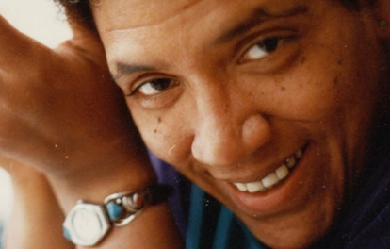
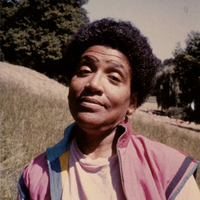
Audre Lorde (/ˈɔːdri lɔːrd/; born Audrey Geraldine Lorde, February 18, 1934– November 17, 1992) was an African American writer, feminist, womanist, lesbian, and civil rights activist. As a poet, she is best known for technical mastery and emotional expression, particularly in her poems expressing anger and outrage at civil and social injustices she observed throughout her life. Her poems and prose largely dealt with issues related to civil rights, feminism, and the exploration of black female identity. In relation to non-intersectional feminism in the United States, Lorde famously said, “Those of us who stand outside the circle of this society’s definition of acceptable women; those of us who have been forged in the crucibles of difference—those of us who are poor, who are lesbians, who are Black, who are older—know that survival is not an academic skill. It is learning how to take our differences and make them strengths. For the master’s tools will never dismantle the master’s house. They may allow us temporarily to beat him at his own game, but they will never enable us to bring about genuine change. And this fact is only threatening to those women who still define the master’s house as their only source of support.” Life and work Lorde was born in New York City to Caribbean immigrants from Barbados and Carriacou, Frederick Byron Lorde (called Byron) and Linda Gertrude Belmar Lorde, who settled in Harlem. Lorde’s mother was of mixed ancestry but could pass for white, a source of pride for her family. Lorde’s father was darker than the Belmar family liked, and they only allowed the couple to marry because of Byron Lorde’s charm, ambition, and persistence. Nearsighted to the point of being legally blind, and the youngest of three daughters (two older sisters, Phyllis and Helen), Audre Lorde grew up hearing her mother’s stories about the West Indies. She learned to talk while she learned to read, at the age of four, and her mother taught her to write at around the same time. She wrote her first poem when she was in eighth grade. Born Audrey Geraldine Lorde, she chose to drop the “y” from her first name while still a child, explaining in Zami: A New Spelling of My Name that she was more interested in the artistic symmetry of the “e”-endings in the two side-by-side names “Audre Lorde” than in spelling her name the way her parents had intended. Lorde’s relationship with her parents was difficult from a young age. She was able to spend very little time with her father and mother, who were busy maintaining their real estate business in the tumultuous economy after the Great Depression, and when she did see them, they were often cold or emotionally distant. In particular, Lorde’s relationship with her mother, who was deeply suspicious of people with darker skin than hers (which Lorde’s was) and the outside world in general, was characterized by “tough love” and strict adherence to family rules. Lorde’s difficult relationship with her mother would figure prominently in later poems, such as Coal’s “Story Books on a Kitchen Table.” As a child, Lorde, who struggled with communication, came to appreciate the power of poetry as a form of expression. She memorized a great deal of poetry, and would use it to communicate, to the extent that, “If asked how she was feeling, Audre would reply by reciting a poem.” Around the age of twelve, she began writing her own poetry and connecting with others at her school who were considered “outcasts” as she felt she was. She attended Hunter College High School, a secondary school for intellectually gifted students, and graduated in 1951. In 1954, she spent a pivotal year as a student at the National University of Mexico, a period she described as a time of affirmation and renewal, during which she confirmed her identity on personal and artistic levels as a lesbian and poet. On her return to New York, she attended Hunter College, graduating class of 1959. There, she worked as a librarian, continued writing and became an active participant in the gay culture of Greenwich Village. She furthered her education at Columbia University, earning a master’s degree in Library Science in 1961. She also worked during this time as a librarian at Mount Vernon Public Library and married attorney Edwin Rollins; they divorced in 1970 after having two children, Elizabeth and Jonathan. In 1966, Lorde became head librarian at Town School Library in New York City, where she remained until 1968. In 1968 Lorde was writer-in-residence at Tougaloo College in Mississippi, where she met Frances Clayton, a white professor of psychology, who was to be her romantic partner until 1989. Lorde’s time at Tougaloo College, like her year at the National University of Mexico, was a formative experience for Lorde as an artist. She led workshops with her young, black undergraduate students, many of whom were eager to discuss the civil rights issues of that time. Through her interactions with her students, she reaffirmed her desire not only to live out her “crazy and queer” identity, but devoted new attention to the formal aspects of her craft as a poet. Her book of poems Cables to Rage came out of her time and experiences at Tougaloo. From 1977 to 1978 Lorde had a brief affair with the sculptor and painter Mildred Thompson. The two met in Nigeria in 1977 at the Second World Black and African Festival of Arts and Culture (FESTAC 77). Their affair ran its course during the time that Thompson lived in Washington, D.C. The Berlin Years In 1984 Audre Lorde started a visiting professorship in Berlin Germany at the Free University of Berlin. She was invited by Dagmar Schultz who met her at the UN “World Women’s Conference” in Copenhagen in 1980. While Lorde was in Germany she made a significant impact on the women there and was a big part of the start of the Afro-German movement. The term Afro-German was created by Lorde and some Black German women as a nod to African-American. During her many trips to Germany, she touched many women’s lives including May Ayim, Ika Hugel-Marshell, and Hegal Emde. All of these women decided to start writing after they met Audre Lorde. She encouraged the women of Germany to speak up and have a voice. Instead of fighting through violence, Lorde thought that language was a powerful form of resistance. Her impact on Germany reached more than just Afro-German women. Many white women and men found Lorde’s work to be very beneficial to their own lives. They started to put their privilege and power into question and became more conscious. Because of her impact on the Afro-German movement, Dagmar Schultz put together a documentary to highlight the chapter of her life that was not known to many. Audre Lorde - The Berlin Years was accepted by the Berlinale in 2012 and from then was showed at many different film festivals around the world and received five awards. The film showed the lack of recognition that Lorde received for her contributions towards the theories of intersectionality. Last years Audre Lorde battled cancer for fourteen years. She was first diagnosed with breast cancer in 1978 and underwent a mastectomy. Six years later, she was diagnosed with liver cancer. After her diagnosis, she chose to become more focused on both her life and her writing. She wrote The Cancer Journals, which won the American Library Association Gay Caucus Book of the Year Award in 1981. She featured as the subject of a documentary called A Litany for Survival: The Life and Work of Audre Lorde, which shows her as an author, poet, human rights activist, feminist, lesbian, a teacher, a survivor, and a crusader against bigotry. She is quoted in the film as saying: “What I leave behind has a life of its own. I’ve said this about poetry; I’ve said it about children. Well, in a sense I’m saying it about the very artifact of who I have been.” From 1991 until her death, she was the New York State Poet Laureate. In 1992, she received the Bill Whitehead Award for Lifetime Achievement from Publishing Triangle. In 2001, Publishing Triangle instituted the Audre Lorde Award to honour works of lesbian poetry. Lorde died of liver cancer on November 17, 1992, in St. Croix, where she had been living with Gloria I. Joseph. She was 58. In an African naming ceremony before her death, she took the name Gamba Adisa, which means “Warrior: She Who Makes Her Meaning Known”. Work Poetry Lorde focused her discussion of difference not only on differences between groups of women but between conflicting differences within the individual. “I am defined as other in every group I’m part of,” she declared. “The outsider, both strength and weakness. Yet without community there is certainly no liberation, no future, only the most vulnerable and temporary armistice between me and my oppression”. She described herself both as a part of a “continuum of women” and a “concert of voices” within herself. Her conception of her many layers of selfhood is replicated in the multi-genres of her work. Critic Carmen Birkle wrote: “Her multicultural self is thus reflected in a multicultural text, in multi-genres, in which the individual cultures are no longer separate and autonomous entities but melt into a larger whole without losing their individual importance.” Her refusal to be placed in a particular category, whether social or literary, was characteristic of her determination to come across as an individual rather than a stereotype. Lorde considered herself a “lesbian, mother, warrior, poet” and used poetry to get this message across. Lorde’s poetry was published very regularly during the 1960s—in Langston Hughes’ 1962 New Negro Poets, USA; in several foreign anthologies; and in black literary magazines. During this time, she was also politically active in civil rights, anti-war, and feminist movements. In 1968, Lorde published The First Cities, her first volume of poems. It was edited by Diane di Prima, a former classmate and friend from Hunter College High School. The First Cities has been described as a “quiet, introspective book,” and Dudley Randall, a poet and critic, asserted in his review of the book that Lorde “does not wave a black flag, but her blackness is there, implicit, in the bone”. Her second volume, Cables to Rage (1970), which was mainly written during her tenure as poet-in-residence at Tougaloo College in Mississippi, addressed themes of love, betrayal, childbirth, and the complexities of raising children. It is particularly noteworthy for the poem “Martha,” in which Lorde openly confirms her homosexuality for the first time in her writing: "[W]e shall love each other here if ever at all.” Nominated for the National Book Award for poetry in 1973, From a Land Where Other People Live (Broadside Press) shows Lorde’s personal struggles with identity and anger at social injustice. The volume deals with themes of anger, loneliness, and injustice, as well as what it means to be an African-American woman, mother, friend, and lover. 1974 saw the release of New York Head Shop and Museum, which gives a picture of Lorde’s New York through the lenses of both the civil rights movement and her own restricted childhood: stricken with poverty and neglect and, in Lorde’s opinion, in need of political action. Despite the success of these volumes, it was the release of Coal in 1976 that established Lorde as an influential voice in the Black Arts Movement (Norton), as well as introducing her to a wider audience. The volume includes poems from both The First Cities and Cables to Rage, and it unties many of the themes Lorde would become known for throughout her career: her rage at racial injustice, her celebration of her black identity, and her call for an intersectional consideration of women’s experiences. Lorde followed Coal up with Between Our Selves (also in 1976) and Hanging Fire (1978). In Lorde’s volume The Black Unicorn (1978), she describes her identity within the mythos of African female deities of creation, fertility, and warrior strength. This reclamation of African female identity both builds and challenges existing Black Arts ideas about pan-Africanism. While writers like Amiri Baraka and Ishmael Reed utilized African cosmology in a way that “furnished a repertoire of bold male gods capable of forging and defending an aboriginal black universe,” in Lorde’s writing “that warrior ethos is transferred to a female vanguard capable equally of force and fertility.” Lorde’s poetry became more open and personal as she grew older and became more confident in her sexuality. In Sister Outsider: Essays and Speeches, Lorde states, "Poetry is the way we help give name to the nameless so it can be thought…As they become known to and accepted by us, our feelings and the honest exploration of them become sanctuaries and spawning grounds for the most radical and daring ideas." Sister Outsider also elaborates Lorde’s challenge to European-American traditions. Prose The Cancer Journals (1980), derived in part from personal journals written in the late seventies, and A Burst of Light (1988) both use non-fiction prose to preserve, explore, and reflect on Lorde’s diagnosis, treatment, and recovery from breast cancer. In both works, Lorde deals with Western notions of illness, treatment, and physical beauty and prosthesis, as well as themes of death, fear of mortality, victimization versus survival, and inner power. Lorde’s deeply personal novel Zami: A New Spelling of My Name (1982), described as a “biomythography,” chronicles her childhood and adulthood. The narrative deals with the evolution of Lorde’s sexuality and self-awareness. In Sister Outsider: Essays and Speeches (1984), Lorde asserts the necessity of communicating the experience of marginalized groups in order to make their struggles visible in a repressive society. She emphasizes the need for different groups of people (particularly white women and African-American women) to find common ground in their lived experience. One of her works in Sister Outsider: Essays and Speeches is “The Master’s Tools Will Never Dismantle the Master’s House.” Lorde questions the scope and ability for change to be instigated when examining problems through a racist, patriarchal lens. She insists that women see differences between other women not as something to be tolerated, but something that is necessary to generate power and to actively “be” in the world. This will create a community that embraces differences, which will ultimately lead to liberation. Lorde elucidates, “Divide and conquer, in our world, must become define and empower." Also, one must educate themselves about the oppression of others because expecting a marginalized group to educate the oppressors is the continuation of racist, patriarchal thought. She explains that this is a major tool utilized by oppressors to keep the oppressed occupied with the master’s concerns. She concludes that in order to bring about real change, we cannot work within the racist, patriarchal framework because change brought about in that will not remain. Another work in Sister Outsider: Essays and Speeches is “The Transformation of Silence into Language and Action.*” Lorde discusses the importance of speaking, even when afraid because one’s silence will not protect them from being marginalized and oppressed. Many people fear to speak the truth because of how it may cause pain, however, one ought to put fear into perspective when deliberating whether to speak or not. Lorde emphasizes that “the transformation of silence into language and action is a self-revelation, and that always seems fraught with danger." People are afraid of others’ reactions for speaking, but mostly for demanding visibility, which is essential to live. Lorde adds, “We can sit in our corners mute forever while our sisters and ourselves are wasted, while our children are distorted and destroyed, while our earth is poisoned; we can sit in our safe corners mute as bottles, and we will still be no less afraid." People are taught to respect their fear of speaking more than silence, but ultimately, the silence will choke us anyway, so we might as well speak the truth. In 1980, together with Barbara Smith and Cherríe Moraga, she co-founded Kitchen Table: Women of Color Press, the first U.S. publisher for women of color. Lorde was State Poet of New York from 1991 to 1992. Theory Her writings are based on the “theory of difference,” the idea that the binary opposition between men and women is overly simplistic; although feminists have found it necessary to present the illusion of a solid, unified whole, the category of women itself is full of subdivisions. Lorde identified issues of class, race, age, gender, and even health– this last was added as she battled cancer in her later years– as being fundamental to the female experience. She argued that, although differences in gender have received all the focus, it is essential that these other differences are also recognized and addressed. “Lorde,” writes the critic Carmen Birkle, “puts her emphasis on the authenticity of experience. She wants her difference acknowledged but not judged; she does not want to be subsumed into the one general category of ‘woman.’” This theory is today known as intersectionality. While acknowledging that the differences between women are wide and varied, most of Lorde’s works are concerned with two subsets that concerned her primarily—race and sexuality. In Ada Gay Griffin and Michelle Parkerson’s documentary A Litany for Survival: The Life and Work of Audre Lorde, Lorde says, "Let me tell you first about what it was like being a Black woman poet in the ‘60s, from jump. It meant being invisible. It meant being really invisible. It meant being doubly invisible as a Black feminist woman and it meant being triply invisible as a Black lesbian and feminist". In her essay “The Erotic as Power,” written in 1978 and collected in Sister Outsider, Lorde theorizes the Erotic as a site of power for women only when they learn to release it from its suppression and embrace it. She proposes that the Erotic needs to be explored and experienced wholeheartedly, because it exists not only in reference to sexuality and the sexual, but also as a feeling of enjoyment, love, and thrill that is felt towards any task or experience that satisfies women in their lives, be it reading a book or loving one’s job. She dismisses “the false belief that only by the suppression of the erotic within our lives and consciousness can women be truly strong. But that strength is illusory, for it is fashioned within the context of male models of power.” She explains how patriarchal society has misnamed it used it against women, causing women to fear it. Women also fear it because the erotic is powerful and a deep feeling. Women must share each others’ power rather than use it without consent, which is abuse. They should do it as a method to connect everyone in their differences and similarities. Utilizing, the erotic as power allows women to use their knowledge and power to face the issues of racism, patriarchy, and our anti-erotic society. Contemporary feminist thought Lorde set out to confront issues of racism in feminist thought. She maintained that a great deal of the scholarship of white feminists served to augment the oppression of black women, a conviction that led to angry confrontation, most notably in a blunt open letter addressed to the fellow radical lesbian feminist Mary Daly, to which Lorde claimed she received no reply. Daly’s reply letter to Lorde, dated 4½ months later, was found in 2003 in Lorde’s files after she died. This fervent disagreement with notable white feminists furthered Lorde’s persona as an outsider: "In the institutional milieu of black feminist and black lesbian feminist scholars [...] and within the context of conferences sponsored by white feminist academics, Lorde stood out as an angry, accusatory, isolated black feminist lesbian voice". The criticism was not one-sided: many white feminists were angered by Lorde’s brand of feminism. In her 1984 essay “The Master’s Tools Will Never Dismantle the Master’s House,” Lorde attacked underlying racism within feminism, describing it as unrecognized dependence on the patriarchy. She argued that, by denying difference in the category of women, white feminists merely furthered old systems of oppression and that, in so doing, they were preventing any real, lasting change. Her argument aligned white feminists who did not recognize race as a feminist issue with white male slave-masters, describing both as “agents of oppression.” Lorde’s comments on feminism In Audre Lorde’s “Age, Race, Class, and Sex: Women Redefining Difference,” she writes: “Certainly there are very real differences between us of race, age, and sex. But it is not those differences between us that are separating us. It is rather our refusal to recognize those differences, and to examine the distortions which result from our misnaming them and their effects upon human behavior and expectation.” More specifically she states: “As white women ignore their built-in privilege of whiteness and define woman in terms of their own experience alone, then women of color become ‘other’.” Self-identified as “a forty-nine-year-old Black lesbian feminist socialist mother of two,” Lorde is considered as “other, deviant, inferior, or just plain wrong” in the eyes of the normative “white male heterosexual capitalist” social hierarchy. “We speak not of human difference, but of human deviance,” she writes. In this respect, Lorde’s ideology coincides with womanism, which “allows black women to affirm and celebrate their color and culture in a way that feminism does not.” Influences on Black Feminism Lorde’s work on black feminism continues to be examined by scholars today. Jennifer C. Nash examines how black feminists acknowledge their identities and find love for themselves through those differences. Nash cites Lorde, who writes, “I urge each one of us here to reach down into that deep place of knowledge inside herself and touch that terror and loathing of any difference that lives there. See whose face it wears. Then the personal as the political can begin to illuminate all our choices." Nash explains that Lorde is urging black feminists to embrace politics rather than fear it, which will lead to an improvement in society for them. Lorde adds, “Black women sharing close ties with each other, politically or emotionally, are not the enemies of Black men. Too frequently, however, some Black men attempt to rule by fear those Black women who are more ally than enemy.” Lorde insists that the fight between black women and men must end in order to end racist politics. Personal Identity Throughout Lorde’s career she included the idea of a collective identity in many of her poems and books. Audre Lorde did not just identify with one category but she wanted to celebrate all parts of herself equally. She was known to describe herself as African-American, black, feminist, poet, mother, etc. In her novel Zami: A New Spelling of My Name Lorde focuses on how her many different identities shape her life and the different experiences she has because of them. She shows us that personal identity is found within the connections between seemingly different parts of life. Personal identity is often associated with the visual aspect of a person, but as Lies Xhonneux theorizes when identity is singled down to just to what you see, some people, even within minority groups, can become invisible. In her late book The Cancer Journals she said “If I didn’t define myself for myself, I would be crunched into other people’s fantasies for me and eaten alive.” This is important because an identity is more than just what people see or think of a person, it is something that must be defined by the individual. “The House of Difference” is a phrase that has stuck with Lorde’s identity theories. Her idea was that everyone is different from each other and it is the collective differences that make us who we are, instead of one little thing. Focusing on all of the aspects of identity brings people together more than choosing one piece of an identity. Audre Lorde and womanism Audre Lorde’s criticism of feminists of the 1960s identified issues of race, class, age, gender and sexuality. Similarly, author and poet Alice Walker coined the term “womanist” in an attempt to distinguish black female and minority female experience from “feminism”. While “feminism” is defined as “a collection of movements and ideologies that share a common goal: to define, establish, and achieve equal political, economic, cultural, personal, and social rights for women” by imposing simplistic opposition between “men” and “women,” the theorists and activists of the 1960s and 1970s usually neglected the experiential difference caused by factors such as race and gender among different social groups. Womanism and its ambiguity Womanism’s existence naturally opens various definitions and interpretations. Alice Walker’s comments on womanism, that “womanist is to feminist as purple is to lavender,” suggests that the scope of study of womanism includes and exceeds that of feminism. In its narrowest definition, womanism is the black feminist movement that was formed in response to the growth of racial stereotypes in the feminist movement. In a broad sense, however, womanism is “a social change perspective based upon the everyday problems and experiences of black women and other women of minority demographics,” but also one that “more broadly seeks methods to eradicate inequalities not just for black women, but for all people” by imposing socialist ideology and equality. However, because womanism is open to interpretation, one of the most common criticisms of womanism is its lack of a unified set of tenets. It is also criticized for its lack of discussion of sexuality. Lorde actively strived for the change of culture within the feminist community by implementing womanist ideology. In the journal "Anger Among Allies: Audre Lorde’s 1981 Keynote Admonishing the National Women’s Studies Association," it is stated that Lorde’s speech contributed to communication with scholars’ understanding of human biases. While “anger, marginalized communities, and US Culture” are the major themes of the speech, Lorde implemented various communication techniques to shift subjectivities of the “white feminist” audience. Lorde further explained that “we are working in a context of oppression and threat, the cause of which is certainly not the angers which lie between us, but rather that virulent hatred leveled against all women, people of color, lesbians and gay men, poor people—against all of us who are seeking to examine the particulars of our lives as we resist our oppressions, moving towards coalition and effective action.” Audre Lorde and critique of womanism A major critique of womanism is its failure to explicitly address homosexuality within the female community. Very little womanist literature relates to lesbian or bisexual issues, and many scholars consider the reluctance to accept homosexuality accountable to the gender simplistic model of womanism. According to Lorde’s essay “Age, Race, Class, and Sex: Women Redefining Difference,” “the need for unity is often misnamed as a need for homogeneity.” She writes, “A fear of lesbians, or of being accused of being a lesbian, has led many Black women into testifying against themselves.” Contrary to this, Audre Lorde was very open to her own sexuality and sexual awakening. In Zami: A New Spelling of My Name, her famous “biomythography” (a term coined by Lorde that combines “biography” and “mythology”) she writes, “Years afterward when I was grown, whenever I thought about the way I smelled that day, I would have a fantasy of my mother, her hands wiped dry from the washing, and her apron untied and laid neatly away, looking down upon me lying on the couch, and then slowly, thoroughly, our touching and caressing each other’s most secret places.” According to scholar Anh Hua, Lorde turns female abjection—menstruation, female sexuality, and female incest with the mother—into powerful scenes of female relationship and connection, thus subverting patriarchal heterosexist culture. With such a strong ideology and open-mindedness, Lorde’s impact on lesbian society is also significant. An attendee of a 1978 reading of Lorde’s essay “Uses for the Erotic: the Erotic as Power” says: “She asked if all the lesbians in the room would please stand. Almost the entire audience rose.” Tributes The Callen-Lorde Community Health Center is an organization in New York City named for Michael Callen and Audre Lorde, which is dedicated to providing medical health care to the city’s LGBT population without regard to ability to pay. Callen-Lorde is the only primary care center in New York City created specifically to serve the LGBT community. The Audre Lorde Project, founded in 1994, is a Brooklyn-based organization for queer people of color. The organization concentrates on community organizing and radical nonviolent activism around progressive issues within New York City, especially relating to queer and transgender communities, AIDS and HIV activism, pro-immigrant activism, prison reform, and organizing among youth of color. The Audre Lorde Award is an annual literary award presented by Publishing Triangle to honor works of lesbian poetry, first presented in 2001. In 2014 Lorde was inducted into the Legacy Walk, an outdoor public display in Chicago, Illinois that celebrates LGBT history and people.
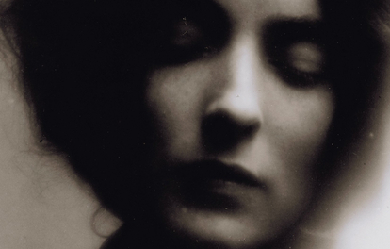
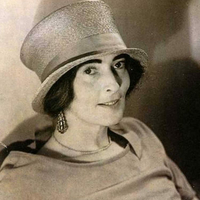
Mina Loy (born Mina Gertrude Löwy; 27 December 1882 – 25 September 1966), was a British artist, writer, poetess, playwright, novelist, futurist, feminist, designer of lamps, and bohemian. She was one of the last of the first generation modernists to achieve posthumous recognition. Loy was born in London. She was the daughter of a Hungarian Jewish father and an English Protestant mother. Loy’s first hobby was art. She studied painting in Munich at St. John’s Wood School in 1897 for two years.
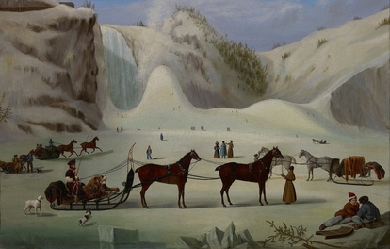
Rosanna Eleanor Leprohon (January 12, 1829– September 20, 1879), born Rosanna Eleanor Mullins, was a Canadian writer and poet. She was “one of the first English-Canadian writers to depict French Canada in a way that earned the praise of, and resulted in her novels being read by, both anglophone and francophone Canadians.”
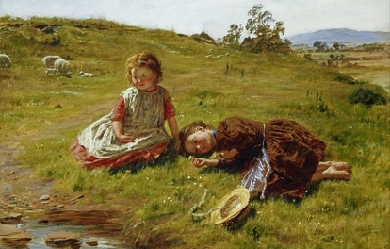
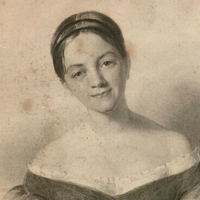
Letitia Elizabeth Landon (14 August 1802– 15 October 1838), English poet and novelist, better known by her initials L. E. L. Early life Letitia Elizabeth Landon was born on 14 August 1802 in Chelsea, London to John Landon and Catherine Jane, née Bishop. A precocious child, Landon learned to read as a toddler; an invalid neighbour would scatter letter tiles on the floor and reward young Letitia for reading, and, according to her father, “she used to bring home many rewards.” At the age of five, Landon began attending Mrs Rowden’s school at 22 Hans Place, which counted among its alumnae Mary Russell Mitford and Lady Caroline Lamb. The family moved to the country in 1809, so that John Landon could carry out a model farm project, and Landon was educated at home by her cousin Elizabeth from that point on. Elizabeth, though older, soon found her knowledge and abilities outstripped by those of her pupil: “When I asked Letitia any question relating either to history, geography, grammar - Plutarch’s Lives, or to any book we had been reading, I was pretty certain her answers would be perfectly correct; still, not exactly recollecting, and unwilling she should find out just then that I was less learned than herself, I used thus to question her: ‘Are you quite certain?’... I never knew her to be wrong.” When young, Letitia was very close to her younger brother, Whittington Henry, born 1804. Paying for Whittington through university (Worcester Colloege, Oxford) was one of the needs that drove Letitia to publish. She also supported his preferment and later dedicated her poem ‘Captain Cook’ to their childhood days together. Whittington went on to become a minister and published a book of Sermons in 1835. Sadly, he did not show any appreciation for all his sister’s financial assistance but spread false rumours about her marriage and death. Letitia also had a little sister, Elizabeth Jane (1806), who was a frail child and died in 1819, aged just 13. Little is known of Elizabeth but her death may well have left a profound impression on Letitia and it could be Elizabeth who is referred to in the poem ‘The Forgotten One’. Appearance and character The following statements from those who knew her give some idea of the woman known as L. E. L. Emma Roberts, from her introduction to “The Zenana and other works”: L.E.L. could not be, strictly speaking, called handsome ; her eyes being the only good feature in a countenance, which was, however, so animated, and lighted up with such intellectual expression, as to be exceedingly attractive. Gay and piquant, her clear complexion, dark hair, and eyes, rendered her, when in health and spirits, a sparkling brunette. The prettiness of L.E.L., though generally acknowledged, was not talked about ; and many persons, on their first introduction, were as pleasingly surprised as the Ettrick Shepherd, who, gazing upon her with great admiration, exclaimed “ I did na think ye had been sae bonny.” Her figure was slight, and beautifully proportioned, with little hands and feet ; and these personal advantages, added to her kind and endearing manners, rendered her exceedingly fascinating. William Jerdan, from his autobiography: In truth, she was the most unselfish of human creatures; and it was quite extraordinary to witness her ceaseless consideration for the feelings of others, even in minute trifles, whilst her own mind was probably troubled and oppressed; a sweet disposition, so perfectly amiable, from Nature’s fount, and so unalterable in its manifestations throughout her entire life, that every one who enjoyed her society loved her, and servants, companions, intimates, friends, all united in esteem and affection for the gentle and self-sacrificing being who never exhibited a single trait of egotism, presumption, or unkindliness! Mrs S.C. Hall from The Atlantic Monthly: Perhaps the greatest magic she exercised was, that, after the first rush of remembrance of all that wonderful young woman had written had subsided, she rendered you completely oblivious of what she had done by the irresistible charm of what she was. You forgot all about her books,—you only felt the intense delight of life with her ; she was penetrating and sympathetic, and entered into your feelings so entirely that you wondered how 'the little witch’ could read you so readily and so rightly,—and if, now and then, you were startled, perhaps dismayed, by her wit, it was but the prick of a diamond arrow. Words and thoughts that she flung hither and thither, without design or intent beyond the amusement of the moment, come to me still with a mingled thrill of pleasure and pain that I cannot describe, and that my most friendly readers, not having known her, could not understand. Mrs A.K.C. Elwood from her Memoirs of Literary Ladies: It was her invariable habit to write in her bed-room,—"a homely-looking, almost uncomfortable room, fronting the street, and barely furnished—with a simple white bed, at the foot of which was a small, old, oblong-shaped sort of dressing-table, quite covered with a common worn writing-desk, heaped with papers, while some strewed the ground, the table being too small for aught besides the desk. A little high-backed cane chair, which gave you any idea but that of comfort, and a few books scattered about, completed the author’s paraphernalia.” Emma Roberts again: She not only read, but thoroughly understood, and entered into the merits of every book that came out ; while it is merely necessary to refer to her printed works, to calculate the amount of information which she had gathered from preceding authors. The history and literature of all ages and all countries were familiar to her ; nor did she acquire any portion of her knowledge in a superficial manner ; the extent of her learning, and the depth of her research, manifesting themselves in publications which do not bear her name ; her claim to them being only known to friends, who, like myself, had access to her desk, and with whom she knew the secret might be safely trusted. One aspect that is common to all accounts of those who knew Miss Landon is that she possessed an exceptionally high level of intelligence. Fredric Rowton in his 'The Female Poets of Great Britain’ puts it thus: Of Mrs. Maclean’s genius there can be but one opinion. It is distinguished by very great intellectual power, a highly sensitive and ardent imagination, an intense fervour of passionate emotion, and almost unequalled eloquence and fluency. Of mere art she displays but little. Her style is irregular and careless, and her painting sketchy and rough: but there is genius in every line she has written. (Like many others, Rowton is deceived by the artistry of Landon’s projection of herself as the improvisatrice, L. E. L. As Glennis Stevenson writes, few poets have been as artificial as Landon in her 'gushing stream of Song’. She cites the usage of repetition, mirroring and the embedding of texts amongst the techniques that account for the characteristic intensity of Landon’s poetry.) Literary career An agricultural depression soon followed, and the family moved back to London in 1815, where John Landon made the acquaintance of William Jerdan, editor of the Literary Gazette. According to 19th-century commentator Mrs A. T. Thomson, Jerdan took notice of the young Landon when he saw her coming down the street, “trundling a hoop with one hand, and holding in the other a book of poems, of which she was catching a glimpse between the agitating course of her evolutions.” Jerdan encouraged Landon’s poetic endeavors, and her first poem was published under the single initial “L” in the Gazette in 1820, when Landon was 18. The following year, with financial support from her grandmother, Landon published a book of poetry, The Fate of Adelaide, under her full name. The book met with little critical notice but sold well; Landon, however, never received any profits, as the publisher went out of business shortly thereafter. The same month that The Fate of Adelaide appeared, Landon published two poems under the initials “L.E.L.” in Gazette; these poems, and the initials under which they were published, attracted much discussion and speculation. As contemporary critic Laman Blanchard put it, the initials L.E.L. “speedily became a signature of magical interest and curiousity.” Bulwer Lytton wrote that, as a young college student, he and his classmates would rush every Saturday afternoon for the ‘Literary Gazette,’ [with] an impatient anxiety to hasten at once to that corner of the sheet which contained the three magical letters L.E.L. And all of us praised the verse, and all of us guessed at the author. We soon learned it was a female, and our admiration was doubled, and our conjectures tripled.” Landon served as the Gazette’s chief reviewer as she continued to write poetry; her second collection, The Improvisatrice, appeared in 1824. Landon’s father died later that year, and Landon was forced to use her writing to support both herself and her family; Contemporaries saw this profit-motive as detrimental to the quality of Landon’s work. Mary Mitford claimed that the novels of Catherine Stepney were honed and polished by Landon. By 1826, Landon’s high reputation began to suffer as rumours circulated that she had had affairs or secretly borne children. (In 2000, scholar Cynthia Lawford published an article in the London Review of Books citing birth records implying that Landon had in fact borne children in the 1820s from a secret affair with Jerdan.) Details of Letitia’s children by William (Ella, Fred and Laura) and their descendants can be found in Susan Matoff Landon continued, however, to publish poetry, and in 1831 she published her first novel, Romance and Reality. She became engaged to John Forster. Forster became aware of the rumours regarding Landon’s sexual activity, and asked her to refute them. Landon responded that Forster should "make every inquiry in [his] power," which Forster did; after he pronounced himself satisfied of Landon’s purity, however, Landon broke off their engagement. To him, she wrote: The more I think, the more I feel I ought not– I can not– allow you to unite yourself with one accused of - I can not write it. The mere suspicion is dreadful as death. Were it stated as a fact, that might be disproved. Were it a difficulty of any other kind, I might say, Look back at every action of my life, ask every friend I have. But what answer can I give ...? I feel that to give up all idea of a near and dear connection is as much my duty to myself as to you... Privately, however, Landon stated that she would never marry a man who had mistrusted her. In a letter to Bulwer Lytton, she wrote that “if his future protection is to harass and humiliate me as much as his present - God keep me from it... I cannot get over the entire want of delicacy to me which could repeat such slander to myself.” After this, Landon began to "[talk] of marrying any one, and of wishing to get away, from England, and from those who had thus misunderstood her." In October 1836, Landon met George Maclean, governor of the Gold Coast (now Ghana), at a dinner party, and the two began a relationship. Maclean, however, moved to Scotland early the following year, to the surprise and distress of Landon and her friends. After much prodding, Maclean returned to England and he and Landon were married shortly thereafter, on 7 June 1838. The marriage was kept secret, and Landon spent the first month of it living with friends. Emma Roberts writes of Mr Maclean: “No one could better appreciate than L.E.L. the high and sterling qualities of her lover’s character, his philanthropic and unceasing endeavours to improve the condition of the natives of Africa ; the noble manner in which he interfered to prevent the horrid waste of human life by the barbarian princes in his neighbourhood ; and the chivalric energy with which he strove to put an end to the slave-trade. L.E.L. esteemed Mr. Maclean the more, in consequence of his not approaching her with the adulation with which her ear had been accustomed, to satiety ; she was gratified by the manly nature of his attachment. Possessing, in her estimation, merits of the highest order, the influence which he gained over her promised, in the opinion of those who were best acquainted with the docility of her temper, and her ready acquiescence with the wishes of those she loved, to ensure lasting happiness.” In early July, the couple sailed for Cape Coast, where they arrived on 16 August. Two months later, on 15 October, Landon was found dead, a bottle of prussic acid in her hand. However, that she was poisoned thereby was a gross assumption. There is ample evidence that she showed symptoms of Stokes-Adams syndrome for which the dilute acid was taken as a remedy. No autopsy was carried out and from the eye-witness accounts it seems, in retrospect, almost certain that Mrs McLean suffered a fatal convulsion. Her death was therefore from natural causes, causes that were independent of her location. In addition to the works listed below, Miss Landon is known to be responsible for innumerable anonymous reviews and other articles whose authorship is unlikely ever now to be established (compare Emma Roberts above). She also assumed the occasional pseudonym: for one, she adopted the name Iole for a period through 1826. One of her Iole poems, The Frozen Ship, was later included in the collection, The Vow of the Peacock. Among the poets of her time to recognise and admire her were Elizabeth Barrett Browning, who wrote “L.E.L.'s Last Question” in homage, and Christina Rossetti, who published a tribute poem entitled “L.E.L” in her 1866 volume “The Prince’s Progress and Other Poems.” Reputation Her reputation, while high in the 19th century, fell during most of the 20th as literary fashions changed and Landon’s poetry was perceived as overly simple and sentimental. In recent years, however, scholars and critics have increasingly studied her work, beginning with Germaine Greer in the 1970s. Critics such as Isobel Armstrong argue that the supposed simplicity of poetry such as Landon’s is deceptive, and that women poets of the 19th century often employed a method of writing which allows for multiple, concurrent levels of meaning. Moreover, 20th century opinions were perhaps influenced by the almost completely inaccurate picture of the poet and her life that built up following her death. It was not considered that the very bases for such criticism had already been systematically and effectively demolished by Sarah Sheppard in her “Characteristics of the Genius and Writings of L E L” of 1841. Any assessment should not forget the factors that brought Landon to pre-eminence: the originality of her ideas and the sheer beauty of her poetry in all its many diverse forms. Those ideas engendered a whole new school of poetry (the 'Landon School’), which spread not only in England but also in America.


John Winston Lennon (9 October 1940 – 8 December 1980) was an English singer and songwriter who rose to worldwide fame as a co-founder of the Beatles, the most commercially successful band in the history of popular music. With fellow member Paul McCartney, he formed a celebrated songwriting partnership.
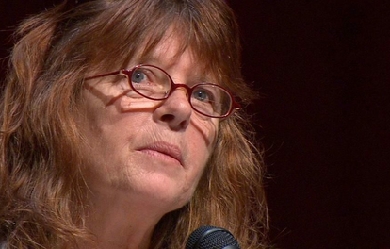
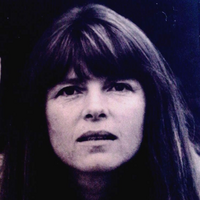
Dorianne Laux (born January 10, 1952 in Augusta, Maine) is an American poet. Biography Laux worked as a sanatorium cook, a gas station manager, and a maid before receiving a B.A. in English from Mills College in 1988. Laux taught at the University of Oregon. She is a professor at North Carolina State University’s creative writing program, and the MFA in Writing Program at Pacific University. She is also a contributing editor at The Alaska Quarterly Review. Her work appeared in American Poetry Review, Five Points, Kenyon Review, Ms., Orion, Ploughshares, Prairie Schooner, Southern Review, TriQuarterly, Zyzzyva. She has also appeared in online journals such as Web Del Sol. Laux lives in Raleigh, North Carolina with her husband, poet Joseph Millar. She has one daughter.
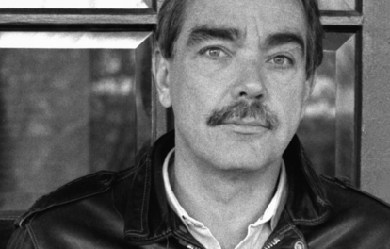
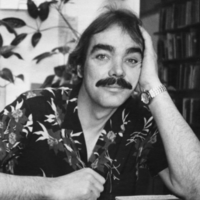
Larry Patrick Levis (September 30, 1946– May 8, 1996) was an American poet. Youth and education Larry Levis was born the son of a grape grower; he grew up driving a tractor, picking grapes, and pruning vines of Selma, California, a small fruit-growing town in the San Joaquin Valley. He later wrote of the farm, the vineyards, and the Mexican migrant workers that he worked alongside. He also remembered hanging out in the local billiards parlor on Selma’s East Front Street, across from the Southern Pacific Railroad tracks. Levis earned a bachelor’s degree from Fresno State College in 1968, a master’s degree from Syracuse University in 1970, and a Ph.D. from the University of Iowa in 1974. Awards and recognition Levis won the United States Award from the International Poetry Forum for his first book of poems, Wrecking Crew (1972), which included publication by the University of Pittsburgh Press. The Academy of American Poets named his second book, The Afterlife (1976) as Lamont Poetry Selection. His book The Dollmaker’s Ghost was a winner of the Open Competition of the National Poetry Series. Other awards included a YM-YWHA Discovery award, three fellowships in poetry from the National Endowment for the Arts, a Fulbright Fellowship, and a 1982 Guggenheim Fellowship. His poems are featured in American Alphabets: 25 Contemporary Poets (2006) and in many other anthologies. Larry Levis died of a heart attack in Richmond, Virginia on May 8, 1996, at the age of 49. Academic career Levis taught English at the University of Missouri from 1974–1980. From 1980 to 1992, he taught at the creative writing program at the University of Utah. He was co-editor of Missouri Review, from 1977 to 1980. He also taught at the Warren Wilson College MFA Program for Writers. From 1992 until his death from a heart attack in 1996 he was a professor of English at Virginia Commonwealth University, which annually awards the Levis Reading Prize in his remembrance (articles about Levis and the prize are featured each year in Blackbird, an online journal of literature and the arts). Selected bibliography * Poetry * Wrecking Crew (1972) * The Afterlife (1977) * The Dollmaker’s Ghost (1981) * Winter Stars (1985) * The Widening Spell of the Leaves (1991) * Elegy (1997) * The Selected Levis (2000) * Prose * The Gazer Within (2000) * Fiction * Black Freckles (1992) References Wikipedia—https://en.wikipedia.org/wiki/Larry_Levis
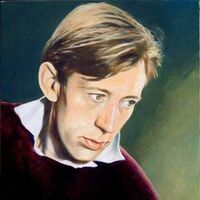
Laurence Edward Alan "Laurie" Lee, MBE (26 June 1914 – 13 May 1997) was an English poet, novelist, and screenwriter, raised in the village of Slad, and went to Marling School, Gloucestershire. His most famous work was an autobiographical trilogy which consisted of Cider with Rosie (1959), As I Walked Out One Midsummer Morning (1969) and A Moment of War (1991). The first volume recounts his childhood in the Slad Valley. The second deals with his leaving home for London and his first visit to Spain in 1935, and the third with his return to Spain in December 1937 to join the Republican International Brigades.

